Cookie policy


North Korea Tour: Traveling Inside the DPRK
By: Author Freddy Lansky
Posted on Last updated: September 26, 2021
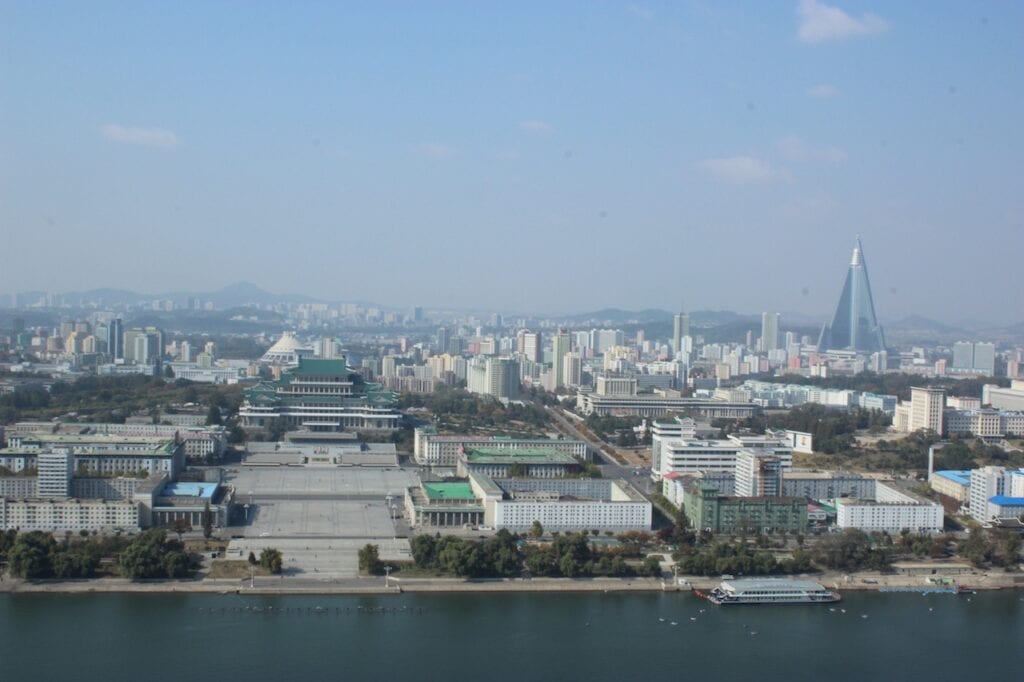
“North Korea, North Korea? Why on god's green earth would you go on a North Korea tour? Why not Australia, or Hawaii, or something like that, but North Korea? What is wrong with you, man?” exclaimed one friend.
“Is North Korea safe to visit,” exclaimed another.
The question of why I was there was on my mind before the trip and during the first few days.
2020 Update – Why I didn't finish publishing this article in 2013.
I took this trip to the DPRK (as North Korea is also known) in October 2013.
I started writing this article shortly after the trip but then decided not to finish and publish it for many reasons.
The main reason was even if you try not to “be political” about a visit to North Korea, the fact is the very act of going is “political,” and I just didn't want to get that kind of attention.
However, I don't plan on going on a tour anytime soon with world travel shutdown due to Coronavirus and my adventure travel days mostly behind me (I went when I was 27, I'm 34 now).
Americans are banned from visiting North Korea by American law as of 2017 anyway.
Another reason for writing this is that in 2019 I started a Points and Credit Card Blog and moved into the travel space on my own. I now want the exposure that such an article would bring.
My goal in this post is to educate you on my experience, what I saw firsthand, and give you an idea of what to expect when going on an organized North Korea tour.
To be clear about the political ramifications or my opinions about visiting: I wouldn't have seen or known enough from a five-day propaganda tour to use such a trip to make any real commentary on the political situation anyways.
I would just be regurgitating whatever I heard on the news or media, which is pointless.
My goal here is only to share my experience.
Most videos and articles I've seen reviewing a North Korean tour tend to skew either on the side of making a propaganda fluff piece for the country or against it.
I'm trying to avoid both and simply provide an account of what I saw.
Table of Contents
Why travel to North Korea?
What type of traveler visits dprk, what tour company did you use, so, americans can visit north korea 2017 update: no, warning for usa visa waiver countries, can you visit north korea on your own, how do you get to north korea, beijing before the tour, check-in at beijing airport, air koryo review: a 1-star airline, pyongyang airport, the yanggakdo hotel, the rooms in the yanggakdo, pyongyang: an extremely clean city, pyongyang tourist sites, other places we visited in dprk, what was the food and drink like, partying in north korea, can you go to the north korean border with china, dandong to incheon, south korea by ferry, did you get a chance to talk and interact with any locals besides your guides, are a lot of the places you go to complete farces, setups, or just 100% propaganda, what about conversations with your guides, and the posters and speakers, what about anti-usa billboards and propaganda, how much does a north korea tour cost, is north korea safe to visit, and would you recommend going, about the author, frequently asked questions.
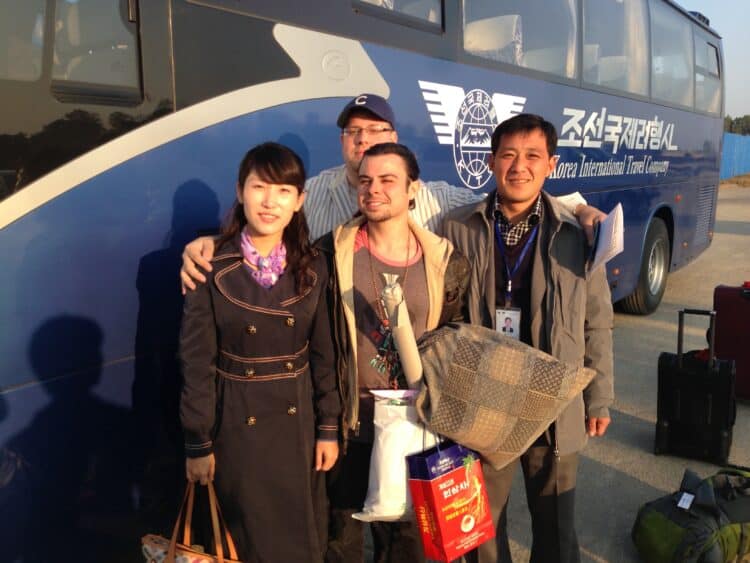
To get us started, I'll answer my friend's question “why not Hawaii or Australia?”
Since I work online and travel for fun, and all of the places I've been in 2012/13 are about sun, sand, and surf, I wanted to do something a little different.
News about the loosening of travel restrictions for tourism by the new leader, Kim Jong Un, has been spreading around the backpacking community for the last year.
You can now visit any time of the year, visit many cities and sites that were previously inaccessible, and they don’t search your bags or take your phones.
I discovered the rumor that you have a lot more personal freedom than what a tourist could've expected a few years ago was correct.
It fascinated me how North Korea has been hermetically sealed off for nearly 60 years and is only now just starting to open up.
I wanted to see what it was like for myself. This is probably the main reason most of the other travelers joined the tour.
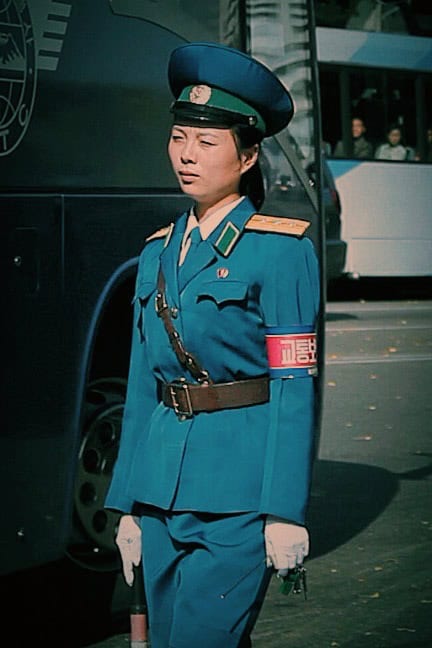
The thought of seeing what a bonafide communist country looked like seemed to be the closest thing to time travel that the world could offer. That alone, for me, was reason enough to go.
The final nail in the coffin was meeting a guy at a weekly Couchsurfing meet-up in Atlanta who told me all about his trip to North Korea, showing me all the pictures and telling me how incredible it was.
Jealousy finally got the best of me, and I said, “fuck it, I am going to North Korea and booking my flight tonight,” and I did.
I got a lot more out of the trip and learned a lot more about myself, the world we live in, and North Korea than I ever expected.
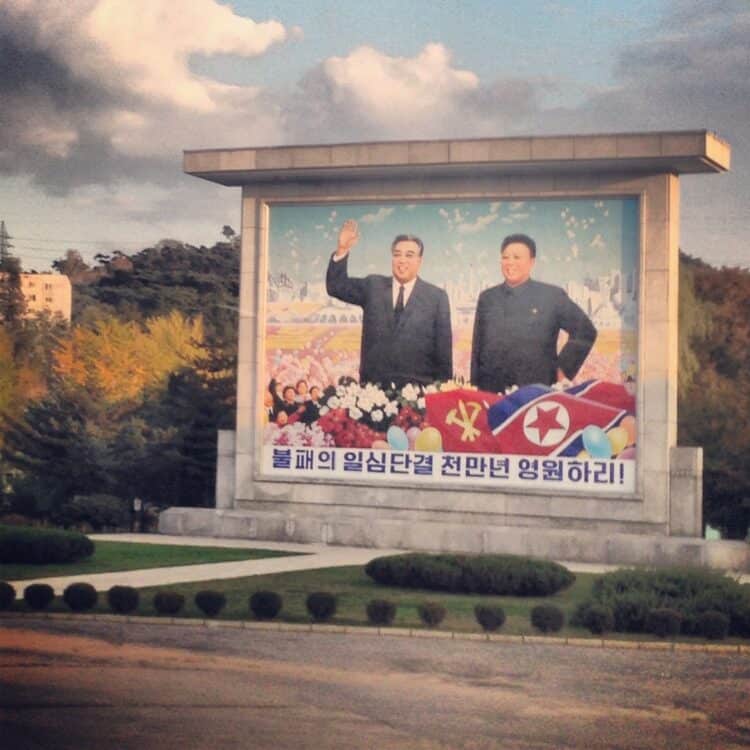
Well, besides Dennis Rodman…but I digress.
Everyone in our tour group was a hardcore travel junkie, like mega-hardcore travel junkie, like “the only purpose I have in life is to travel my ass off” type people.
Obviously, I hit it off almost right away with everyone on the trip.
The group was almost exclusively male between the ages of 23 and 38. The largest group of visitors to North Korea is Chinese, followed by Americans.
Yup, Americans were the #2 most common nationality for North Korean tourism until banned in 2017.
In our group, there were also a few Polish guys, one hilarious Russian dude, and a few Canadians, but about half our tour group, including our guide, was American.
There used to be only one tour company that offered tours to North Korea, Koryo Tours, which still operates and has the most pristine reputation.
Since then, many tour companies have moved into North Korean tourism.
The company I used is the only company that caters exclusively to backpackers, Young Pioneers Tours , or YPT as they are frequently known.
They cater mainly to the 20s to early 40s crowd.
The idea of traveling to North Korea with a group of people my own age instead of with a bunch of seniors also got me more interested.
Almost everyone had visited dozens of other countries, and virtually everyone in the group spoke at least three languages and lived abroad at least once.
As of the time I went, October 2013, Americans were allowed into North Korea with no problem with either American law or North Korean law.
Before 2012, Americans were not permitted by the North Koreans to visit for tourism purposes.
In Sept 2017, the Donald Trump administration banned Americans from visiting North Korea.
So as you can see, there was only a 4-5 year window between the time that North Korea allowed Americans to the time the US Department of State shut down tourism to North Korea.
If I ever end up in legal trouble from this point, I want to emphasize: my visit was legal, according to both countries at the time (2013).
But if you are an American going now, even if you go on another passport, you are putting yourself at tremendous risk of falling afoul of US law as of 2020. Don't do it!
2020 Update: due to the pandemic, the North Korea borders are completely shut , including to tourists probably until at least 2021.

As of 2019, if you belong to any country on the USA Visa Waiver Program such as the UK, Australia, France, or Chile and have visited North Korea anytime since 2011, you will no longer be eligible for a visa waiver and will have to apply for a US Visa.
For citizens who live in those countries, would US immigration authorities ever know you went if you don't make a stink about it on social media and keep a low profile?
They probably would not, BUT you'd be taking the risk of being denied admission to the United States and having to apply for a regular visa for every visit.
Even once the COVID-19 pandemic ends, you should not travel to North Korea if you are in one of the 38 countries on the Visa Waiver Program and plan on ever visiting the United States. At least until the law changes.
This is not a complete list of the legal and political ramifications you may have from visiting North Korea.
Each country has its own rules regarding North Korea, but generally speaking, if you are not American and not in one of the 38 Visa Waiver Countries with plans to visit ever visit the US, you shouldn't have issues with your home country.
However, you'd still need to wait until North Korea opens its borders as they are closed to tourism for the indefinite future due to the pandemic.
Also, if you are a dual citizen of South Korea and another country and go to North Korea without prior authorization on your other passport, you could land yourself in hot water in South Korea.
If you have South Korean nationality, don't live in South Korea, and enter North Korea on another passport, I would advise you not to tell anyone on the tour you are South Korean.
Unless you are perhaps a Chinese, Russian, or Malaysian in the DPRK on business, virtually nobody can enter North Korea without a guide.
I should make it clear at this point that independent travel to North Korea by westerners is still not allowed.
You have to go through an independent tour company that works closely with the DPRK government’s tourism arm known as the KITC (Korean International Tour Company).
The tour companies and guides want to give you the best trip possible, but they have to work within the restrictions of KITC.
Although those restrictions have loosened in recent years, they're still very strict.
If you don't want to go on a guided North Korea tour, you may be able to hire a private guide for a custom itinerary, but this is very expensive, and you'd still be very limited on what you can do.
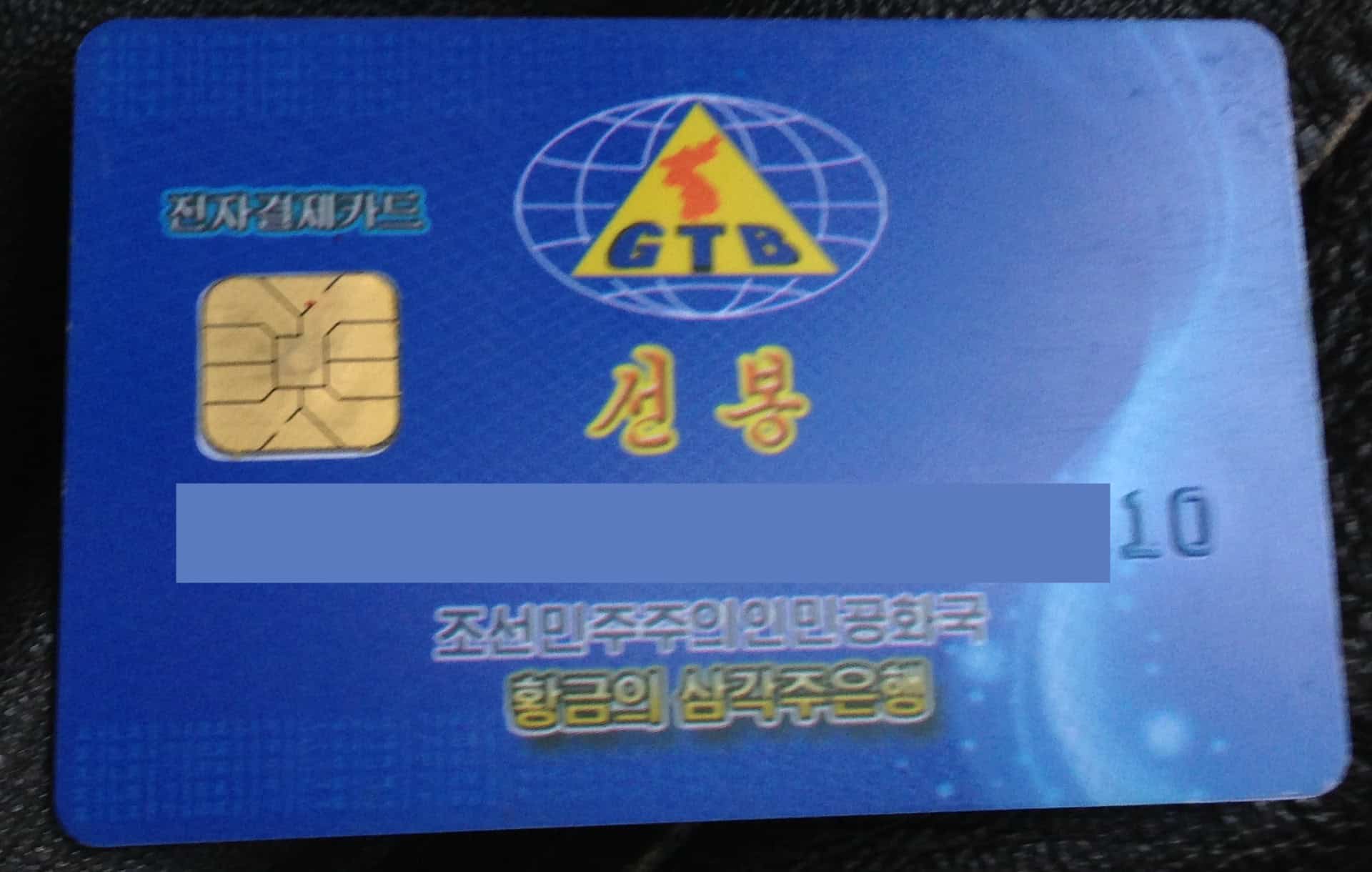
Getting to North Korea can range from slightly difficult to logistical nightmare.
The hardest part of any trip to Asia is getting a Chinese visa, but I already knew this since I’d been to China before.
You have to get a Chinese Visa to go to the DPRK because all DPRK tours start and end in China.
Most DPRK and Chinese tour companies will tell you getting a Chinese visa is a “piece of cake” and can easily handle it yourself. That is a bit of an exaggeration.
Getting a Chinese visa can range from slightly difficult to a colossal pain in the ass, especially if your city doesn’t have a Chinese Consulate, Embassy, or Visa Office.
You have a lot of forms to fill out, and you also have to give the consulate:
- scans of your full itinerary
- two passport photos
- proof of a plane ticket in and out of China
- proof you have enough money to support yourself
- color copy of your passport
If you’ve visited China before, they’ll need a copy of the visa from your previous trip, even if it’s on an expired passport.
You’ll also have to explain to the consulate/embassy why you’ll need a double-entry visa.
Other than that, you also have to apply for a North Korean visa through your tour company.
You'll need to pay for the tour with a bank transfer.
If you don't want to deal with all the logistical mess, you can pay various “passport agencies” to deal with all the hassle of getting the Chinese visa for a fee.
Other than that you have a few small forms to fill out for the North Korean visa.
2018 Update: China now has a 72-144 hour visa waiver program for many western nationalities that you can use to go to North Korea as long as you don't spend more than 72 hours in China on either side of your trip.
2020 Update: This program is paused due to the COVID-19 pandemic, it remains to be seen if they will reactivate it anytime soon.
You’ll also need to book your round trip plane ticket to Beijing on your own.
However, hard work brings the most delicious rewards: five days of access to the most secretive nation on earth.
The Tour Experience
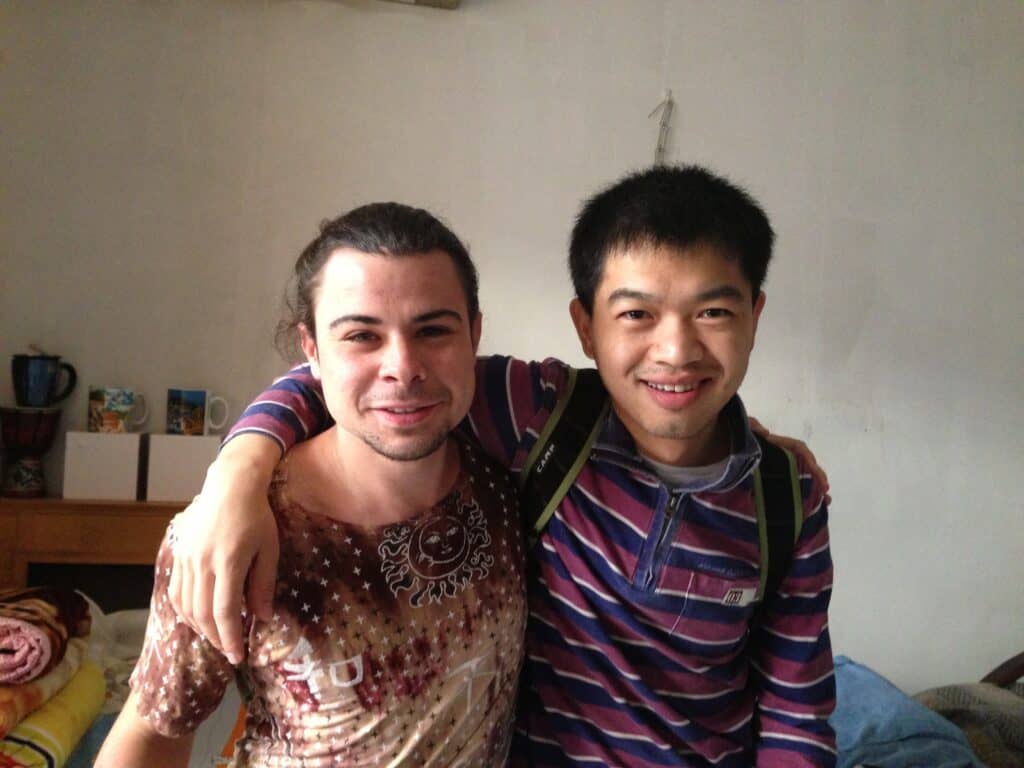
Virtually all tours start in Beijing, where you can either fly or take the train into Pyongyang.
The day before the tour, there is a meeting where your guide will give you your DPRK visas and a brief rundown on taboos to avoid while in the country and other vital information.
Part of the experience of going to North Korea is taking the train.
Unfortunately, Americans were not allowed to take the train at the time I did the tour. I had to fly in from Beijing Airport.

Check-in at Beijing Airport was uneventful; the process was similar to any other commercial flight.
As we reached the terminal where we were taking off, I quickly realized tourists only account for maybe 25% of the passengers.
The majority of the passengers seemed to be either diplomats or high level North Korean politicians.
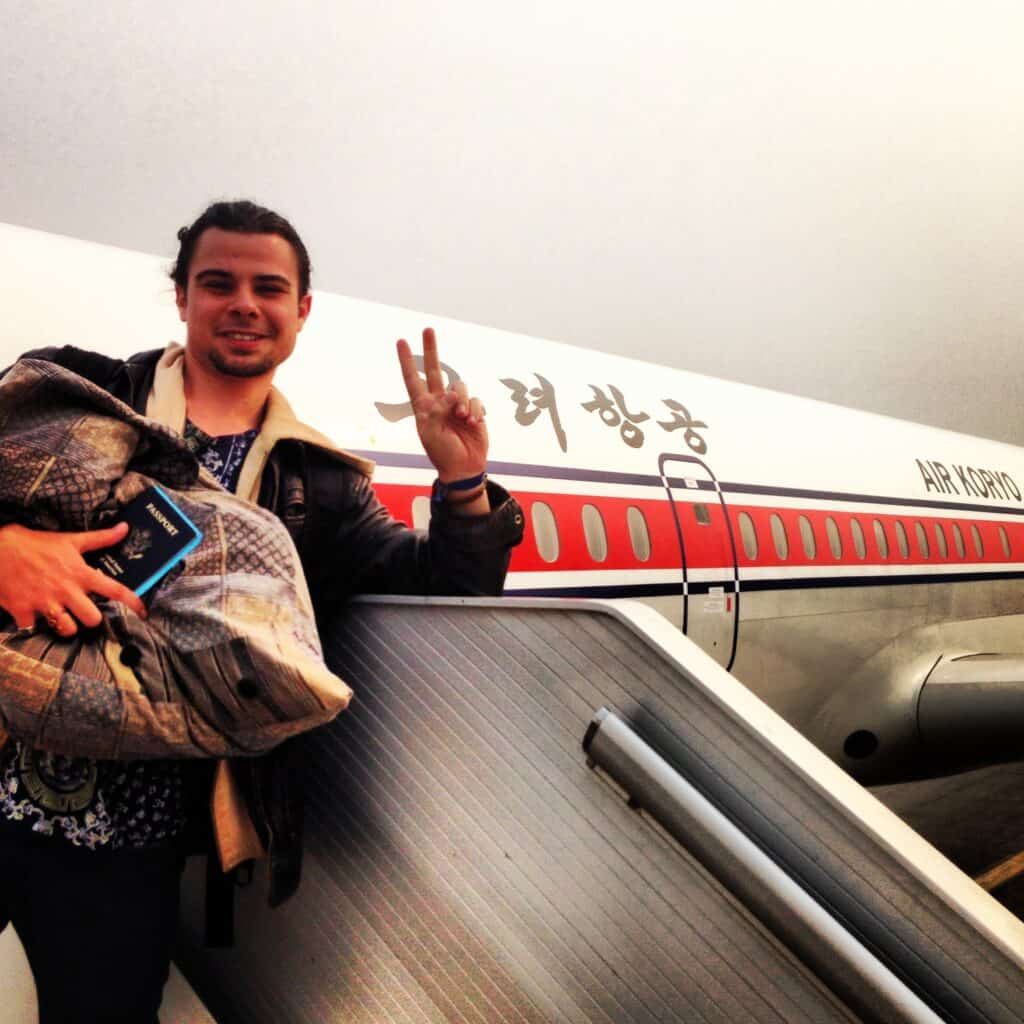
Despite being the world's only 1-star airline, I found the plane and service to be fine.
If you are an aviation geek, DPRK would be heaven as Air Koryo uses a bunch of older aircraft that are no longer in use for passenger service outside of the country.
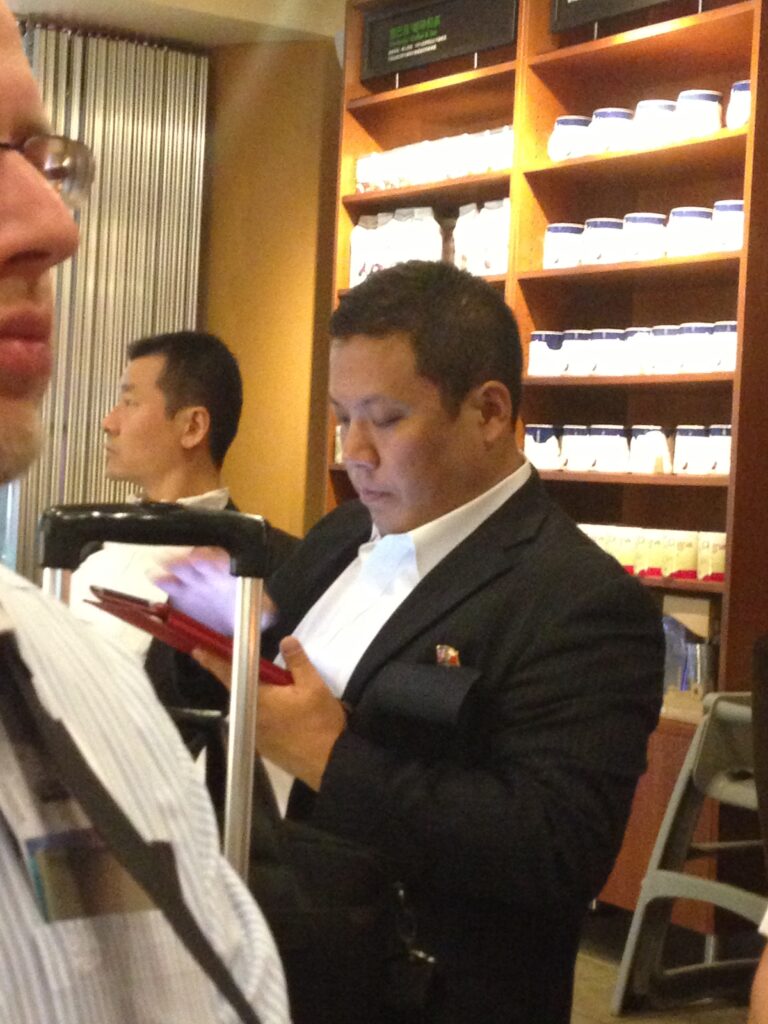
They served us a small meal and a beer and handed us a magazine filled with propaganda.
The “in-flight entertainment” on the overhead screen was various tracks from the Moranbong band .
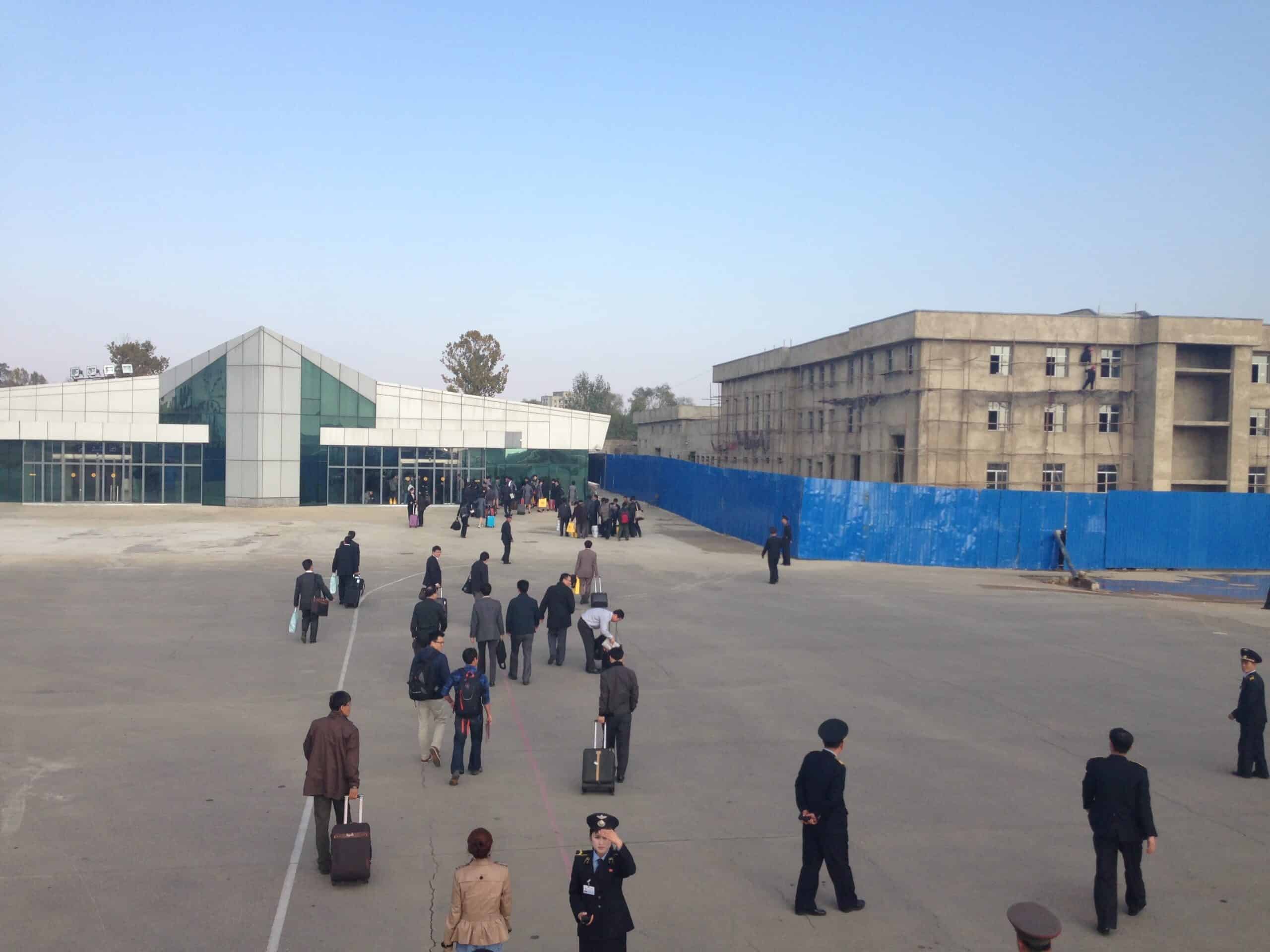
I don't have much to say about the new Pyongyang airport in the DPRK.
When I was there in 2013, the old airport had been torn down, and the “airport” was nothing more than a landing strip with a small one-room makeshift building.
The new airport was still under construction. I've since heard it's quite nice and up to international standards.
We stayed at the 4-star Yankkhado Hotel, which is the most popular hotel for foreigners.
95% or more of foreign tourists stay in either the Yanggakdo Hotel or the more upscale “5-star” Koryo Hotel.
There are other hotels, but they are mainly for Chinese travelers as I think these are the only two hotels in Pyongyang that have the basic amenities a foreigner would expect.
But I could be wrong. Let me know in the comments!
The Yanggakdo Hotel is located on an island in the middle of the Taedong River. You can go outside, but you are not allowed to leave the island alone.
Legend has it (jokingly) that they have filled the river with sharks !
There are many myths and legends about the Yanggakdo Hotel, especially some “ secret floors ,” which I won't get into in this article.

The rooms were simple enough; they looked like any 3-star hotel would, but with a retro look and feel, including a radio I couldn't figure out how to work.
According to urban legend, they're bugged, but I doubt we were important enough for them to bother listening in on our rooms.
One of the most striking things is when you turn on the TV there is only one local channel, Koryo TV.
In the hotel, there were a few foreign channels, but I'm told outside of hotels with tourists, the only station is Koryo TV.
This channel is pretty much nothing but a reporter droning on and on for hours about the current and past exploits of Kim Il Sung, Kim Jong Il, and his son and the current leader of the DPRK, Kim Jong Un.
Once you arrive at the hotel from the airport and turn on the TV and see this, it hits you that you are really in North Korea!
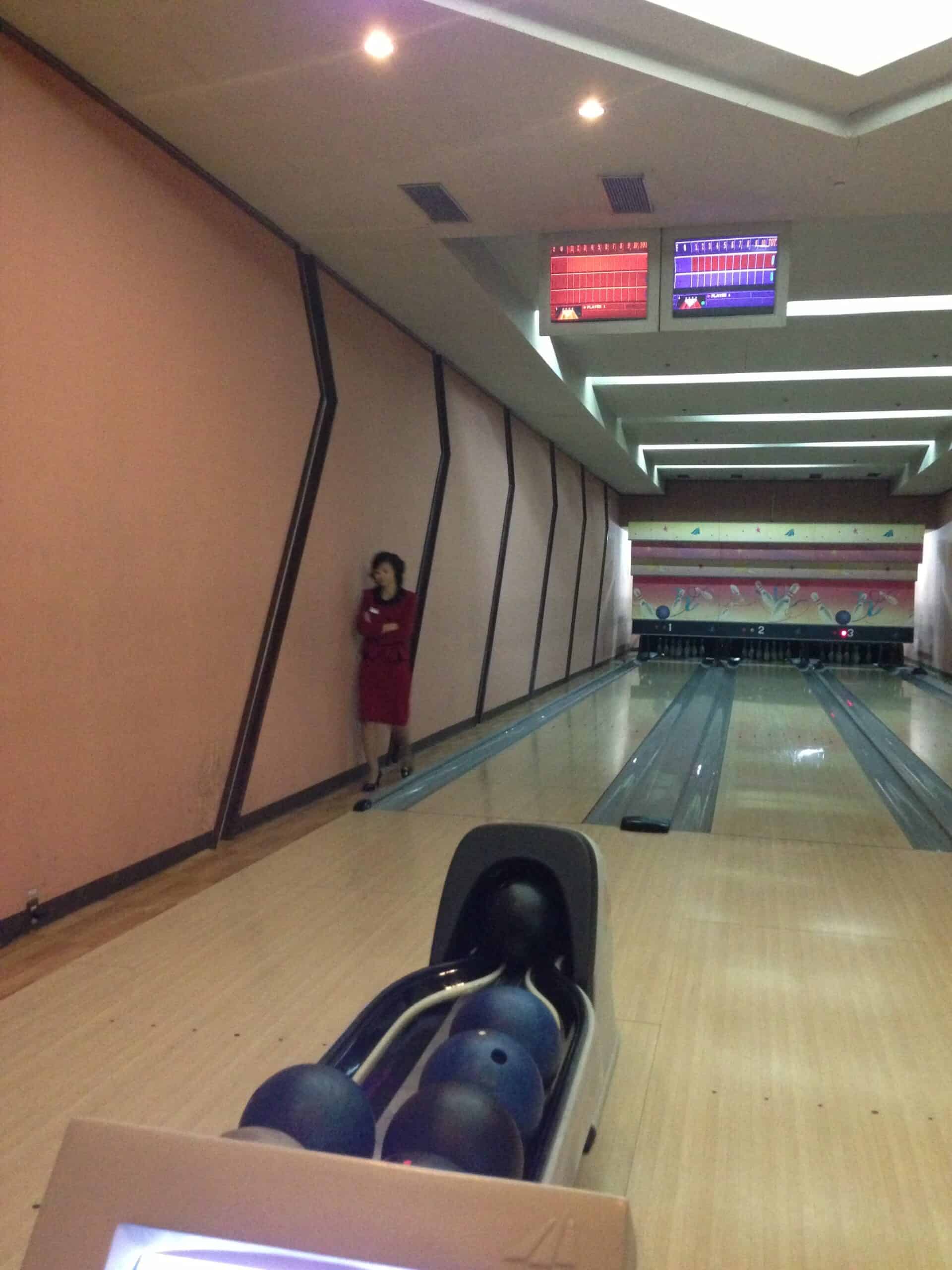
The Yanggakdo Hotel has a bowling alley downstairs.
That is probably the most important thing you need to know as you’ll spending plenty of nights down there bowling and laughing with chain-smoking Chinese business people.
(Many Chinese are now doing business in Pyongyang and starting companies in North Korea.)
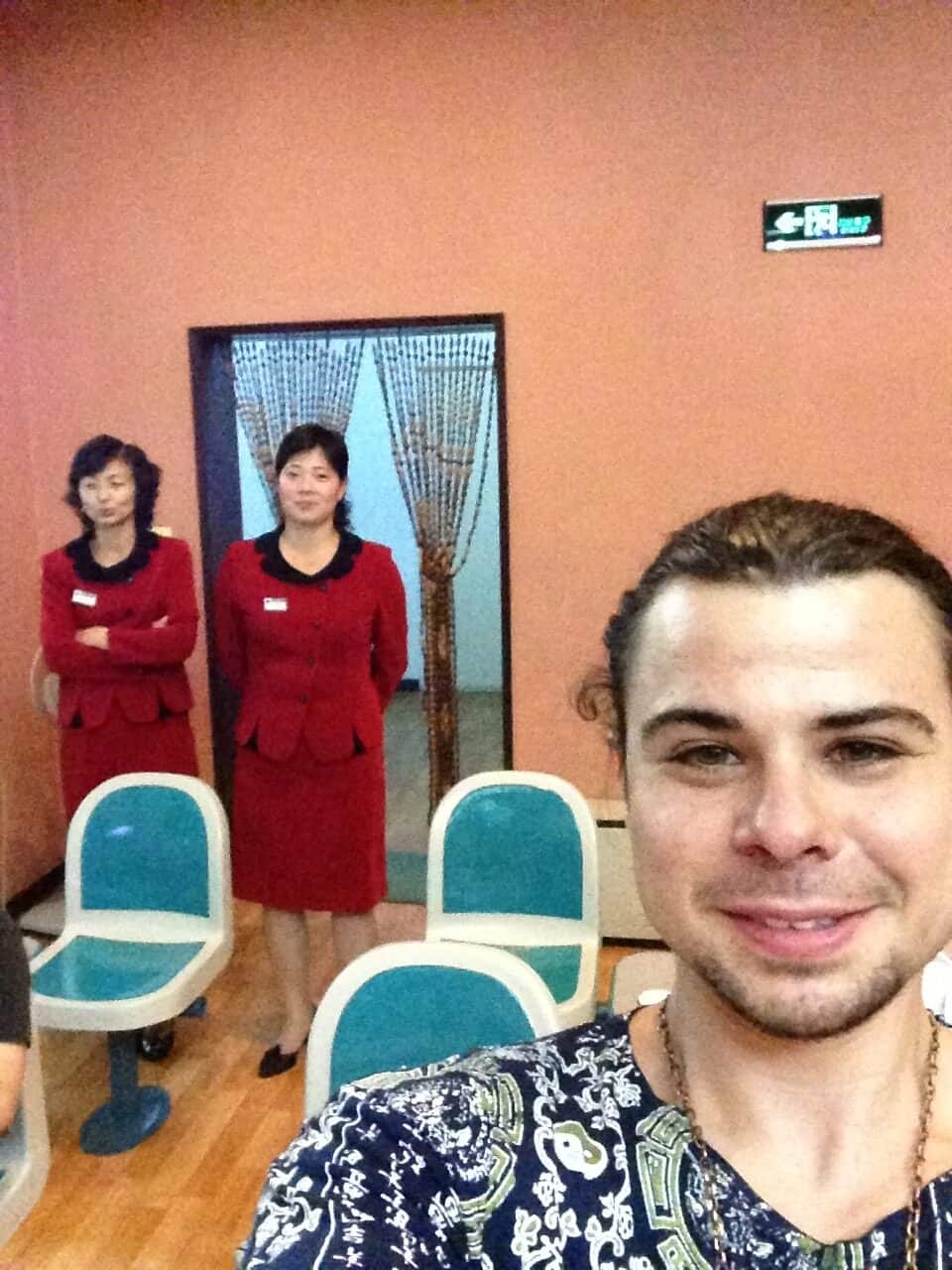
There is also a sketchy casino downstairs.
And a rather famous turtle in the lobby that is in way too small a tank for his size. It's left to just swim aimlessly back and forth.
There is a brewery on the premise that offers the most delicious beer.
Virtually every place we went to had its own brewery and tanks.
The Democratic People’s Republic of Korea does not play around when it comes to their beer.
There is no wifi anywhere in the country as of the time I went, but you can send or receive an email for a whopping $2-$5 each.
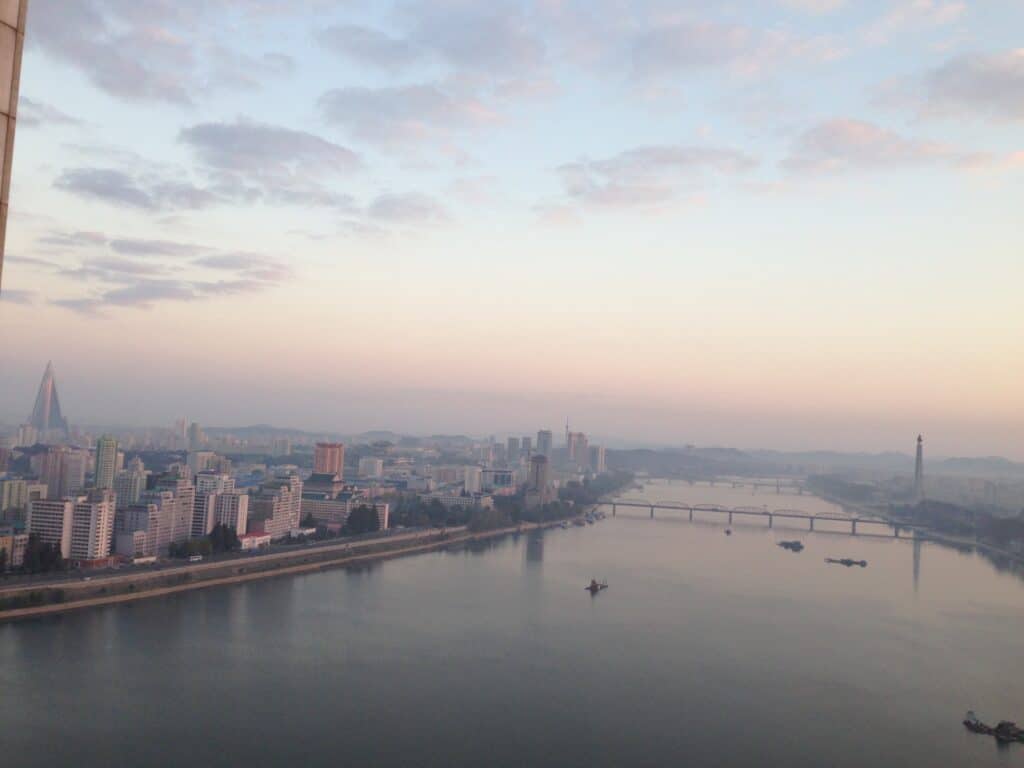
The rooms were nice enough, but we hardly spent any time in them.
The view from our 28th-floor room was incredible, though.
The hotel has around 48 floors, but as far as I could tell was empty.
Everywhere we went felt empty and as though things were “turned on” just for us much of the time.
The first thing you’ll notice almost right away is that Pyongyang is probably the most beautiful city in Northeast Asia.
The water and air are clean, there is an absurd amount of green space, and the lack of heavy traffic and corporate signage everywhere is a welcome break from places like Beijing and Seoul .
Note: this is starting to change as much to my surprise there were quite a few cars during rush hour, and we did see some advertisements for a car company.
There is also virtually no trash in the city, at least in the parts we went through.

After studying where we were taken when writing this article, I realized I only saw a tiny section of Pyongyang.
Still, even when leaving town, it didn't seem like the non-touristy parts we passed were much different.
It seemed like everyone in the city has their basic needs taken care of, and you didn't see any poverty or homelessness.
One should keep in mind, however, that Pyongyang is supposedly reserved for the most connected and loyal 10% of North Koreas in the country (at least that's what the media says, I have no way of confirming this or not).
Where do you go on a North Korea tour?
I chose to do the Political Interest Tour (note: the tour has changed a bit since 2013 to the current time this article is being published in 2020).
These days, itineraries are pretty flexible, and there are plenty to choose from.
Still, virtually all tours will include:
- Various monuments in Pyongyang
- Children’s Palace, where you’ll see a performance from North Korean’s most gifted children
- The nearby town of Kaesong (probably)
The remaining sites depend on the “theme” of your itinerary and may change depending on conditions.
Things we got to do that were unique to our trip, for example, were a visit to a steel factory and riding roller coasters with some North Korean soldiers (surely something I won’t forget).
But your trip might include other sites and activities unique to your visit.
Truth be told, all tour companies such as Koryo and YPT try to make it sound like every tour is unique and different, but about 75-80% of the tour is fixed to particular destinations such as Kaesong City, the DMZ, and the main sites and monuments in Pyongyang.
My tour visited the main sites in Pyongyang, Kaesong City, and the DMZ.
Unique to our tour was a visit to a farm and steel factory in the seaside village of Nampho (also spelled Nampo) where most tourists usually don't go.
I won't bore you with every single detail, but here is a rough itinerary of the most interesting places we visited.
Virtually every visit begins with a Korean lady dressed in traditional clothing.
She comes out to tell you how many times Kim Il Sung and Kim Jong Il visited the factory, museum, hospital, etc. you are currently visiting and how their advice helped improve it.
Then the lady magically disappears, and you are usually free to walk around and do your thing and take some photos as long as you don't wander too far.
(And believe me, if you stray too far, the guides will freak out, I tried.)
Most of the tour took place in Pyongyang. I'll list the sites we visited below.
Unless you visit the economic zone of Rason on a separate trip, virtually every tour will cover the majority of the places in Pyongyang mentioned below.

About 80% of the sites you'll see in Pyongyang will be limited to a small stretch of land, hugging the west bank of the Taedong River between Mansundae Hill and Kim Il Sung Square.
Other nearby sites just north of the map include the Arch of Triumph, Kim Il Sung University, and the Juche Tower on the East bank of the river.
You'll be bussed around to all the sites, and in one case, you may get to take the subway.
You'll quickly realize you could easily walk to almost all of the significant sites, but they choose to bus you around anyways, the reasons for which I won't speculate.
I've included a map showing you the two hotels where virtually all western tourists on a guided tour stay (Koryo and Yanggakdo hotels) as well as where the vast majority of sites are located.
(For the few places not on the map, they are mostly just outside what's shown.)

Mansudae Hill Grand Monument
The Mansudae Hill Grand Monument is a large complex with statues.
The central part of the complex is two giant statues of Kim Il Sung and Kim Jong Il.
These are probably the most famous in the entire country, and you've probably seen video footage of it in various news broadcasts.
They are some of the biggest statues I've seen in my life.
Flanked on the sides are two elongated bronze murals of various workers of the “revolution” soldiers, farmers, and the like being patriotic, not all that different from some of the murals done in Eastern Europe before the fall of communism there.

Part of your tour to the DPRK will be to buy flowers and leave them by the monument and then bow down to the dear leaders.
The statues are much more massive than the photos would suggest, and like all things DPRK immaculately clean.
We were warned that all photos must show the entire figures from head to toe as photos that cropped them would be considered a form of disrespect.
The Korean Revolution Museum , which was on our itinerary, is nearby.
I don't remember if we went inside or not. (I don't think we did; I have no photos.)
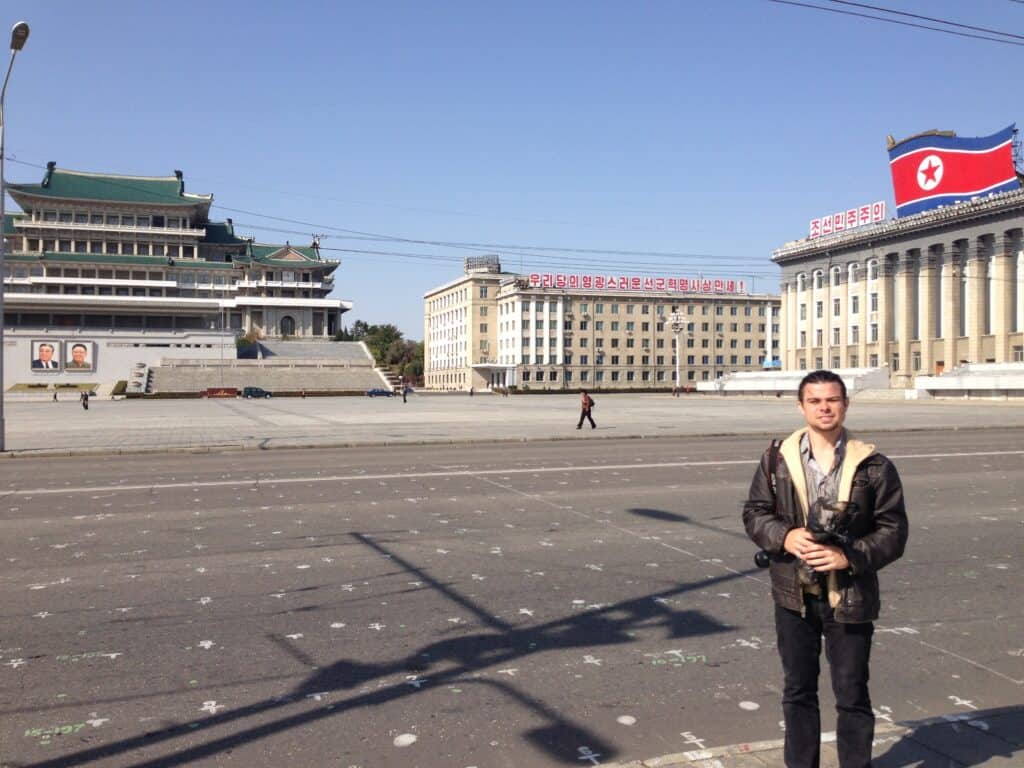
Kim Il Sung Square
If you've ever watched footage of CNN announcing North Korea's latest nuclear ambitions with some video reel of soldiers and large model rockets being marched on parade by the army, it's here in Kim Il Sung Square.
Of course, on the day I went, things were much quieter, even desolate.

You can see marks on the giant square of where people should stand in an exact location (I guess DPRK was making social distancing markings on the ground before it was cool?).
The square was massive, probably the size of multiple football fields.

Mangyongdae School Children's Palace
The Mangyongdae School Children's Palace is an extra-curricular after school facility, clearly for the most privileged children of North Korea.
Before we entered, a high school-aged girl came outside to give us an explanation of how this building relates to Kim Il Sung, how many times he and Kim Jong Il visited, etc.
On a more exciting, less scripted note, a group of four girls came and talked to us in the best English they could muster saying hello.
My Russian friend took a good photo before they scurried off to class!
During the tour, we were able to walk in on a calligraphy class as well as a music class.
All the kids here were incredibly talented at whatever they were doing.
The building itself is stunning both on the outside and inside.
The inside has vast wide-open spaces and is almost 100% marble. This seemed to be common to nearly all the buildings we were shown.
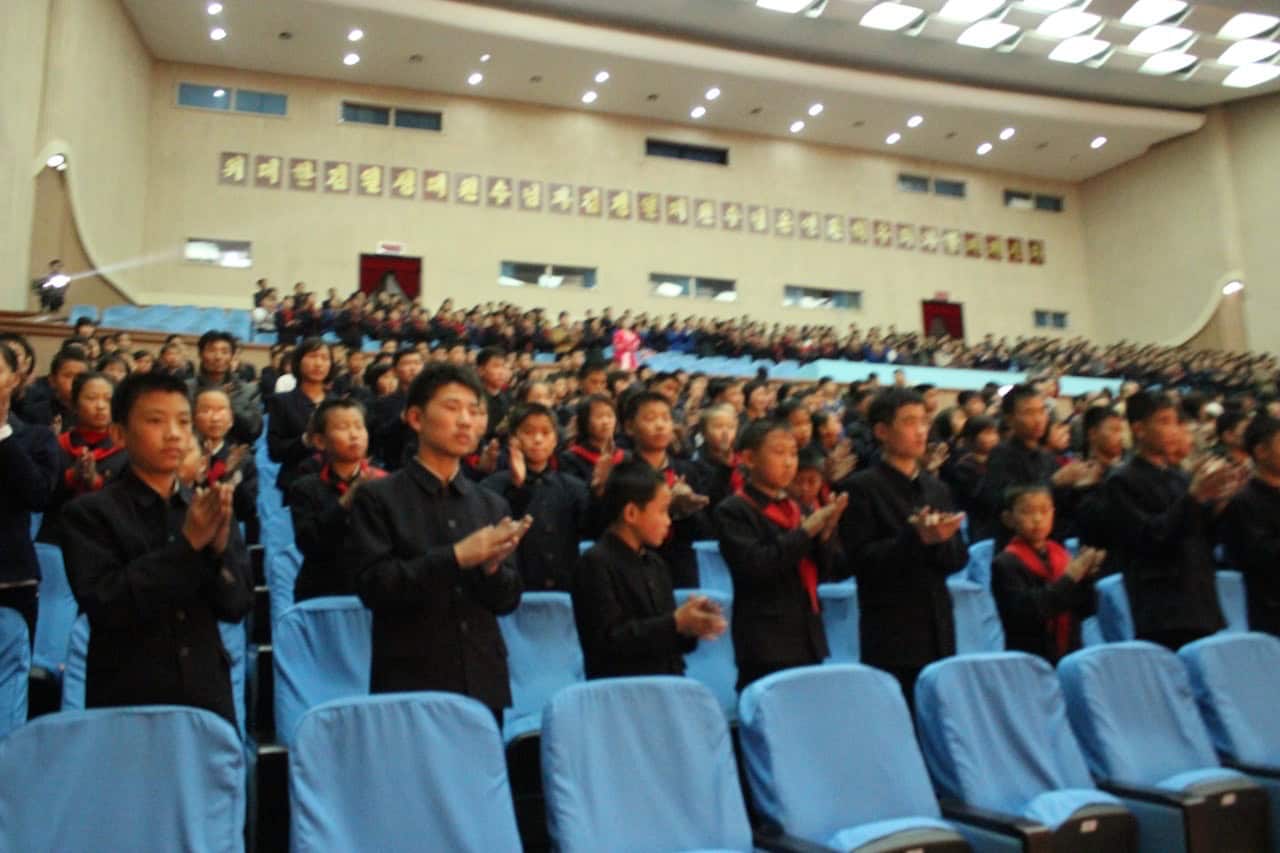
We were then taken to a brief variety show performed in the auditorium by the children, which was very well, perhaps “too well” performed for kids that age.
They did things such as juggling, playing music, short vaudeville scenes, it was a fun show.
If you do a DPRK tour you will almost certainly make a stop here. Check out the Young Pioneers website for more information.
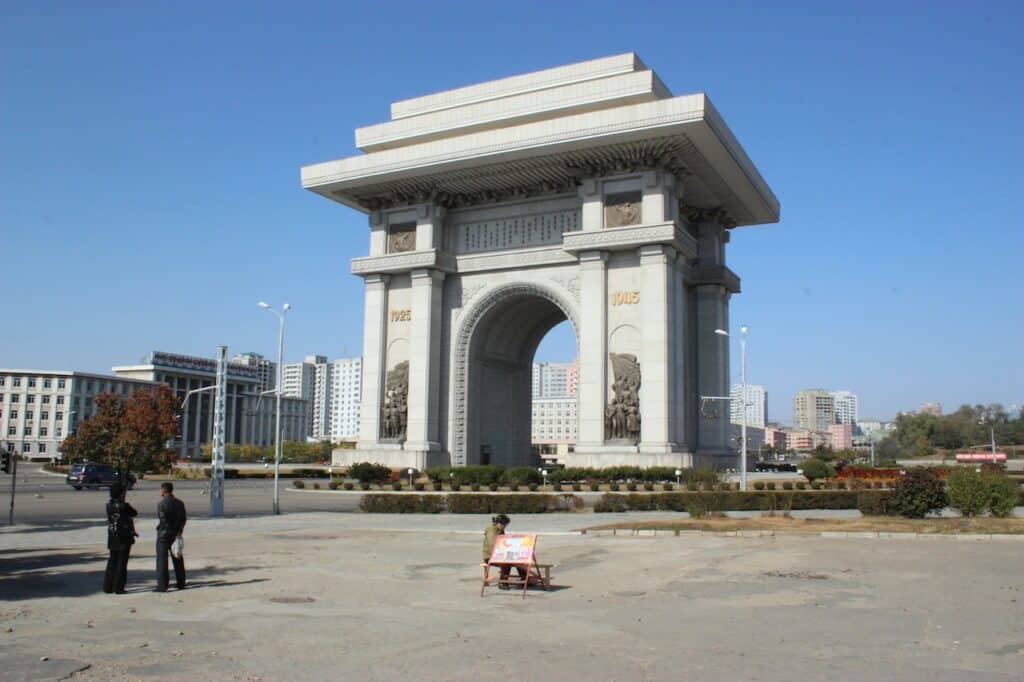
Arch of Triumph
If you noticed this Arch, looks suspiciously like the Arc de Triomphe in France , its because it was modeled after it.
It was made to celebrate Korea overcoming the Japanese imperialists in World War 2 and, like all monuments in North Korea, specifically glorifies the country's founder, Kim Il Sung.
It is the second-largest arch in the world, and its impressive size is not adequately captured in the photos I've taken.
Cars are supposed to drive under the Arch, but we didn't see any vehicles go through it at the time as traffic in North Korea is sparse.
Juche Tower
No doubt, you will get the best views of Pyongyang from this thin, erhmm, “phallic” shaped structure.
Inside is a tiny museum that shows small plaques from “Juche organizations” around the world, including ones from the USA.
It's possible some of these organizations were real during communist times, but some of them were quite funny like “the Juche organization of southern United States thanks Kim Il Sung,” etc.
It's supposed to show countries all around the world subscribe to the “Juche Idea,” which is the North Korean version of “self-reliance” introduced by the country's first founder, Kim Il Sung.
This may have been partially true before communism fell apart in the late 1980s, but these days I find it hard to believe there are dozens of Juche organizations actively working around the world. But who knows, right?
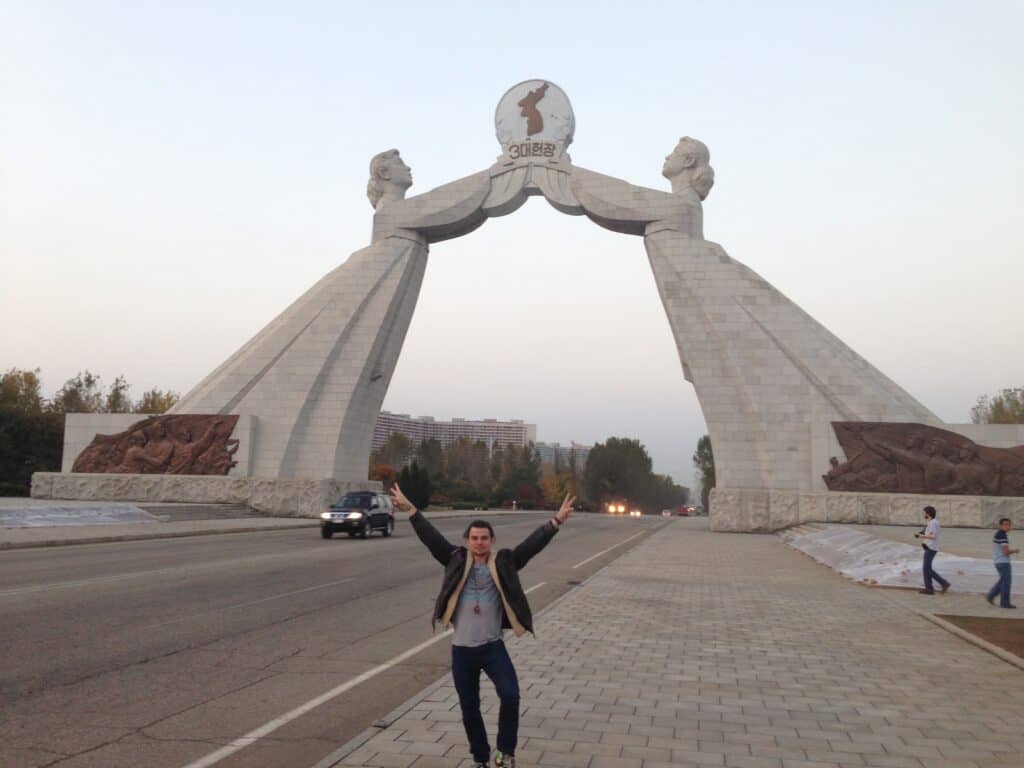
Arch of Reunification
Completed in 2001, The Arch of Reunification is a relatively new monument.
If you go here, it's one of the few chances you'll get (or at least I got) to step foot on the outskirts of Pyongyang.
The arch commemorates the ideas Kim Il Sung had to reunify the Korean peninsula and spans the main highway going into town.
Also, if you visit, they will quickly set up a “rest stop” near the arch for you to buy snacks.
They'll then take it apart right as you leave. DPRK is a weird place man!
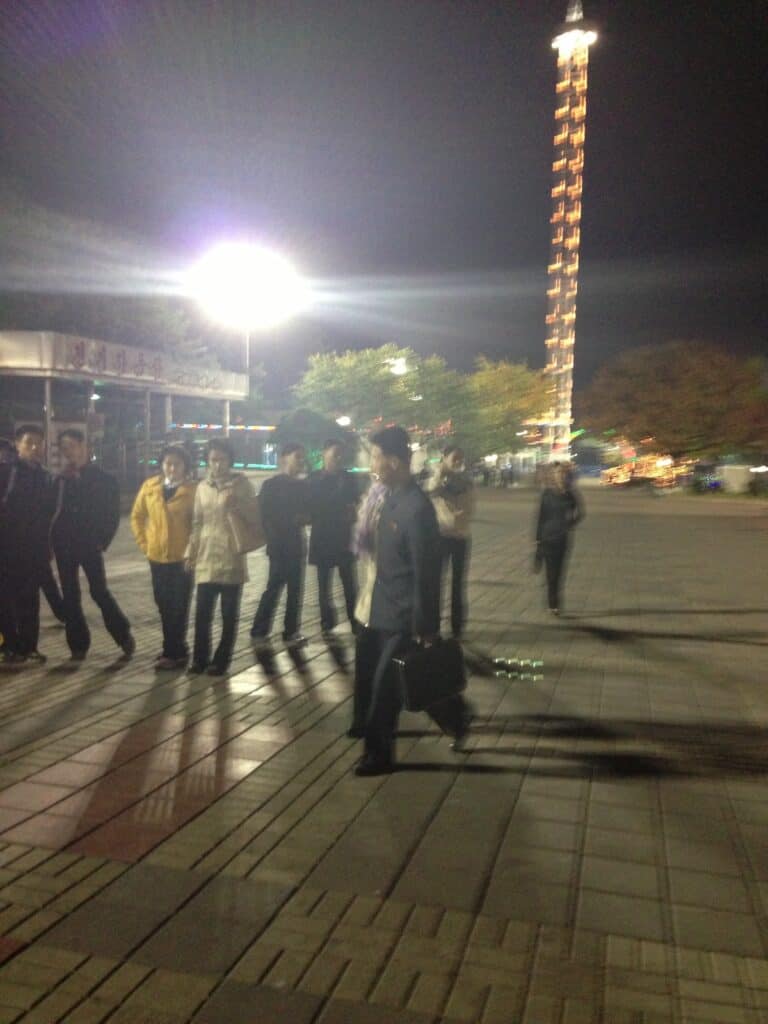
Amusement Park (Possibly…Mangyongdae Funfair)
Have you ever dreamed of riding a roller coaster with a group of North Korean soldiers? We did exactly just that.
I believe the name of the park was the “ Mangyongdae Funfair ,” but please don't hold me to it as this wasn't on the itinerary!
It was a standard small amusement park with North Korean's just acting just like any people from any country would at an amusement park, having fun with their friends, family, and loved ones.
This was a cool excursion because we got to interact with real North Korean's in the park in a non-scripted fashion, even though, of course, the language barrier limited communication to hand motions and laughing.
Pyongyang Maternity Hospital
Visiting the Pyongyang Maternity Hospital was one of the most interesting and weird parts of our North Korea tour.
This is supposedly one of the best, if not the best hospital in the country.
Everything felt staged, but I guess it is a real hospital.
One weird thing we noticed is there was no soap anywhere, which is a common shortage in socialist countries.
The idea behind taking us to the hospital was to show us how modern North Korea's medical system was. Ironically, it had the exact opposite effect.
My favorite and most obviously staged part was the “Breast Endoscopy Room.”
We were then taken to a tanning bed that was hooked up to some old soviet radio that was supposedly for use with pregnant women to get UV rays.
I was like, “come on; you gotta be kidding me.”

I can hardly blame the Koreans for trying extra hard to impress us, given all the bad press coming out of the country.
It's clearly in their best interest to put their best face forward, even if it meant exaggerating or faking certain parts of the trip.
They then took us to a board room that had a bunch of old books in English on the walls, some of which had nothing to do with medical care such as “The 1997 A+ certification guide to repairing computers.”
A doctor came in and talked to us about North Korea's medical system. We were told anyone who wants care can come to this hospital for treatment.
I looked it up, and it really is supposed to be one of the best hospitals in North Korea, so maybe it wasn't all a facade.
But other people who toured DPRK agree this place felt like one of the most “staged” sites in the country.

Kim Il Sung University
Taking us to Kim Il Sung University was another attempt by North Korea to show how modern they are.
The buildings in the university are stunning both on the inside and out. Virtually everything in the corridors is made out of real marble.
I believe this is the most important and famous university in North Korea. Only the smartest and most privileged North Koreans can study here.
They placed a special emphasis on showing us computers as North Korea is known for restricting their use and having virtually no external internet access.
We had a local student come and explain to us what they do at the university.
From the gist of it, they focus more on math and science than softer liberal arts topics, at least at this particular university, but I could be wrong.

Pyongyang Metro Subway Stations
No trip to DPRK would be complete without a trip down into the subway.
The Pyongyang Metro is one of the deepest in the world; the escalator to go down is ridiculously long.
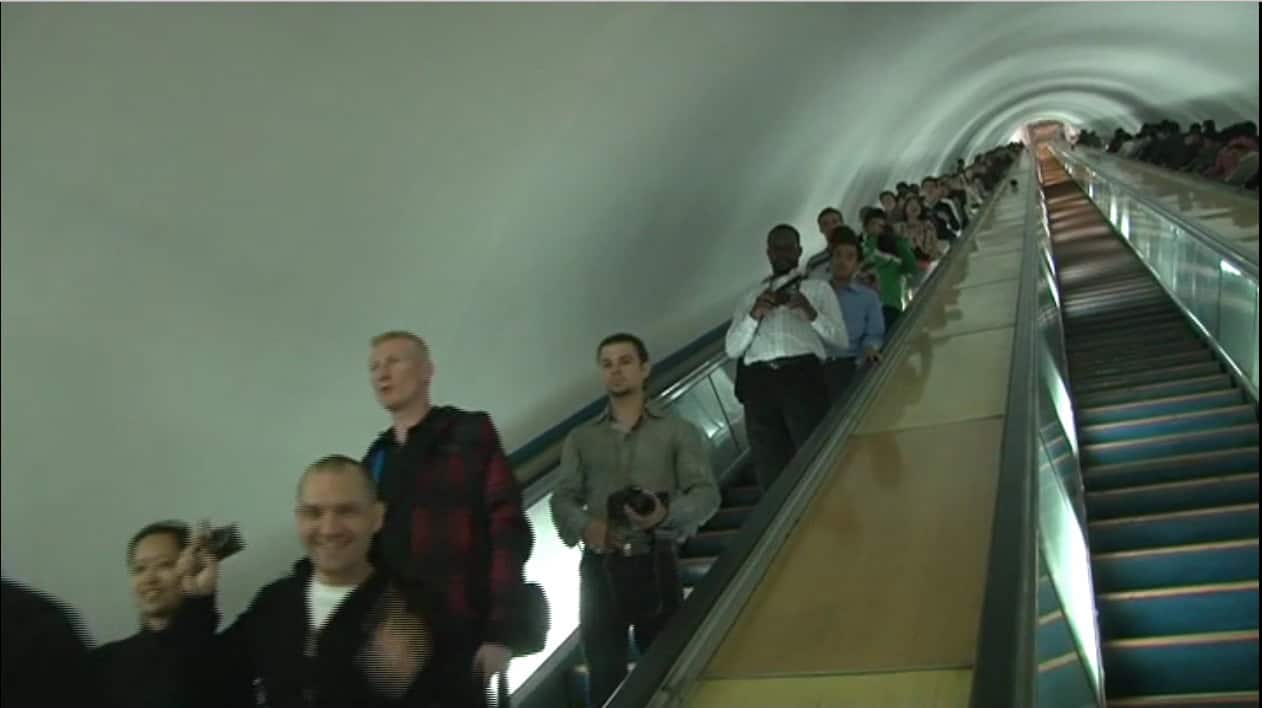
I believe the reason they built it so far underground is so it can double as a nuclear bomb shelter.
Like most communist-built subway stations, they are very opulent, similar to the ones you'd see in St Petersburg, Russia .
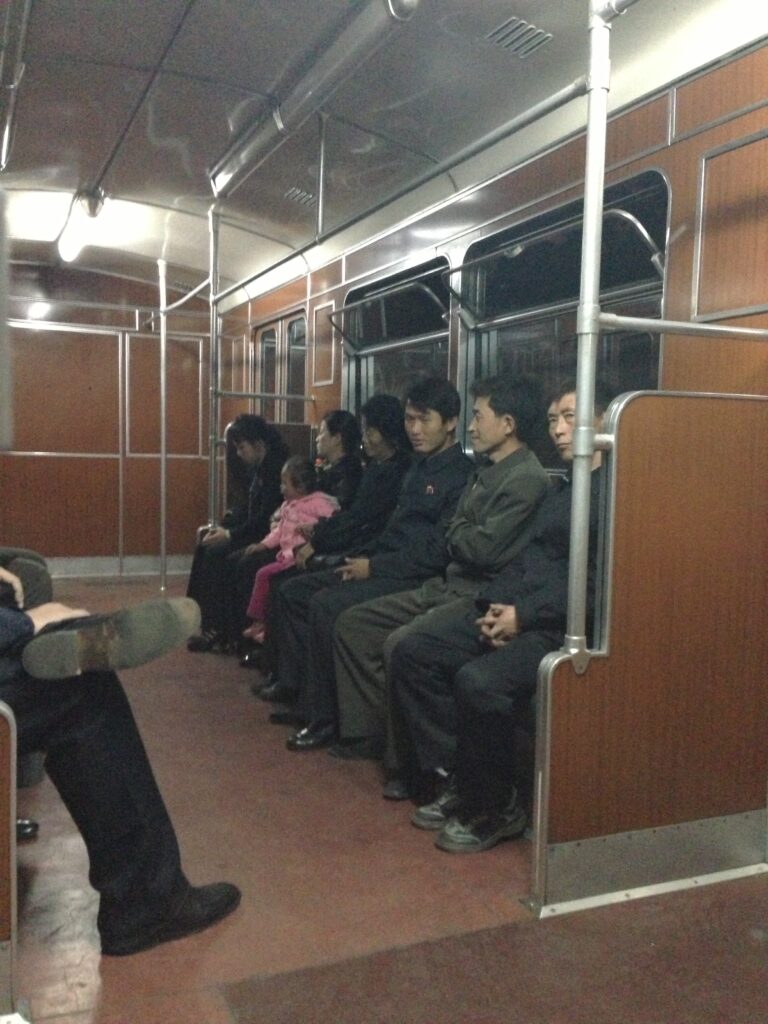
We got to see a few stations, including one's supposedly not seen by foreigners very often (unfortunately I couldn't find any photos I took myself of the stations) .
The subway station only has two lines. This was also a great experience as we got to interact a bit with the locals on the train.
Kumsusan Palace of the Sun
Without a doubt, visiting the Kumsusan Palace of the Sun was one of the most bizarre experiences not just of my trip, but of my entire life.
Jews have the Western Wall, Muslims have Mecca and Medina, and North Koreans have the Kumsusan Palace of the Sun and, more specifically, the Mausoleums of Kim Il Sung and Kim Jong Il.
We were told that most likely, we would not be allowed to visit the inside of the Palace but low-and-behold when the day arrived, it turned out we could go in after all.
There aren't any amateur blogger photos or vlog footage from the inside of this building, as filming is strictly prohibited.
They make you empty all your pockets and confiscate all electronics, which are then returned to you later.
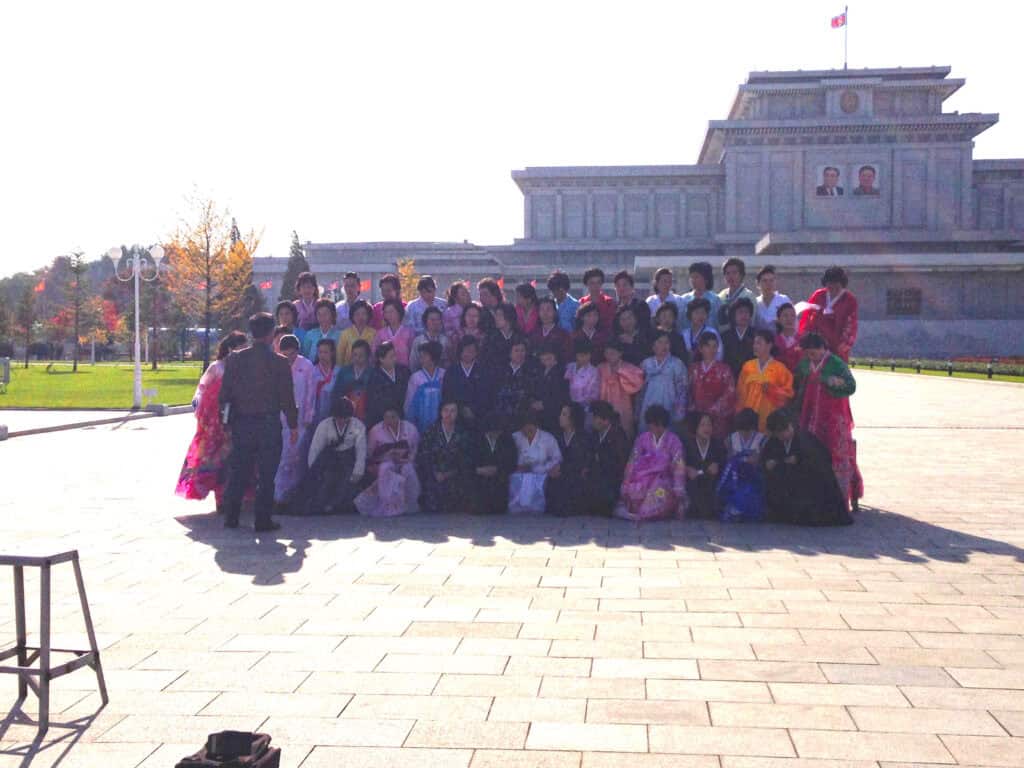
Mausoleum where Kim Jong Il rests in state
The tour starts with you being given the most serious security check of your life.
They're checking mainly for hidden cameras of any sort including in pens and eyeglasses.
All electronics are confiscated. You then are taken into a long moving walkway that goes on for about 15 minutes.
On each side are various paintings of the country's original leader Kim Il Sung doing various things, but almost always some form of providing field guidance at either a factory, a farm, or riding a horse in the wilderness.
Patriotic music is blasting through the loudspeakers. This goes on and on and on.
Eventually, you get off and are taken on another long people mover, which is essentially the same thing, but this time with Kim Jong Il.
This walkway is slightly shorter, about ten minutes or so.
At the very end of the walkway, they dedicated two or three portraits to the current leader Kim Jong Un.
(This was in 2013. I'm sure as of 2020, they probably added more.)
The Mausoleum – inconsolable crying North Korean women
After this, you are taken down some kind of opening in the wall with air blowers pushing air in all directions.
When you pop out, you'll see North Koreans, and especially women, hysterically crying.
Whether this is acting or not is anybody's guess, but it didn't seem like they were faking it to me.
I mean, the North Korean women near the mausoleum were crying there as if their child had died; it was a bizarre sight to see.
Then you are taken to Kim Il Sung's mausoleum. You must quickly pay your respects by bowing down.
You are then swiftly taken into the next room, which is Kim Jon Il's mausoleum, where you must bow down again.
Next, you're taken to a room that shows all the gifts, award medals, and plaques, as well as diplomatic “thank you” letters given by foreign governments and leaders.
90% were from European communist governments that no longer exist or dictators that were overthrown or died long ago, such as Indonesia's founder Sokharno and disgraced Romanian dictator Nicolae Ceausescu (a dictator who made Romania the spitting image of North Korea for 30 years).
Since North Korea's government has been a pariah for 30+ years now, they've had to get creative.
From 1995 onward, most of these “diplomatic gifts” are from organizations rather than governments, some of which may not even exist.
(I saw things like “The Juche Organization of South Australia,” etc.)
The most interesting part is at the end of the tour where you can see all the countries Kim Il Sung visited, along with his train car.
In the next room, you'll see all the countries Kim Il Sung visited, and his train car as well.
They preserved his train car perfectly, even leaving the Macbook Pro on display!
I wish I got pictures but didn't want to risk a death sentence. If you watch the last two minutes of this video , it gives you a decent idea of what I saw.

Getting out of Pyongyang is typically the highlight of your trip as you get to see some of the countryside on the bus ride .
And, more importantly, the propaganda is just a bit less intense outside of the city (though still substantial).

Kaesong city
Kaesong is a small and prosperous (by North Korean standards) city near the DMZ . Geographically, it is much closer to Seoul than Pyongyang.
Kaesong was famous for hosting an industrial park in collaboration with the South Korean government to produce goods, but it has long since been decommissioned.
The ancient city is very well preserved with tons of ruins and buildings.
Kaesong belonged to the South Koreans for most of the Korean War and was one of the few places in North Korea that weren't bombed.
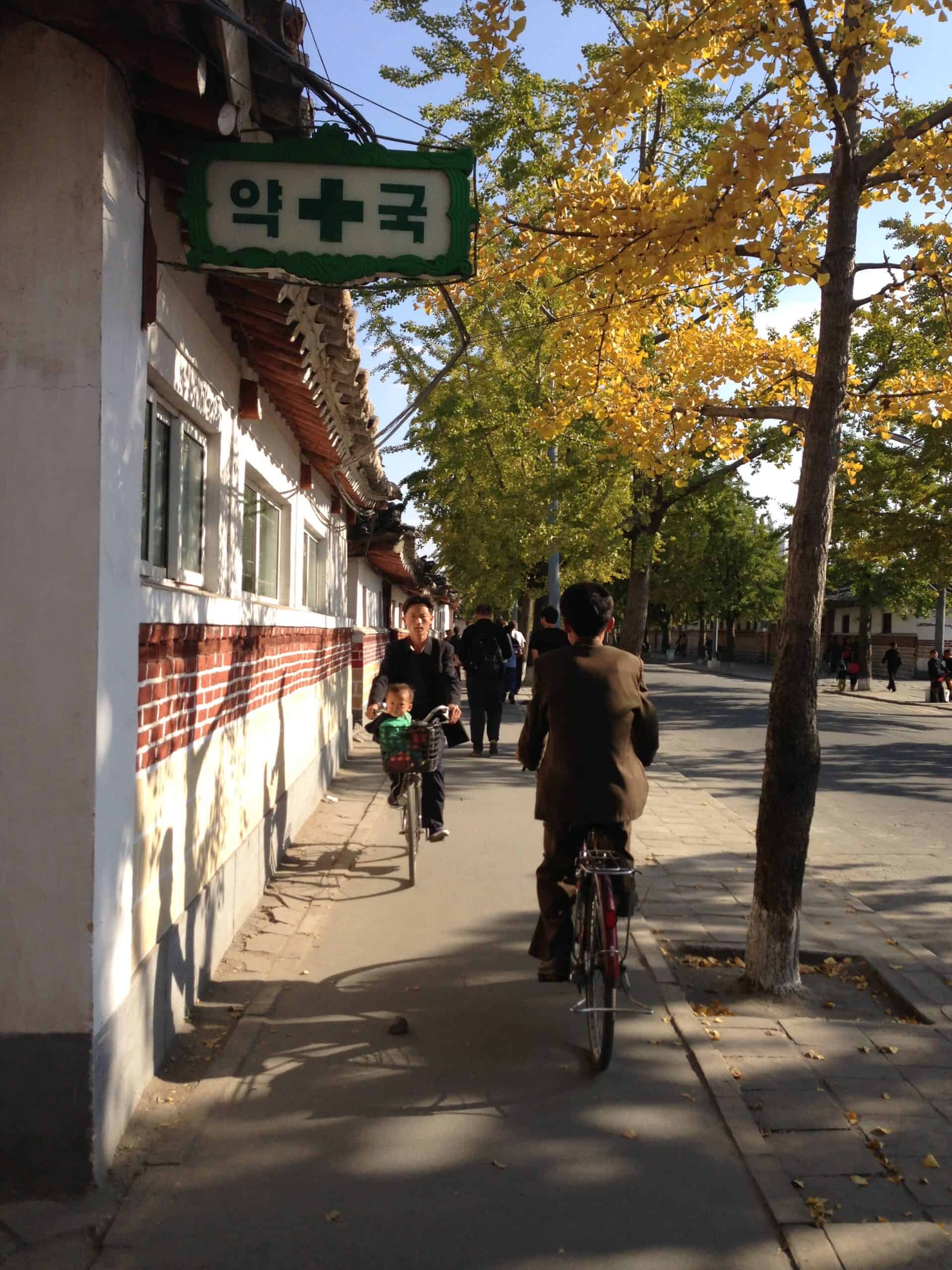
More importantly, this was the only time during the 6-day trip when we had a fair bit of freedom to walk around outside by ourselves.
It was a relief not to have three different local guides continually breathing down our neck.
A small group of us went to a nearby park and saw lots of people taking wedding photos, relaxing, and enjoying their day off (I believe we were there on the weekend).
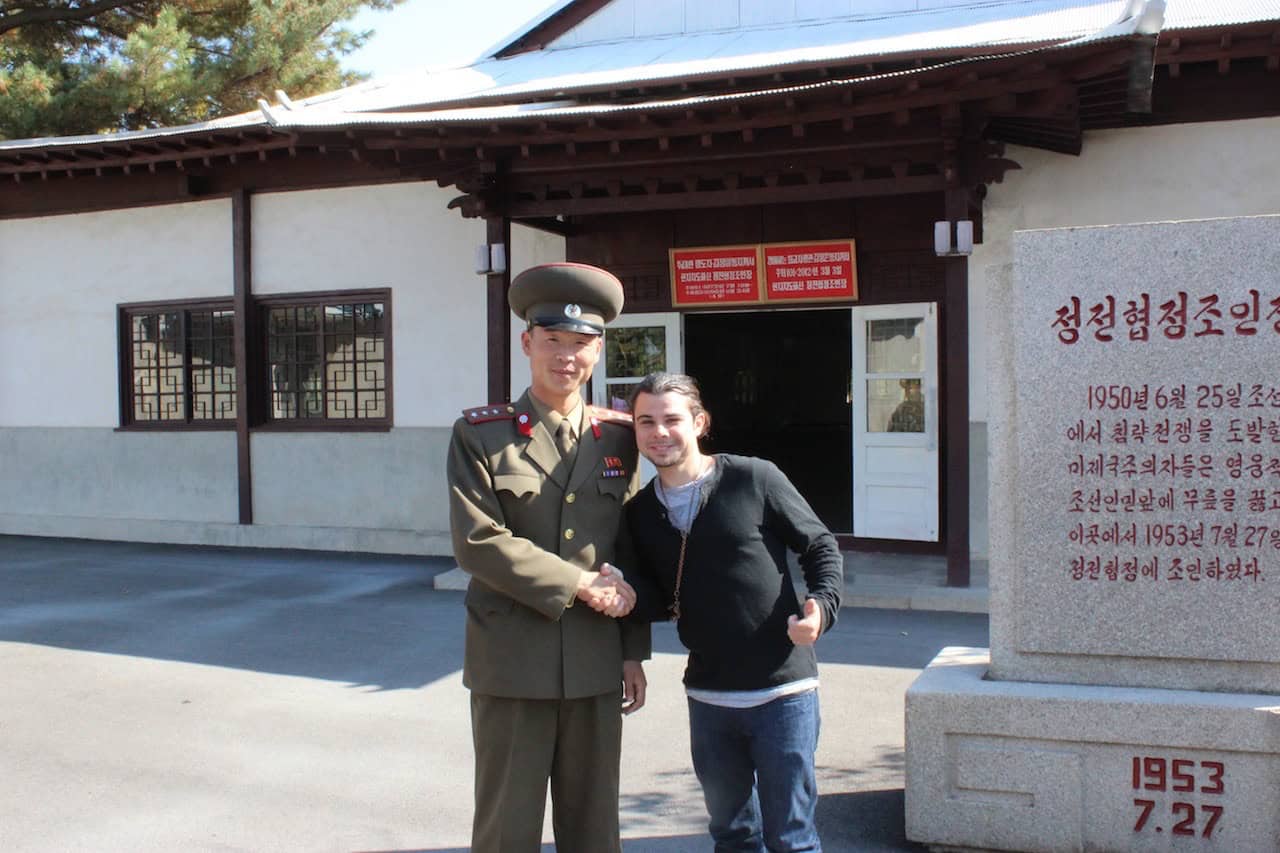
The DMZ from the North Korean Side (Panmunjom Truce Village)
If you visit the DMZ ( demilitarized zone ), you’ll have far more freedom to walk around and take pictures on the North Korean side than the South Korean side.
Going to the Panmunjom from the north side was a much more pleasant experience than from the south.
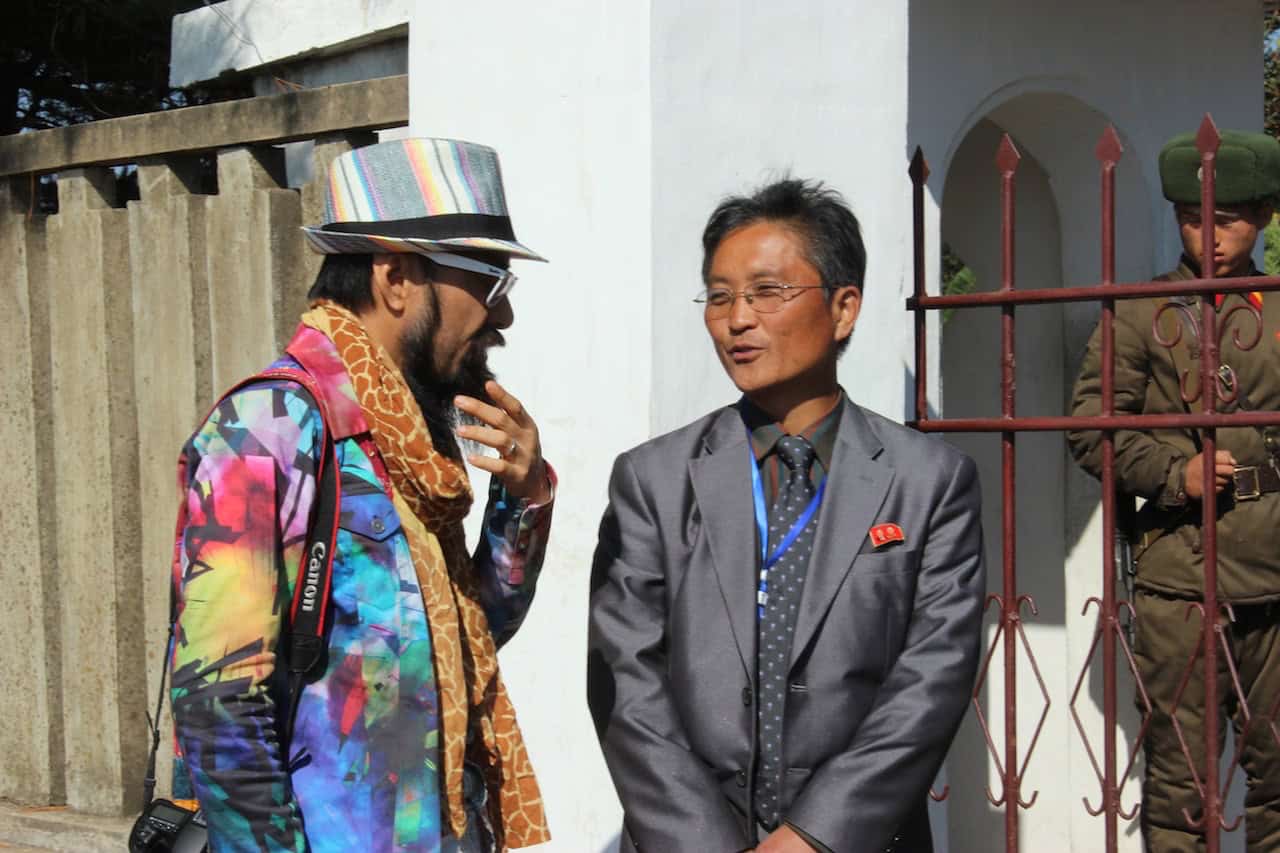
I also went to South Korea on this trip the following week.
When I visited the DMZ, they hardly let us take any pictures or talk to the soldiers; it was quite a disappointment.
This is pretty ironic because you'll be told that in North Korea everything is scripted, you'll have no freedom of movement. And this is mostly true.
However, if you are a history buff and want to explore the DMZ, you'll have more freedom to walk around if you go on the North Korean side.
(Just don't cross the line unless you want to get riddled in bullets!)

We were taken into a small room and given the North Korean version of events as it relates to the Korean War.
We were reminded that both Koreas, as well as the USA, are technically still at war.
And we were told about ten times that it was South Korea/”The American Imperialists” that started the war (fact check: virtually all historians agree that North Korea initiated hostilities, but again, who knows who's right).
We were also shown the official armistice agreement.
Technically the DMZ is the only place you are allowed to take a photo with a North Korean soldier.
The truth is, even though they tell you not to take pictures of soldiers, they are so ubiquitous in the country, it's almost impossible not to.
However, the DMZ is the only place you can interact with the soldiers and probably the only place with soldiers that speak a bit of English.
At the end of the tour, we got to wave to the tourists on the South Korean side, and they waved back.
When I later visited the South Korean side, I kept thinking how bizarre it is two such very different worlds exist right next to each other.
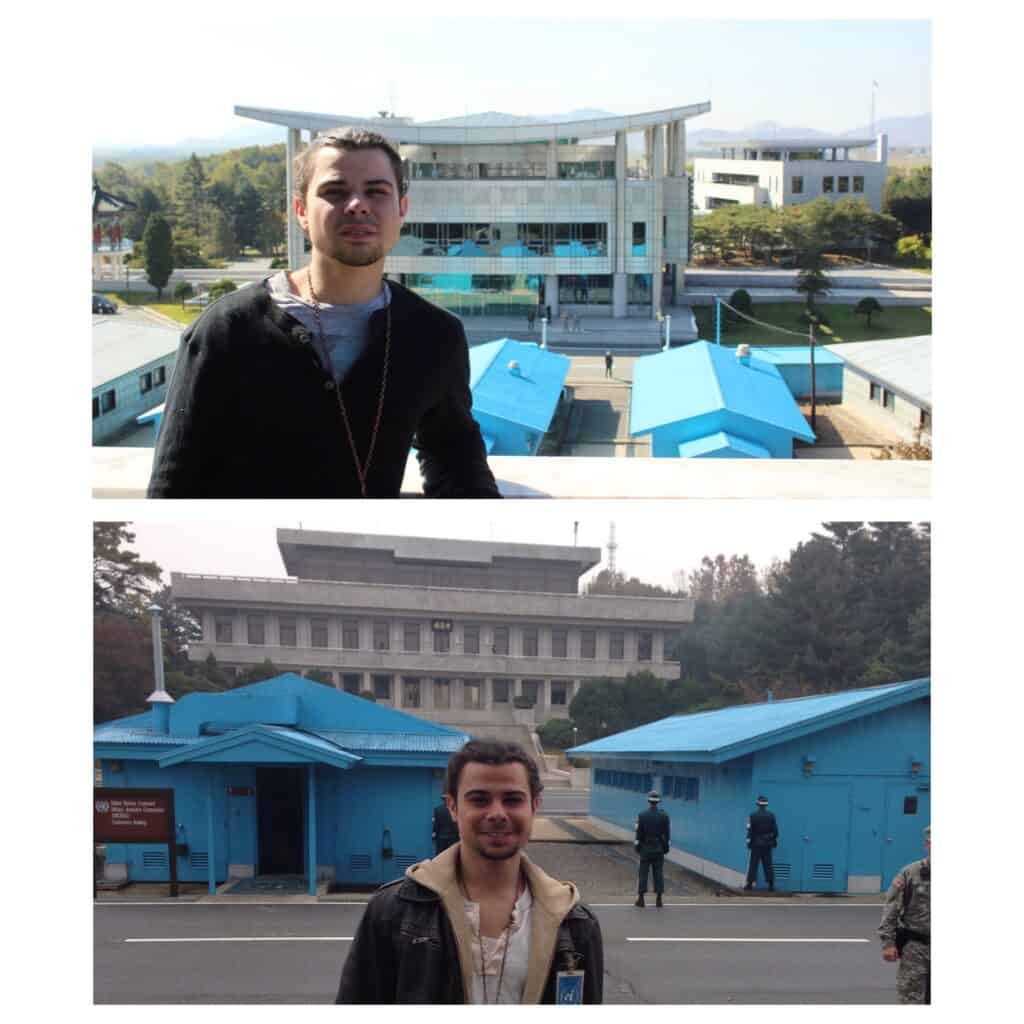
Nampho (Nampo) City – North Korea
A unique stop on our North Korea tour was an industrial town on the west coast of Korea called Nampho (also spelled Nampo).
Tourists don't usually go here, which means we could see more real-life scenes and less “acting” and propaganda.

Taen Machine Factory – Nampho
This was my first time stepping into a machine factory and smelter in nearly 12 years.
The last time I had done so was in China when studying business abroad in 2008.
The factory didn't look too different from any other factory, except for the propaganda slogans on the walls everywhere.

Before we entered the factory, we were told how this all related to Kim Il Sung and how many times he had been there.
And we also were shown a mini-museum attached to the factory.
Not much else to say here. It was busy people working a smelter and making machines. The photos and videos were sick, though.
Chingsan Cooperative System Farm – Nampho
The first thing that struck me about this model “farm” is that very few people were there, even though it was harvest season!
Plus, there were no animals. We did see some people driving by.
Writing this seven years later, I still wonder if it was just a day off for the people working there?
It's tough to tell whether what you are shown is real, what is not, and what is real but exaggerated.
Adding to the Orwellian atmosphere, there was some propaganda blasting from speakers throughout the pasture, but the audio recording kept breaking and glitching.
We were allowed to roam around the farm for a little bit.

Perhaps, like the hospital visit, the farm is indeed real but this a “model” version made for tourists that is still partially used in real life.
2020 Update: It seems many tourists go to this specific farm and orphanage, so this would add evidence to the theory that it's not just “any other regular farm.”
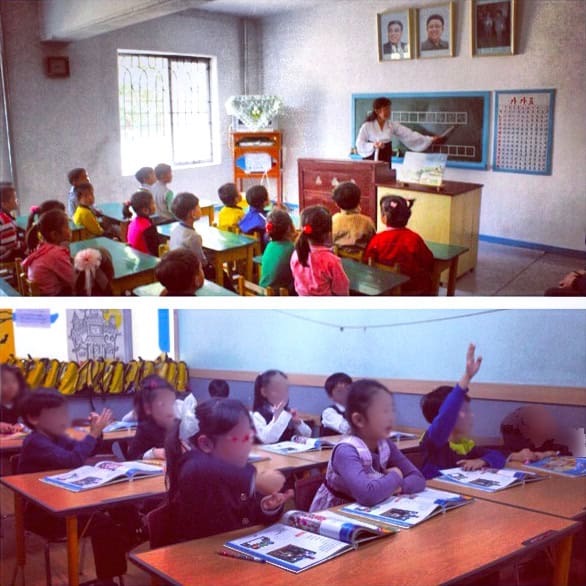
Rural North Korean kindergarten “orphanage”
Following the farm, we were then taken to a North Korean kindergarten.
Was it real or not? Again impossible to say, but I'd lean on the “yes it was real but probably in better condition than most rural kindergartens.”
The first thing you notice when walking inside is a giant painting of Kim Jong Il sitting with a bunch of young children.
Then as you walk in, you see a lot of propaganda posters everywhere, all of which are some variation of “kill the Japanese” or “kill the Americans.”
You could tell the teacher was embarrassed that we were taking photos of this.
Also, we were told this was an orphanage, but interestingly enough it wasn't that they didn't have parents, they just went to school and lived there.
I guess it'd be considered more of a “boarding school for kindergarten-aged children.”
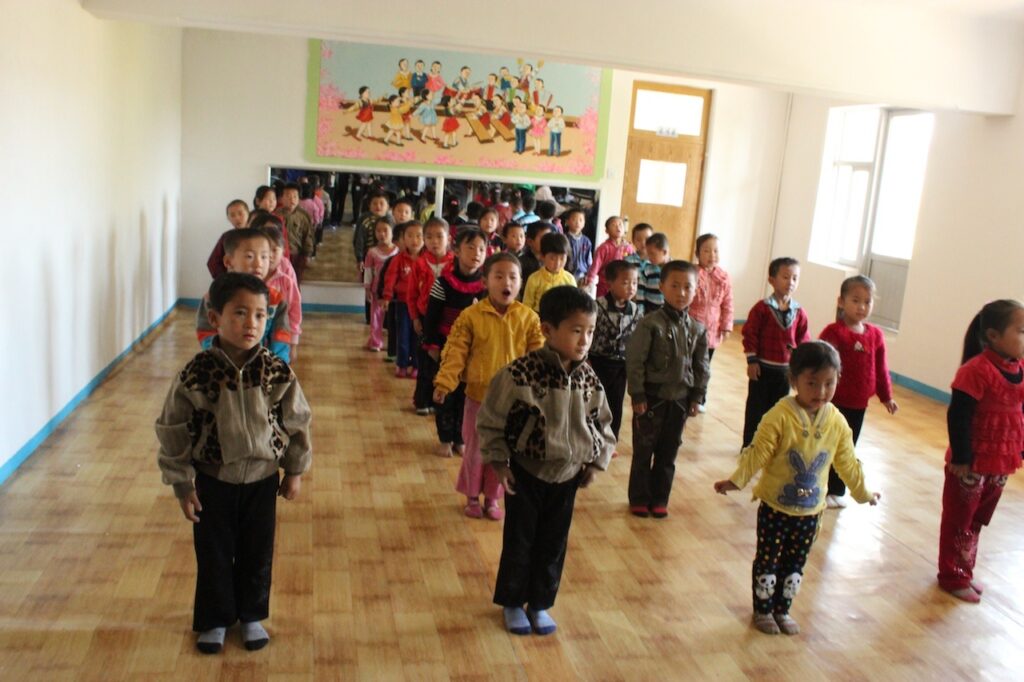
After this, we went inside a classroom.
The children performed some songs on the piano and simple dance routines clapping their hands; we were invited to join.
The kids were lovely and it was a highlight of the tour.
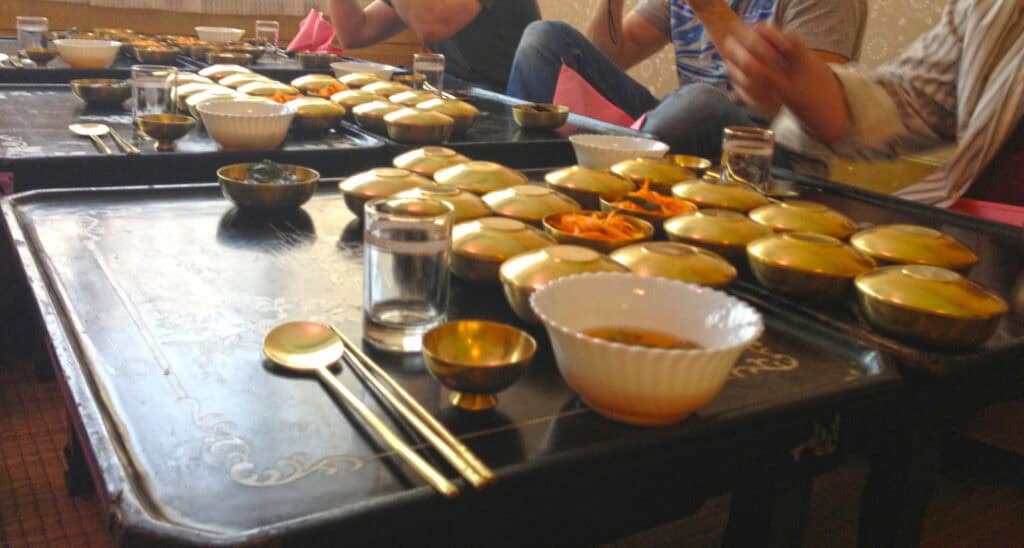
They fattened us up real good in North Korea.
I think it's their part to “show us” how much food they have in North Korea since the country gets so much bad press that their people are ostensibly malnourished.
I will tell you for a country that supposedly has no food I have never seen so much farmland in my life. It seems the whole country is one giant farm.
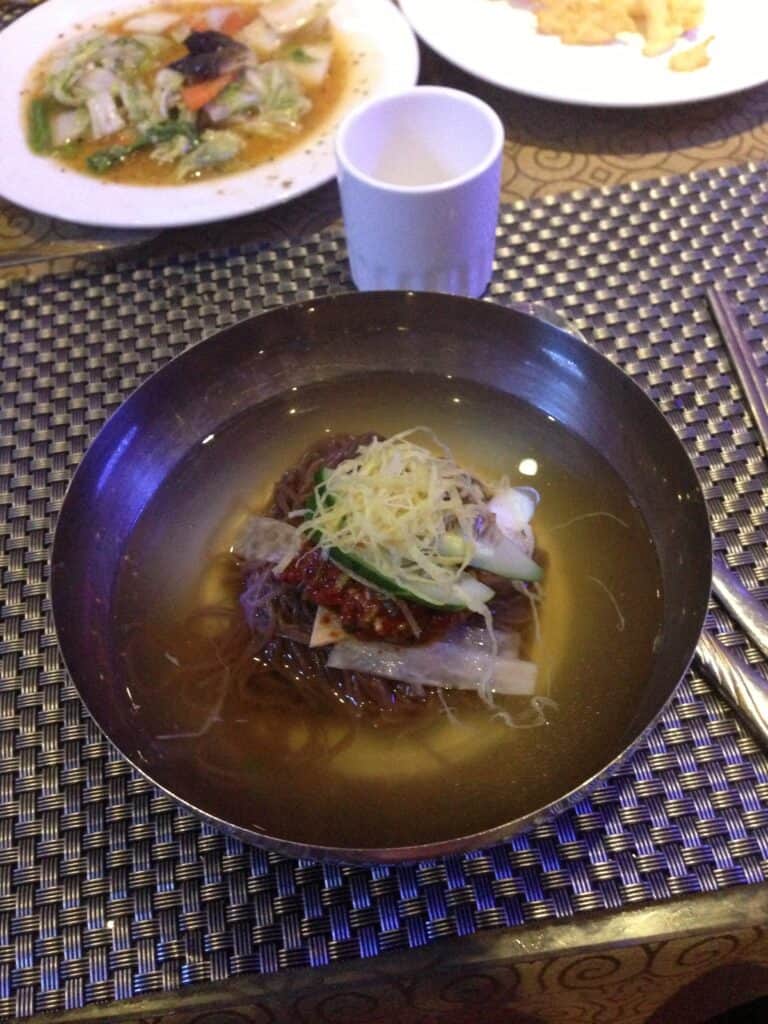
North Korean food, at least the way we had it presented to us, is very similar to South Korean food but without the western influences.
The most popular dish is “Pyongyang Cold Noodles,” which is Korea's take on Ramen noodles. It's a bit of a misnomer as the broth is served hot.
You can get it in any Korean restaurant. I've even ordered it here in Mexico where I live. I'm not a huge fan, but some people love it.
People also eat massive amounts of kimchi , which is also true in South Korea.
The country's beer is all brewed by the Taedonggang beer company. It's a delicious lager but tastes very ale-like, like a lighter pale ale.
Also, many places seem to have their own brewery that produces delicious lager, which I presume is also Taedonggang beer.
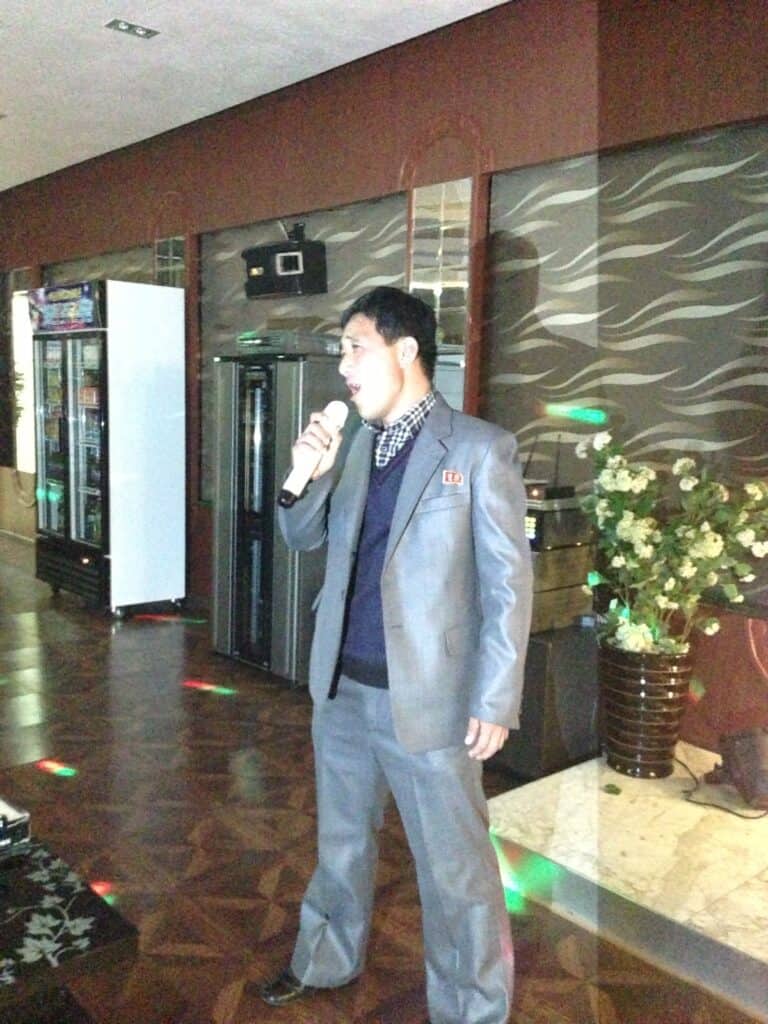
Partying options are limited to your hotel, and this one fancy place called the “Diplomatic Club” that is made for foreigners and diplomats and their families.
Unfortunately, the guides aren’t (yet) able to take us to where real North Koreans go out and have a good time.
After 12 hours straight of sightseeing and a round or two of bowling at the Yankhado bowling alley, you won’t have much energy left to go out and party anyways.
After the end of my DPRK tour, I decided to visit the borderland region in China in Dandong in Liaoning province.
As of 2020, the Chinese government has cracked down, and they do not like people flying to Dandong just to screw around near the border.
However, when I went in 2013, things were still pretty relaxed.
The border has a lot of fascinating history as it marks the end of the Great Wall of China, and the wall still serves as the approximate border between Korea and China.
A lot of smuggling and things go on in the border cities of Dandong and Sinuiju.
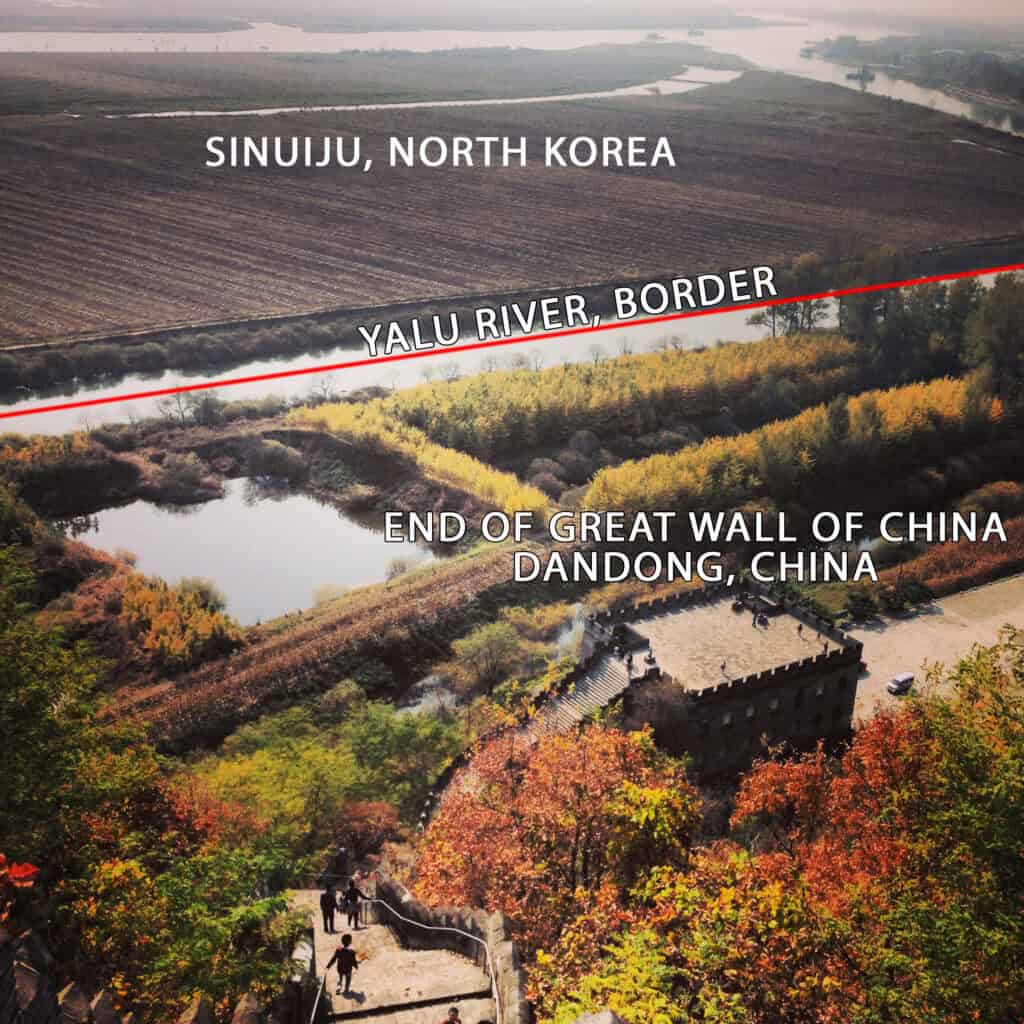
You can get close to the border, ostensibly to enjoy the Great Wall of China, but the real reason is to get a good vantage point to see North Korea over the border.
Here a few more photos of my time in Dandong.
I had a great Chinese guide who had, let us say, a “less than favorable” opinion on North Korea, which was a great counterbalance after hearing five days of propaganda.

I managed to get right up to the river and border before I got yelled at by some guards, and my Chinese tour guide quickly whisked me away.
Later, the guard said the reason they were yelling at me is that they found a dead body in the river earlier that day. Yikes!
2020 Update: Apparently, Chinese authorities got fed up with curious westerners getting dangerously close to the border in Dandong, so if you go, just be careful and always go with a guide as I did.

I won't cover South Korea since there are already so many articles and videos on it, but it is a lovely country.
The boat ride was interesting in-and-of-itself.
And before you ask, I highly doubt North Korean refugees would be able to make it onto the ship as they checked everyone's papers pretty thoroughly on the Chinese side.
The ferry was packed to the brim with Chinese laborers trying to get back to Seoul, where they live and work.
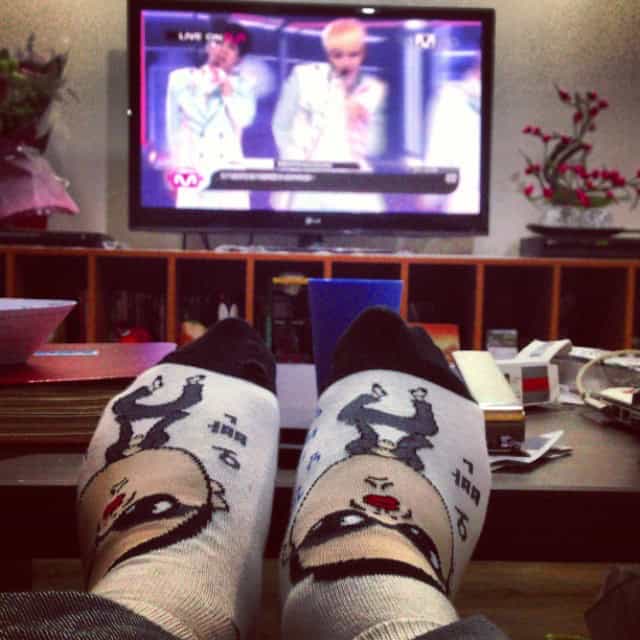
Some of them spoke a few words of broken English. I shared a room with three Chinese laborers.
We exchanged food, and they taught me a card game using just charades and hand gestures until I got the hang of it.
After a few beers, it seemed our communication improved a lot!
It's hard to believe I crammed so much adventure in just a little over one week.
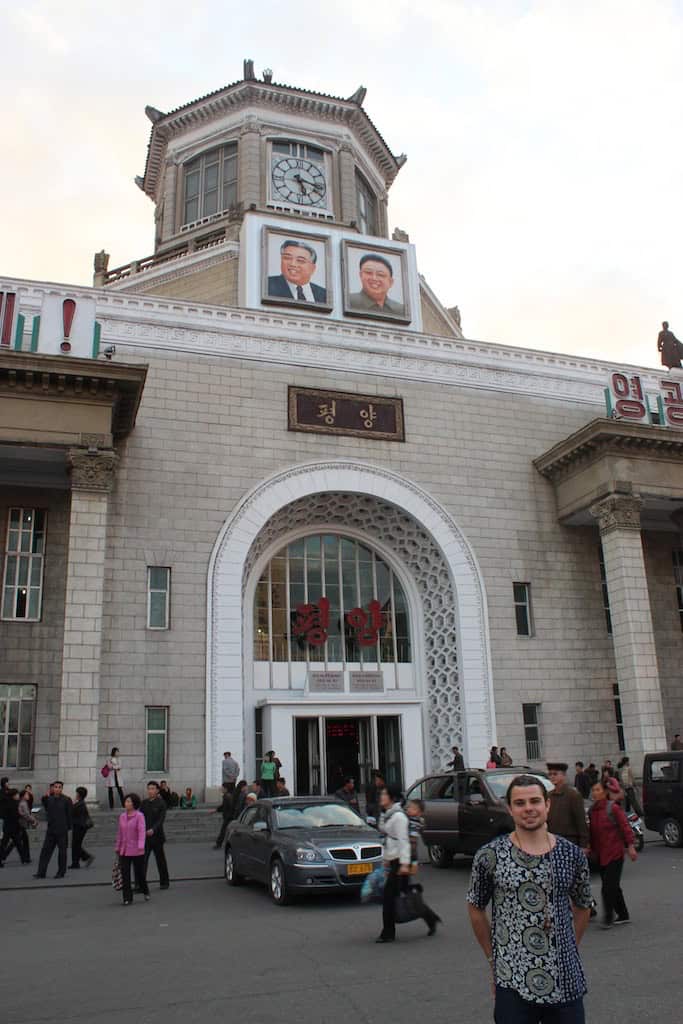
How much freedom do you have on a DPRK tour?
It depends, but generally speaking, you have very little freedom.
Nevertheless, you do get to walk around on certain streets for 15-20 minutes on your own sometimes, but you're asked not to go inside any buildings.
One time I snuck into what I believe was a mundane flower shop, and my guides immediately freaked out and pulled me back into the group.
You might “feel” like in some places you're given a little space, but in reality, you're probably being watched by at least one person, if not more.
One instance that surprised me was in the city of Kaesong, where we were basically in the city center and had about 30-45 minutes to walk around and do whatever we want.
This was the only time I ever remember being outside in smaller groups without minders breathing down our neck, BUT as I previously said, it only felt that way.
Unfortunately, since I don’t speak Korean, I didn’t have a chance to have a real conversation with anyone other than my guide, but we had plenty of moments with locals.
Not a lot of people spoke English, but we exchange plenty of hellos and small moments with people in Pyongyang and Kaesong.

There is a “rumor” or “perception” that all interactions with locals are set up and that they're not allowed to speak to foreigners. This isn’t true at all.
We shared moments with them on the subway, and laughed and screamed together with DPRK soldiers on roller coaster rides at an amusement park in Pyongyang.
Of course, being a group of rambunctious guys, we did everything we could to distract the beautiful local traffic ladies and make them laugh as we passed by with varying levels of success.
We had plenty of smiling faces wave hello to us as we passed by.
Then again, the language barrier presented a considerable challenge, and even if we could speak Korean, most topics you'd be interested in asking a North Korean would be off-limits anyways.
If you want to meet “real” North Koreans and get their opinions on the country, you're probably better off arranging a tour of the North Korean neighborhood in Beijing with a Chinese guide that has connections.
If you're in Beijing or Dandong, it's relatively easy to arrange such a tour, but when you're actually INSIDE the DPRK, it's not the right place to ask these types of questions.
You can get everyone in trouble, including your guide, the western guides, and, most importantly, yourself.
Was everything you saw fake in North Korea?
If the government indeed setup every “moment,” they must have had to hire tens of thousands of people to be at the exact right place at the exact right time–possible, but highly unlikely.
I doubt anyone on our tour was important enough to be worth the time to do that.
I’d say for the most part we went to real restaurants, real sites, a real amusement park, actual ancient ruins, and a genuine steel factory.
We went to the DMZ, and I’m pretty sure the hotel was, in fact, authentic and not a mirage.
I’m also pretty sure our guides were real North Koreans (albeit part of the privileged 1% with access to hard currency).
Some places felt real but very exaggerated, like the Pyongyang Maternity Hospital.
Other sites were real such as the factory we visited and walking around town in Kaesong.
Again, when you're going on a guided tour of North Korea, it's tough to say what's real and what's not.
Still, I'd say most of what you see is not fake, but rather exemplary schools, top hospitals, and facilities, etc.
They're probably not in line with what the average North Korean experiences at a minimum.
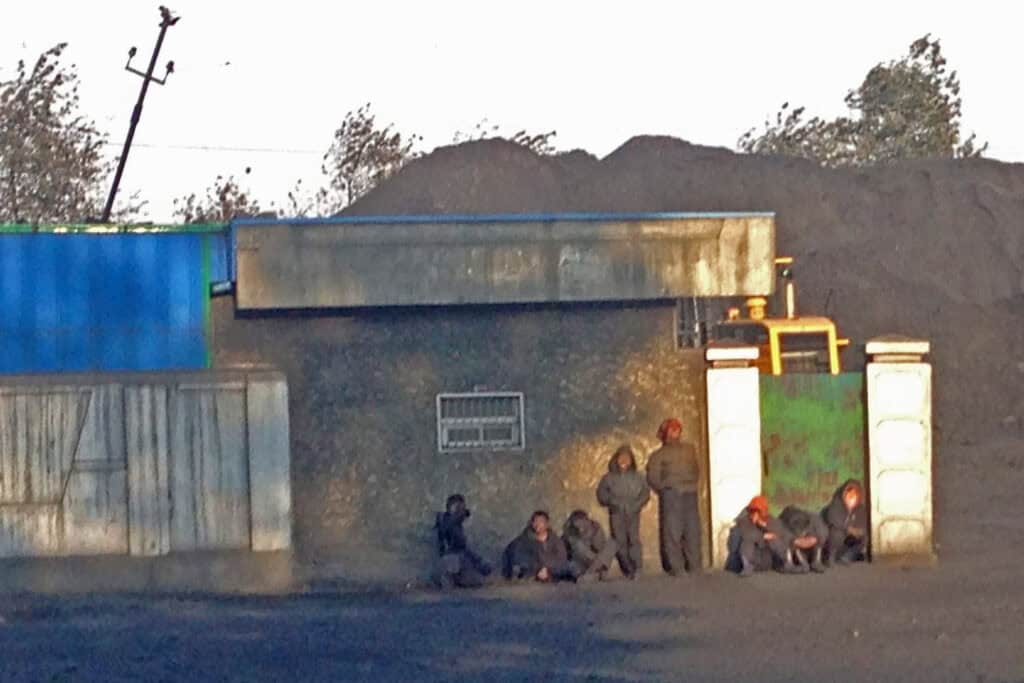
So, in summary, you will be taken to mostly real places and real sites.
When you eat, you will probably be surrounded by locals in some of the restaurants.
However, you will still get a pretty hefty dose of “Kim” propaganda no matter where you go.
There isn’t anything your foreign guides can do about this; it’s just how they roll in the DPRK.
The only locals that spoke enough English to have a conversation with were our guides.
The two sensitive subjects we were told to avoid beforehand were the labor camps and defectors.
Other than that, the guides would talk to us about anything we wanted, including sensitive topics like the famine in North Korea in the 1990s, the split of the two Koreas, and their day-to-day experiences living in Pyongyang.
Some of the responses they gave us were the “correct” propaganda answers.
But often, they were a lot franker with us and more honest with their day-to-day life than what you might expect.
If you go, there's a good chance the local guides won't be as robotic and as you might expect.
If you're respectful throughout the tour , they'll loosen up a bit.
Also, your guides will know way more about the outside world than you might expect, but this could be because the guides have so much contact with foreigners.
One example of a positive effect North Korean tourism has on the country, is that no matter how much they try to isolate you from people, interactions and conversations are inevitable.
You could get the guides to open up quite a bit about their lives. (as long as you avoided forcing them to talk about the two hot button topics mentioned above.
NOTE : If you go to the DPRK, don't be a jerk and force your guides to answer questions that might get them (and you) in trouble. Trust me. They already know about the internet. And they're very well aware the entire outside world sees the Kim family propaganda system as a “cult.” You won't be telling them anything they haven't heard and will be getting them and yourself in trouble.
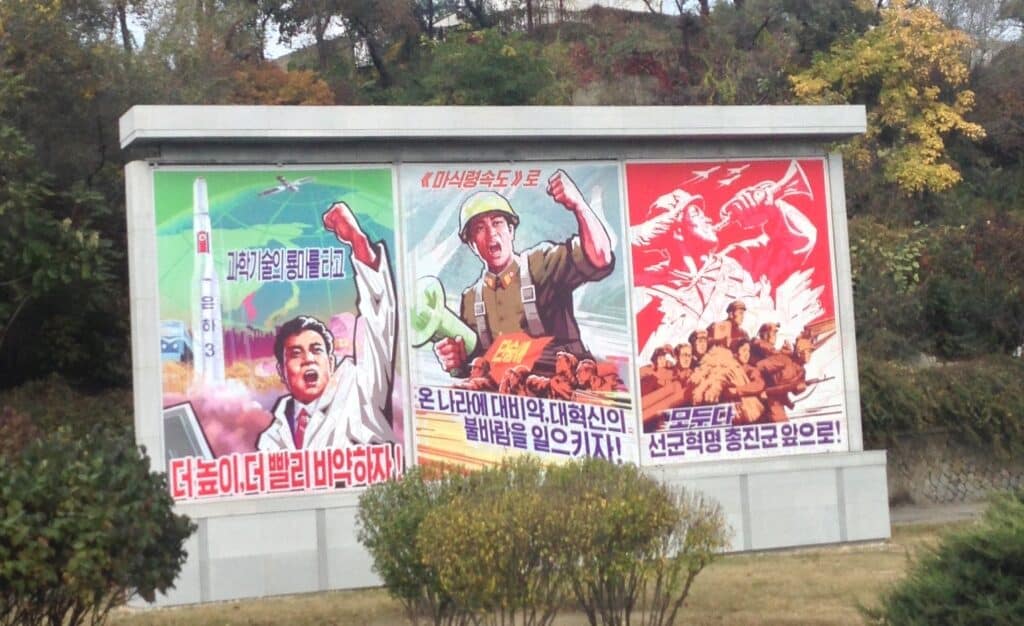
What’s the deal with North Korean propaganda?
The question people always want to know is whether North Koreans believe the propaganda.
My answer is I really couldn't tell you from a five-day tour.
Certainly, the people we encountered seemed very happy with the short and superficial brush-in's we had.
I think many of them are true believers, and many of them are not, but virtually every site you see and everything you do will have something to do with them.
It's creepy but honestly no more disturbing than any other state-sponsored religion or religion in general.
The people of North Korea need something to believe in, and the government gave them something.
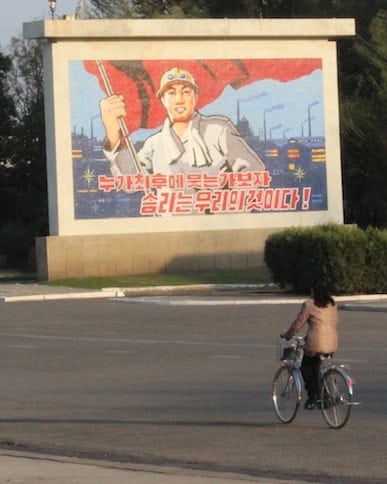
First of all, there is a giant bronze monument in the center of nearly every town of Kim Il Sung.
While I have my doubts that the people genuinely love Kim Jong Il, I have no doubt after talking to North Koreans and reading about Kim Il Sung that they hold him in high regard and aren’t “forced” to respect and revere this man as some may suspect.
There is quite a bit of propaganda everywhere but not nearly as much as you expect.
Since North Korea is so well known for its propaganda posters, everyone tries to snatch as many photos of them as possible.
I’ll put it like this. Those propaganda posters were rare enough that whenever anybody saw one when we were walking or on the bus, everyone would freak out and run to the posters.
Much more frequent then posters were slogans written in Korean. Who knows maybe the slogans are cheaper than the posters.
In my entire time there, I only saw two billboards that specifically mentioned the USA.
Unfortunately, that billboard was in a school which shook me up.
I’m sure it affects them to an extent, but I’m sure a lot of them have formed their own opinions.
Either way, despite the propaganda, most North Koreans aren’t the brainwashed fools that many believe, and I think many of them know quite a bit more about the outside world than we may suspect.
However, for the 15% of North Koreans who get to live in Pyongyang and Kaesong who have free housing, food, healthcare, clean air, a ridiculous amount of green space, and near-zero unemployment, I can’t imagine they are asking too many questions.
For the rest of North Korea, I have no idea what is going on, but I imagine conditions are far worse.
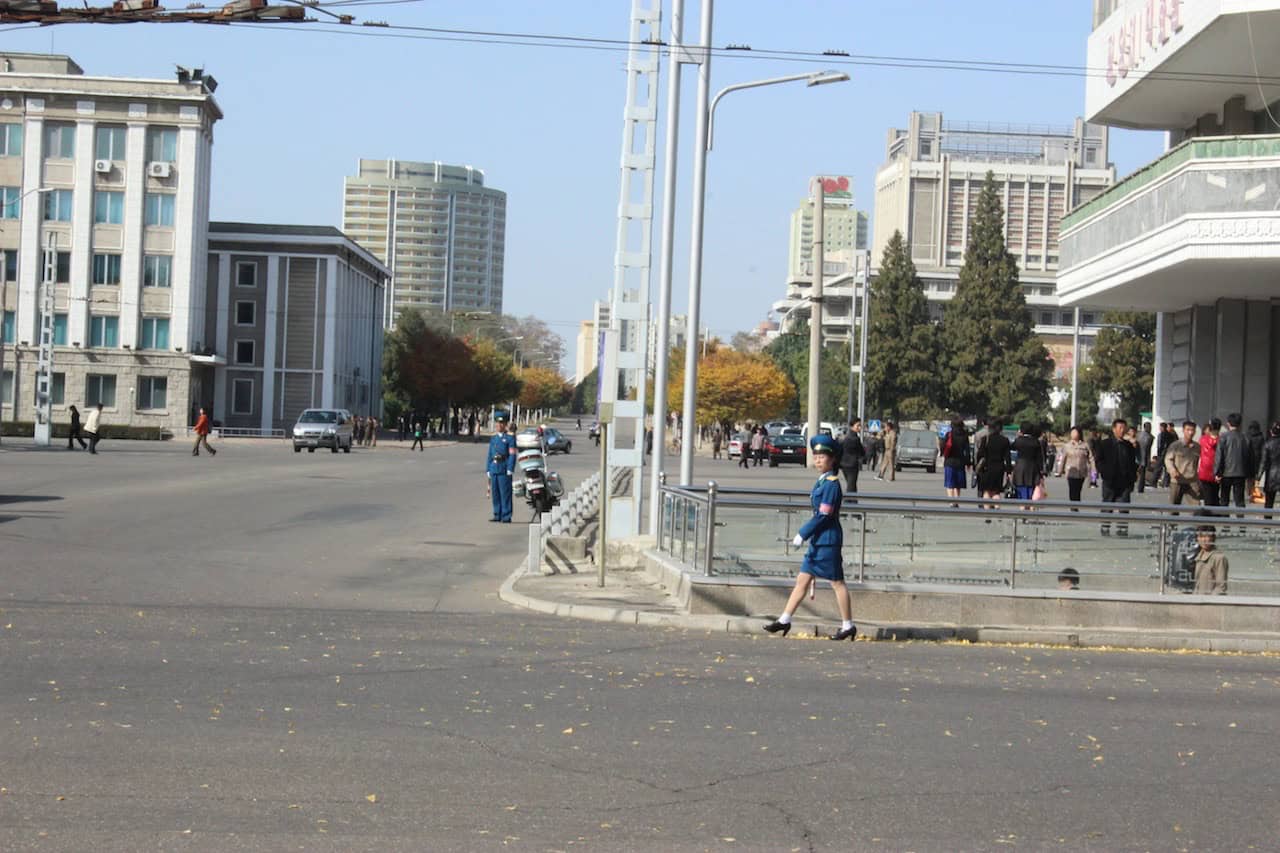
If you go with any tour company other than Young Pioneer Tours , chances are you will be with a much older crowd.
The general profile of the North Korean tourist is retired males in their 50s and 60s traveling the world and wanting to relive and recreate their younger days of being a western tourist behind the iron curtain.
However, Young Pioneer Tours brings a much younger, and frankly wilder group, which made the trip a lot more fun.
I felt bad for our female DPRK (North Korean) tour guide for having to put up with a bunch of boisterous young men traveling the country by bus with her for six full days.
Young Pioneer Tours has by far the lowest price of any tour company that goes to North Korea.
My 5-day tour was just €900 ($1,075), while Koryo tours would charge about triple that amount.
Compare that to five years ago, where a 5-day tour would cost $4,000+.
To get such a low price, they cut a few corners, such as having shared accommodation, but that didn’t bother me at all.
What about all the messed up stuff that's supposedly happening in the country, you may ask?
I can't confirm any facts about North Koreans' day to day life and any restrictions they have on their freedoms based on a five day, highly choreographed tour when I don't even speak Korean.
I don't feel there is any point in me talking about these things because virtually every article I've ever read already points these things out, so I wanted to talk about the Korean people living in the DPRK and the experiences I had.
Not to mention they worked hard on this highly choreographed tour to not let us see any poverty, but when we were on the road, we most certainly noticed it.
Visiting the country is certainly morally ambiguous I will admit that, and I probably won't go back (and cannot go back anyways since Americans are now prohibited from going).
I feel tourism is improving the country's situation, improving the way we see North Koreans, improving the way they see westerners, and improving the economic and political situation.
If you want to go, I wouldn't lose any sleep over it.
Once again, as of 2017, Americans can no longer visit. For people eligible for ESTA visa waivers to go to the United States, remember you will no longer qualify for a visa waiver if you go to the DPRK.
If you ever decide to get residency or a job in South Korea, having visited the DPRK could cause you problems as well.
If you don't have plans to visit the USA anytime soon, then go for it, it's safe!
Freddy Lansky is a former backpacker turned luxury traveler that currently runs a points and travel hacking blog called Points Panda.
You can follow his adventures on Instagram @PointsPanda
COPYRIGHT DISCLAIMER : The copyrights to this article and all of the media in this article (including the photos) are owned by the author, Freddy Lansky, who took the photos. For permission to use any of the media in this article, please contact him first.
Planning a trip? Go Backpacking recommends:
- G Adventures for small group tours.
- Hostelworld for booking hostels.
Victoria@TheBritishBerliner
Tuesday 27th of October 2020
'Nice one Freddy! What a "fun", refreshing piece!
Obviously, I've read many a report about North Korea, but I appreciate the fact that this article was more about the North Korean people themselves rather than a large dose of political issues.
Any destination that is "outside the norm" is always going to be of interest and that's quite OK.
Young Pioneer Tours

All Koreas Part 2: North Korea Tour

Welcome to All Koreas: Part 2. This entire tour includes the rural northeast of North Korea which is way off the usual tourist trail. This tour combines the must see sights of Pyongyang and the DMZ with a connecting Air Koryo domestic flight, something that is certainly unique for an experience in the DPRK.
Our journey first starts in Beijing where you’ll board our overnight sleeper train to Tumen, a border town of China that lays directly across the Tumen River from the DPRK, only a stone’s throw away. Once arriving we’ll have time to explore this strange town and spend the evening at a local hotel.
The following morning we’ll go through Chinese immigration and become one of the very few western tourists to walk across a bridge into North Korea which was first opened by YPT back in 2012. Here we’ll be met by our friendly local Korean guides and head directly to Wangjaesan Grand Monument, one of the most impressive in the country and a must-see for any fan of grand socialist monuments.
We’ll then make our way to Hoeryong city, a beautiful town famous within the country for ceramics, apricots, and the hometown of Kim Jong Suk (Kim Jong Il’s mother). Other highlights include Kim Ki Song middle school where we’ll involve ourselves in an English class; most of these students have most likely never seen a westerner before.
Next on our agenda will be the infamous Chongjin industrial city, the capital of North Hamgyong province, where we’ll be able to visit a local kindergarten where the workers of the Kim Chaek steelworks factory send their children to study. You’ll also explore the recently renovated square centred in North Korea’s third largest city and the revolutionary museum that holds history on the battle for liberation against the Japanese during WWII.
Your next destination is Mt Chilbo, famous for its incredible nature of both land and sea. Here we’ll indulge in the only homestay available in the country for two nights. This one of a kind experience will lead us to spend your time eating, drinking, playing sports and exchanging photos with your North Korean homestay family. We’ll also take advantage of this mountainous region and go for gentle hikes along the peaks for spectacular views. After saying goodbye to our Korean families, we’ll make our way to Orang Airport to board one of the very few domestic flights to Pyongyang city. This concludes our adventure and rare sights of the rural northeast of the DPRK.
Once arriving in Pyongyang, we’ll dig deep into the must-see sights of the capital. We’ll be visiting the Mausoleum of Kim Il Sung and Kim Jong Il, the Korean War Museum, riding the deep and mystifying Pyongyang Metro, drinking at the local microbreweries, Kim Il Sung Square and much much more. And of course, no trip to North Korea is ever complete without a day visit to the DMZ to see where both North and South Korea separate their land.
And there you have it! All the must-see sights of the DPRK in one very convenient and not to be missed package and one one of our most extensive and rewarding DPRK travel experiences.
Be sure to make the most out of your journey by joining our All Korea’s Part 1 tour along the borderlands dividing China and North Korea, and our All Korea’s Part 3 tour in South Korea, visiting the DMZ from three separate parts of the Korean peninsula.
Wednesday 19th June
- Meet your YPT guide at 10:00am at the Beijing Zhong Gu Hotel near Beijing Railway Station found here . During this meeting, we’ll go through the tour’s itinerary, receive DPRK visas and tickets, as well as a great chance to meet your fellow travellers and to discuss any other questions you may have about the DPRK. We’ll use this time to stock up on drinks, snacks and food for the train journey.
- Take the overnight sleeper train at 1:00pm for Tumen city located on the border of China and North Korea
- Hot meals on the train available from 25 – 50RMB
Thursday 20th June
- Arrival in Tumen at 3:06pm.
- Check into hotel situated within walking distance of the border.
- A chance to hangout by the river to have dinner and look over the border in the DPRK, this is also a great place to buy local souvenirs.
- Overnight in Tumen.
Friday 21st June
- Up early to drive to the border to go through some very relaxed but also curious Chinese customs.
- Walk the bridge into the DPRK to meet your local guides and proceed through DPRK customs officials.
- Get your first taste of North Korean cuisine with lunch at a local restaurant in Namyang city complete with a performance
- Drive to Wangjaesan Grand Monument – one of the most spectacular monuments in the DPRK
- Drive to Hoeryong city (2 hours) – Population 140,000, This city is most famous in the country for white apricots, ceramics and being the birthplace of President Kim Il Sung’s revolutionary hero wife, and Kim Jong Il’s mother – Kim Jong Suk.
- We’ll pay a very special visit to Kim Ki Song Middle School – they have an English class here full of students learning basic English. We use this time to join the students, ask them questions and let them ask us questions. This is one of our favourite stops on the tour.
- Check into the Hoeryong Hotel
- Dinner, drinks and overnight at the hotel
Saturday 22nd June
- Visit the statue of Mother Kim Jong Suk and her revolutionary museum.
- Visit the native home of Kim Jong Suk
- Visit Hoeryong School Children’s Palace
- Drive to Chongjin City (2 hours) – Chongjin is North Korea’s third-largest city with a heavy focus on the steelworks and fishing industry.
- Check-in at Chongjin Hotel – formally a hotel used to accommodate Soviet scientists back in the 80’s
- Lunch at the Chongjin Seamen’s Club – here you can try Chongjin’s best noodle dish
- Visit the newly renovated Chongjin Square to see the statues of Kim Il Sung and Kim Jong Il
- Explore the square to visit the newly built Electronic Library – here the locals have a chance to use their local intranet for research, practice their typing skills and to play locally made computer games
- Visit the Revolutionary Museum of Chongjin
- Visit the Kim Chaek Steel Complex Kindergarten for a children’s performance – before visiting we can stop by a local store to pick up some stationary or candy for the students
- Chongjin Art Gallery – One of the best art galleries in the country to offer unique propaganda artwork
- Visit the Soviet Martyrs Cemetery – this cemetery was built to commemorate the Russians who landed in Chongjin to battle the Japanese Aggressors during WW2. The cemetery has an incredible view of Chongjin’s east port.
- Dinner and drinks at Namgang Restaurant – during dinner we’ll have the option to dance and sing with the Korean waitresses.
- You can have the option to visit the new Namgang hot spot for a hot bath and swimming. (60 RMB extra)
- Overnight and drinks at Chongjin Hotel
Sunday 23rd June – Korean home stay
- Stop by the Chongjin Foreign Language Institute to greet the students and join in on a class. This is also a fantastic opportunity to speak with the students to get a better understanding of their lives in Chongjin
- Susongchon Foodstuffs Factory – where bread, soju and other sweets are made locally in Chongjin city
- Drive to Mt. Chilbo (3 hours) stopping along the coastal road for some gorgeous scenic views
- On the way stopping at the North Hamngyong Mushroom Factory – Here we can see how mushrooms are produced as well as sample the local product.
- Arrive at the entrance to Mt. Chilbo for an explanation of the area using the world’s largest mineral painting map as a guide.
- Lunch at Outer Chilbo Hotel
- Begin your easy hike through the mountains of Chilbo – this region is the most famous part of North Hamgyong province and has lots of colourful stories to explain the various rock structures.
- On the way stopping by Kaesim Buddhist Temple and meet the local monk
- Trip Highlight – Drive to the home stay village where we’ll be greeted by our families and then taken to our homes. We encourage to bring gifts and photos from your home countries as a nice gesture.
- Dinner and home stay overnight at the village – two guests per family
Monday 24th June – Korean home stay
- We’ll begin another hike, this time up to Tokgol and Gangsonmun areas – these are the highest peaks of the Mt. Chilbo area, and we’ll have stunning views of both the land and the sea.
- Picnic lunch prepared by our families once we reach the top
- Spectate or play volleyball with the locals, play with the children, help with some light chores or walk around to meet the neighbours!
- Jump on a local fisherman’s boat and drive out to see to see the magnificent Mt. Chilbo from afar (20 RMB extra)
- Optional Korean wrestling and volleyball tournament with the villagers.
- Dinner at the home stay village
- Bonfire party on the beach with the villagers providing entertainment by singing songs and dancing.
- Overnight with our Korean home stay families.
Tuesday 25th June
- Morning chores with home stay family such as sweeping, washing dishes, watering vegetables in the front yard, playing with the dog, etc– not a must but a very polite gesture as a thank you for accommodating you
- Drive to Orang county on the way stopping at:
- Yombun revolutionary site – this beautiful scenic site named for being one of the first places on the east coast where villagers discovered a new way to get sea salt despite the east sea being almost tideless.
- Gyongsong Revolutionary Museum
- Jipsam Revolutionary Site with picnic lunch along the beach
- Arrive at Orang Airport and board a local domestic Air Koryo flight at 3:00pm flying to Pyongyang city – here we’ll say goodbye to our local North Hamgyong guides!
- Arriving in Pyongyang at 3:50pm and be greeted by our local Pyongyang guides
- Head towards the capital and stopping at the Three Revolutions Exhibition centre – the exhibition primarily showcases the three primary fields of revolution – ideological, technical, and cultural.
- Stop by and stretch our legs along the new Ryomyong Street in Pyongyang – the street was opened in 2017 and lined with modern DPRK apartments and high-rises, one of them is the third tallest in the city.
- Dinner at a local Korean restaurant on Ryomyong Street
- Check in and overnight at Sosan Hotel
Wednesday 26th June
- Walk through Mansudae fountain park and see the mosaic pictures of President Kim Il Sung and the leader Kim Jong Il.
- Visit Mansudae Grand Monument – the two large bronze statues of President Kim Il Sung and Leader Kim Jong Il overlooking the city. (Optional extra- you can present flowers if you wish: 40RMB or 5 euros).
- Foreign Language Bookshop- Shopping central for books, pins, DVD’s, CD’s and periodicals in English and other foreign Languages, followed by a brisk walk to:
- Kim Il Sung Square – The central square of Pyongyang City.
- Pyongyang Metro! Ride from Stop 1 to Stop 2 then on to stop 6! Exiting to:
- The Arch of Triumph- The largest Victory Arch on the planet- it celebrates the victory over the Japanese and the return of the general Kim Il Sung to his home city.
- Lunch at the Chongryu Korean Hot Pot restaurant.
- Visit the recently renovated Korean War Museum – let the expert local guide show you around the enormous museum featuring dioramas, locally used weapons, tanks, and captured American equipment
- USS Pueblo – The only US Naval Ship still held captive by another nation.
- Juche Tower – The tallest stone tower in the world it represents the eternally burning Korean Juche Ideology. Visit to the top is 40RMB or 5 euros for a panoramic view of the city
- Visit Kwangbok department store – here we can buy locally made items and exchange our foreign currency into local DPRK Won
- Dinner at a local restaurant to try the famous Pyongyang cold noodles or Korean Bibimbap with a special performance from the waitresses
- Overnight at Sosan Hotel
Thursday 27th June
- Kumsusan Palace of the Sun – The mausoleum for the Great Leader President Kim Il Sung and the Dear Leader Kim Jong Il.
- Grand People’s Study House – Library and academic centre for adult learners, this grand building is built in the Korean style and affords a great view over the central Square.
- Lunch at the Moran Hill Restaurant
- Stop by the Mansudae Art Studio where all the art works, portraits and monuments from the government are produced
- Monument to the Party Foundation- Built in 1995 to celebrate the 50th anniversary of the founding of the worker’s party.
- Quick coffee break at Pyongyang’s “hipster cafe” the Kumrung Cafe for some of Pyongyang’s best coffee.
- Mangyongdae Schoolchildren’s Palace – the DPRK’s largest schoolchildren’s palace. We’ll have a chance to visit classrooms to see students studying their elective subjects including dancing, sports, musical instruments, calligraphy, computer science, embroidery and more. The students of the palace will put on a spectacular performance.
- Drinks at the Taedongang #3 brewery with seven different beers on tap! (20RMB or 3 euros each). Softd rinks and coffee available
- Dinner at the Pyongyang Duck BBQ Restaurant.
- Overnight in Sosan Hotel.
Friday 28th June
- Up nice and early for the drive to Kaesong city (2 and a half hours)
- Panmunjon DMZ Village – see the DMZ and the treaty and conferences rooms where the armistice was signed all in the company of a friendly KPA officer guide (you can also take pictures of soldiers here!).
- Koryo Museum – the oldest university in Korea and now a converted museum of local history. Also the site of the best propaganda and stamp/postcard shop in the DPRK!
- Lunch at the Thongil Restaurant in Kaesong City – try your hand at traditional Korean Pansangi – a series of dishes served in bronze bowls. (Optional extras – Dog soup 40 RMB or 5 euros).
- The concrete wall of the DMZ – this is a little off the beaten track and gives us a great glimpse at the wall which was erected by the South Koreans during the 70’s. We can even see South Korean watch towers along the hill from the DPRK post
- Drop by Sariwon city (Capital of North Hwanghae province) to walk in the local folk custom park and view the city from the mountain top pagoda. Also if you like you can try Makkoli in a local Makkoli Bar.
- Photo opportunity of the Monument to the Three Charters of National Reunification, standing over the Reunification Highway.
- Dinner at the Lamb BBQ Restaurant.
- Overnight at the Sosan Hotel.
Saturday 29th June
- Flight members depart at 9:00am for Beijing on Air Koryo arriving at 9:55am Beijing time.
- Train members depart at 10:25am heading back to China
- Arrive into Dandong at 4:30pm
- Sign up for our All Koreas Part 3 tour and meet your Part 3 YPT guide at the station exit and begin tour!
- Part 2 train members depart at 6:30pm for the overnight sleeper train to Beijing
Sunday 30th June
- Train members arrive 9:00am at Beijing Railway Station.
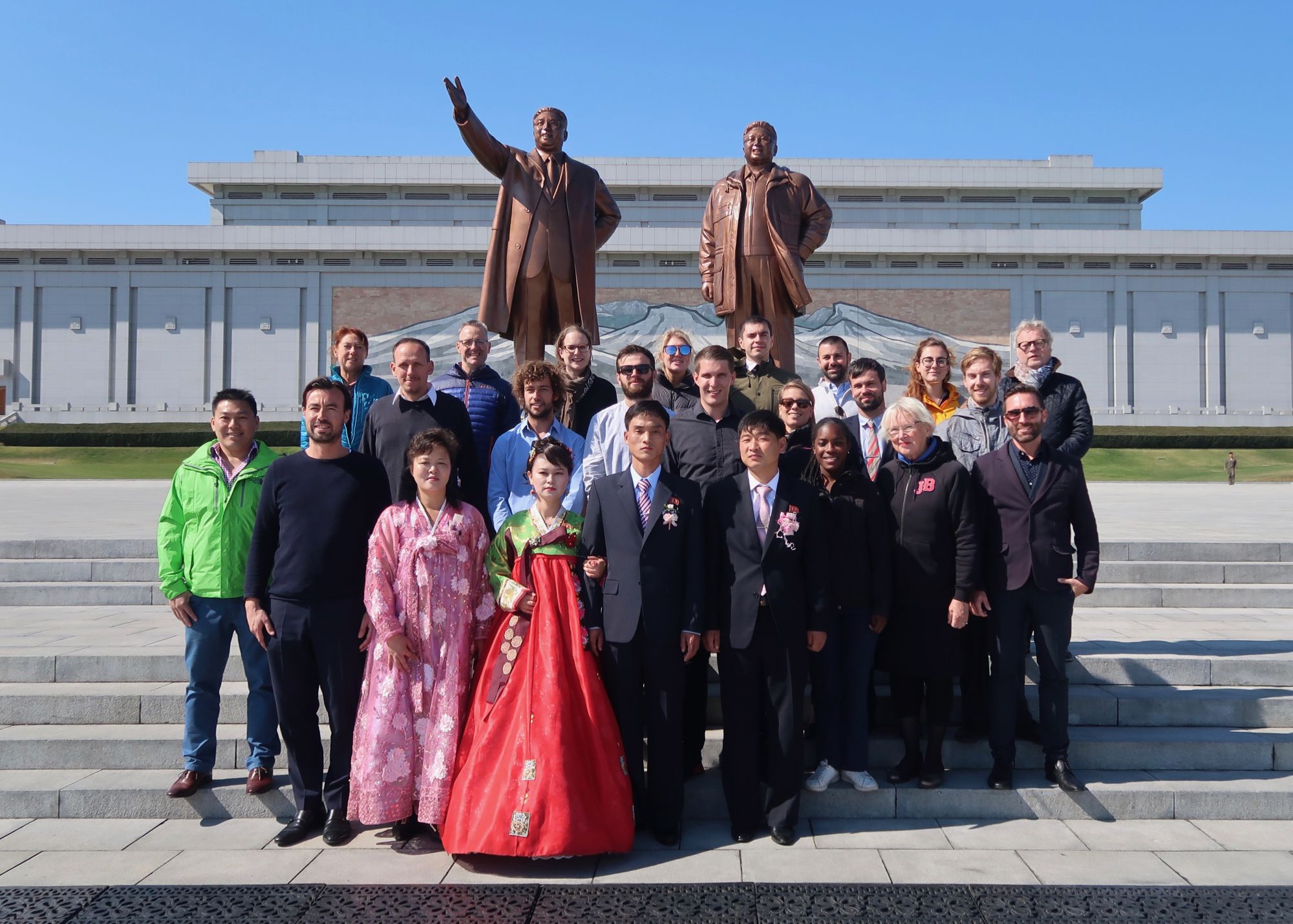
Undiscovered North Korea: North Hamgyong Province
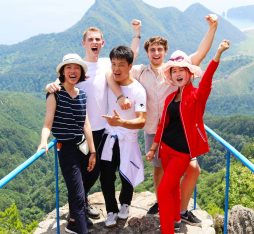
What’s it like staying at North Korea’s only homestay – DPRK Guide
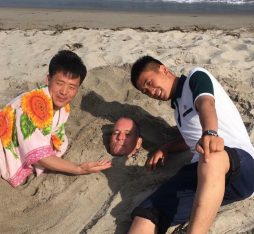
Mangyongdae Children’s Palace – Pyongyang North Korea
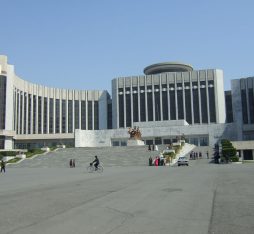
Mansudae Art Studio
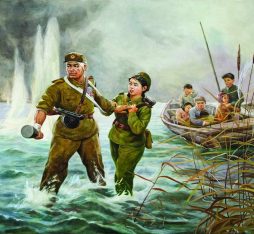
Kumsusan Palace of the Sun – DPRK Guide
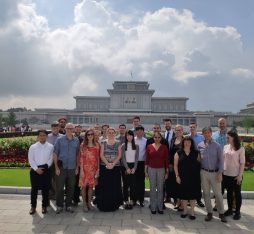
North Korean Cuisine – A complete guide
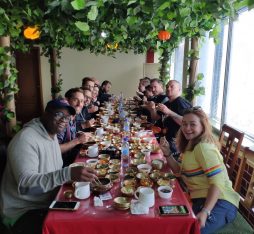
Women in the DPRK: Mother Kim Jong-Suk
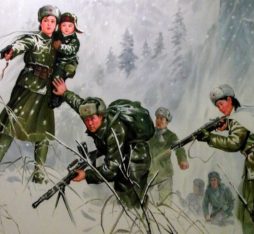
Top 5 awesome North Korean souvenirs
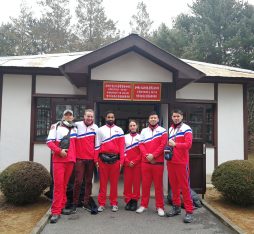
Domestic North Korean Flights
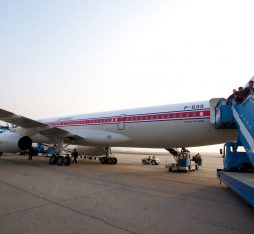
A quick guide to North Korean cities
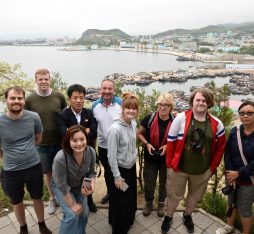
Victorious Fatherland Liberation War Museum – DPRK Guide
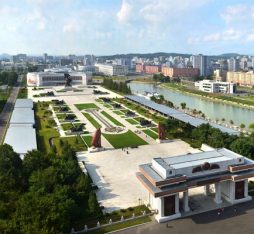
The Pyongyang Metro – DPRK Guide
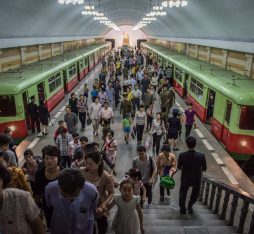
Kwangbok Department Store and Supermarket – DPRK Guide
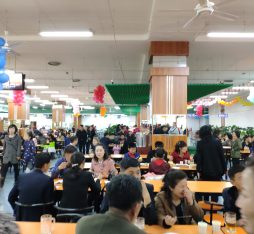
Korean Language: Is South Korean different to North Korean?
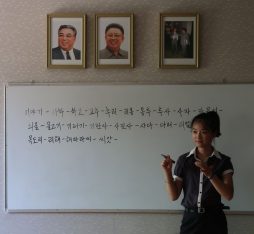
- Tour Extensions
Want to extend your YPT adventure? Join one of our great tour extensions
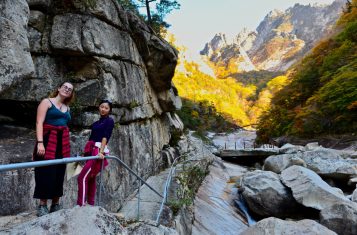
Mount Kumgang Extension
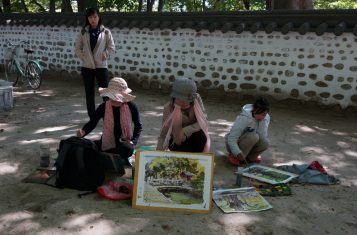
Overnight in Sinuiju
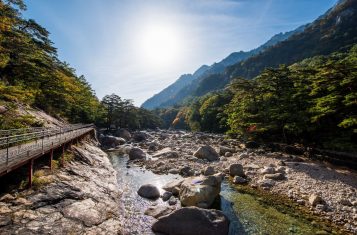
Mount Myohyang Day Tour Extension
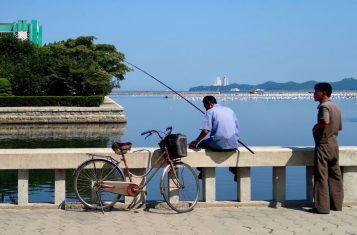
Wonsan City Beach Extension
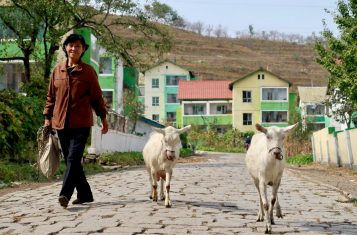
Haeju City Extension
- Start Date : June 19th 2024 End Date : June 30th 2024
- Price : €1595
- Duration: 10 nights, 11 days
Tour Highlights
- One of the most comprehensive tours of North Korea ever offered
- Gain an insight into the border life of China and North Korea in Tumen city
- Explore the rarely visited North Hamgyong province and Chongjin - the DPRK's third largest city
- Stay in North Korea's only home stay with your very own North Korean family within the beautiful Mt Chilbo region
- Experience an Air Koryo domestic flight on a route no other airlines can fly
- All the must see sites of Pyongyang - Kumsusan Palace of the Sun, Juche Tower, Korean War Museum, all the grandest monuments and much more
- Visit Panmunjom Village (DMZ), Kaesong and Sariwon city in the lower provinces of the country
Inclusions and exclusions
• Twin share accommodation (single supplements are available for an extra 40 EUR per night). • Train in and out Beijing-Tumen and then Pyongyang-Beijing. • Domestic flight from Orang to Pyongyang • All meals in the DPRK unless specified in the itinerary. • Korean and western guides • Air-conditioned bus and driver. • All entrances (unless otherwise stated)
• Flight from Pyongyang to Beijing • Extra drinks and souvenirs • Cost of visas • Tips for Korean guides and the driver. • Additional events not listed in the itinerary
We have expert guides ready to help answer any questions you may have.
Tripadvisor
Latest news.
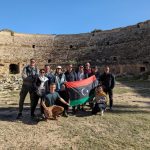
Libya tourist e-visa scheme now available

Dave Kitson named Nauru Football Manager
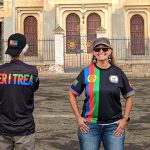
THE YOUNG PIONEER PODCAST S2, E5: Horn of Africa Part Three – Eritrea

An American in South Korea Heads North (Part 1)
- Terms & Conditions
- Payment Policy
- North Korea Tours – 2017 Tours
- Independent Tours
- North Korea FAQ
- Our Terms and Conditions
- Our Payment Policy Terms
©YoungPioneerTours.com 2024. All rights reserved.
- North Korea
- Travel Guide
- Premium Hotels
- China-DPRK Train
- Premium Tours
- Group Tours
- Private Tours
- Signature Series
- Sport & Adventure
- Why Uri Tours?

How to Book a North Korea Tour
So you’ve finally decided to take that trip to North Korea (DPRK) you’ve been thinking about for a while. Now what? Here’s how to book a North Korea tour with us! It’s easier than you think.
Step 1: Choose a North Korea tour
The first step is choosing your tour to North Korea! We run scheduled group tours all year round ranging from short weekend trips away to cross-country adventures covering all corners of North Korea. If you’d prefer a closed tour setting individually or with friends or family, we can arrange private tours of any length with flexible dates.
Our tours are designed to maximize interaction with the locals. Beyond the major political highlights, we can arrange everything from cycling , surfing and marathon running to Buddhist temple excursions or ringing in the New Year in Kim Il Sung Square !
Once you have chosen a tour, simply contact us by email or book directly through our website. On the selected tour page:
- 1. Choose your dates from the dropdown (see flex-date options on some regular tours)
- 2. Select your room occupancy*
- 3. Choose to pay the deposit or full amount**
- 4. Click the “Book Now” button, check your booking details, and then select “Proceed to Checkout” for payment options.
* Twin/double rate is the default and this applies if you’re sharing a room with someone. If you’re traveling alone, the single rate applies. In most cases, upon request, we can pair you with another single traveler for the twin/double rate. If we’re unable to pair you, the full single rate will apply.
** Only the deposit is required to confirm your booking. The balance becomes due closer to departure. We accept all international credit cards, international and domestic wire in a range of currencies, PayPal, WeChat, Alipay, and we even take Bitcoin!
Note: At this time we’re unable to take United States , South Korean or Malaysian passport holders on our tours.
Step 2: Complete your visa application
Once you’ve booked your North Korea tour either by email or through our website, you’ll receive our booking confirmation. The link to our DPRK visa application will be contained. The application is entirely online and you’ll need a high-resolution scan of your passport biographical page (both pages visible) and a passport-style photo ready to attach. After submission, we formally process your application for lodgement. If we require any clarification, we will contact you.
We handle the entire DPRK visa process for you and it’s included in our price. You don’t need to send us your physical passport and you don’t need to visit a DPRK Embassy. North Korean visas are separate documents that are not stamped inside your passport. We provide this visa to you in China on departure day.

Step 3: Book Your Connections to China
After we’ve processed your DPRK visa application, we’ll notify you. The next step will be booking your connections to China.
Your travel between China and North Korea, whether it be by train or flight , is arranged by us and included in our price. However, you must independently book your own travel to China.
For Beijing morning departures, we recommend arriving the night before. For evening Shanghai departures, it’s typically sufficient to arrive earlier that same day. We provide further advice on connections in our orientation materials.
We can arrange private airport transfers in both Beijing and Shanghai and can assist with booking hotels or local trains. If you need any assistance in China, we’re able to provide support.
Step 4: Get a Chinese visa
In all cases, you must clear immigration into China to meet us in Beijing or Shanghai. Depending on your nationality, you may or may not require a Chinese visa to enter China. It’s the responsibility of the traveler to get to China. There are two main options, outlined below.
Chinese visa: We highly recommend obtaining a Chinese visa. This is the most reliable method of entry into China. For most of our tours by flight or train, you should apply for a double-entry tourist visa (type L).
To apply for a Chinese visa at your nearest consulate or visa service centre, you will typically require a China flight itinerary (confirmed, not reserved) and a hotel reservation if applicable. You should provide your flight and/or train reservations with us as supplementary documentation. In addition, on request we can provide a stamp-sealed letter confirming your travel with us.
Please handle visa processing at least two weeks prior to your departure. Note that Chinese consulates often will not process applications outside of the three month window of departure.
24/144-hour visa-free transit policy: For select nationalities, there is a 24 and 144-hour visa-free transit policy through Beijing and Shanghai airport. However, we strongly recommend obtaining a Chinese visa as some travelers have had varying success with this policy.
If you decide to use this transit policy, read our guide very carefully to understand the risks, the eligibility criteria, and prepare all necessary documentation.
Step 5: Get Medical Insurance
Medical insurance covering North Korea is required for all of our tours. It’s worth checking with your current insurer to see if you’re covered. If your medical insurance covers the DPRK (most worldwide plans do), then nothing further is required. Just bring your insurance card with you on the trip in case of any emergencies.
If you are not covered, simply let us know and we’ll direct you to an appropriate insurance provider.
Note: If joining one of our ski and snowboard tours, you will need winter sports cover.
Step 6: Pay Your Balance
Your balance payment becomes due one month prior to departure. We can accept all aforementioned payment methods, and we are flexible with the payment currency.
Step 7: Meet Us in China and Begin Your North Korea Adventure!
This is it! It was that easy to book a North Korea tour with us. After meeting us in China, it’s time to sit back and enjoy the trip of a lifetime!
Filed under: uritours | February 22, 2020
Be the first to leave a comment forHow to Book a North Korea Tour

- Group tours 2016
- Group tours 2017
- Group tours 2024
- Individual tours
- How to get to the DPRK?
- DPRK tourist guide
- Hotels in the DPRK
- Masik Ski Resort
- Historical sites
- Revolutionary spots
- Main cities
- Pyongyang (capital)
- Chongjin (city of iron)
- Hamhung (2nd biggest)
- Kaesong (ancient capital)
- Wonsan (main port)
- Celebrated mountains
- Mt.Kumgang (Diamond)
- Mt.Myohyang
- Pyongyang Marathon 2024
- Rason Free Economic Zone
- Masik Pass Ski Resort
- Demilitarized Zone (DMZ)
- FORMALITIES
- Book / cancel your tour
- Visa support
- RAIL AND FERRY TOURS
- Trans-Siberian Railway
- Eastern Dream Ferry
- OTHER COUNTRIES
- Turkmenistan
- South Korea
Individual tours in the DPRK
What individual package covers | Price table | How to book
You can make your own tour in North Korea - choose your own schedule, itinerary and places you would like to visit! We would be delighted to help you arrange tailor-made journey in the DPRK. Please take a look at our DPRK tourist guide here >> to see what you can do in the country.
Individual travelers will be prodvided with an individual transportation (a sedan instead of a bus), they will enjoy more freedom in choosing their own meals, and have more time and flexibility visiting various places. Comparing to the group tours individual tours are more expensive, so if you are looking for a cost-saving option, please have a look at our group tours.
Even when only one person travels in the DPRK there will be two compulsory guides from the Korean hosting travel company accompanying a tourist at all times. Please note that even though it is an individual tour you cannot visit on your own places outside your hotel without your Korean guides.
Please note that your itinerary in the DPRK should be agreed in advance (you will discuss your program with Korea Konsult when you book your tour with us) and approved by our Korean partner. Upon arrival to North Korea any change in the itinerary is possible only if it is accepted by the hosting Korean company.
What individual package covers
Our all-inclusive packages covers every aspect of your journey starting from Beijing airport.
*Please note that some places in the DPRK are not open for tourist visits **It is possible to choose between different hotel types in Pyongyang only
Traveling options
The prices in the table below are based on AirKoryo flight Beijing-Pyongyang-Beijing. At the same time we can arrange flight or train from/to other cities. Please refer to our How to get to North Korea page here
All-inclusive individual tours in North Korea cost table (AirKoryo Beijing-Pyongyang-Beijing)
The price table below is indicative. The cost of your journey depends first of all on how many people travel with you - the more friends you travel with the less will be the price.
How to book
To book your individual journey in the DPRK please click here . Please note that we will need 3-4 weeks to arrange your North Korean visa, therefore please make your booking in advance.
- What others say about us
Discover the Planet Earth with us
FAQ | How much does it cost to go to North Korea?
By Koryo Tours
Costs to consider for your trip to the DPRK
FAQ: How much does it cost to go to North Korea?
Most introductory tours to North Korea will typically range between 600-1500 EUR per person depending on your point of departure, tour length, group size, accommodation type, rooming preference, and your preferred method of transport.
Our regular group tours primarily depart from Beijing, the main transport hub for both air and train transport to North Korea. For some tours, it is also possible to depart from Dandong in northeast China by train, but requires a Chinese visa, and so is more convenient for already those living or traveling in China. There are also flights to Pyongyang from Shenyang, Vladivostok, and Shanghai (high-season charters).
We recommend visiting the country on at least a 3-night tour. A 3-night tour allows you to visit both the capital Pyongyang and the Demilitarized Zone near Kaesong. Shorter tours are available over specific holidays and special events, such as the Pyongyang Marathon . A 3-night tour from Beijing can range between approximately 800-1100 EUR.
For travel, there are some other costs to consider such as the recommend industry standard end of tour tip for the Korean guide team (10-15 EUR per traveller per day on group tours), money for souvenirs, and tour specific optional activities such as the the Mass Games, optional activities, or the Pyongyang Marathon race fee.
Check out our upcoming North Korea group tours here (prices are listed individually by tour) and here for a our pricing for private independent tours. We offer discounts on our non-budget tours to return customers, students, and groups of 3 or more travelling together. See here for more details on our discount policy.
See here for a list of our North Korea budget tours in 2018/9.
Updated 15 October 2018.
You have successfully joined our subscriber list.
- Group Tours
- Private Tours
- Pyongyang Marathon
- Turkmenistan
- Cultural Engagement
- Country profile
- Terms & conditions
- Why choose Koryo
[email protected] | + 86 10 6416 7544 Room A409, Jucai Building. No. 76 Caoyuan Hutong. Dongcheng District, Beijing, 100027, PR China
中国北京市东城区草园胡同76号聚才大厦A 座409 室, 邮编:100027 Download contact card
Not registered yet? Register now
Trouble logging in? Reset password
* All fields are mandatory
Got an account already? Let me log in

- Disclosures

How to Visit North Korea’s DMZ Border (Updated 2023)
A s controversial a place as North Korea is, it's swiftly gaining attention from the curious tourist eye. Our intrigue to see it was piqued during a visit to Seoul with friends. Having now taken the DMZ tour ourselves, this highly informative if not haunting experience is one we would highly recommend . So, if you've got guts and a desire to get a snippet into one of the most closed countries on earth, here's how to do it!
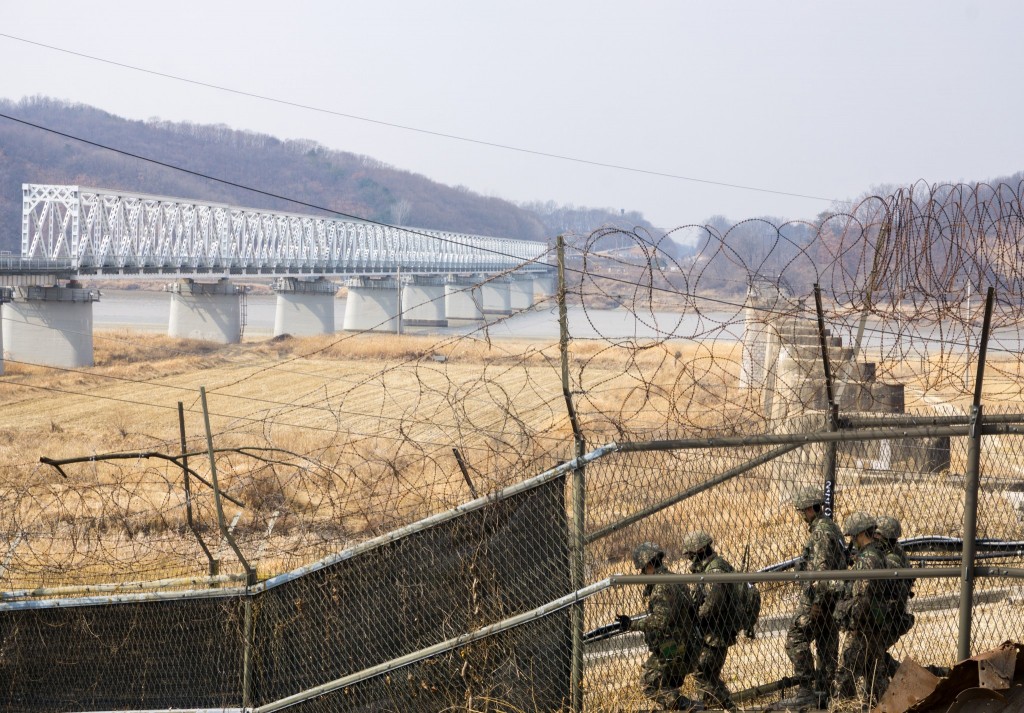
Getting there & where to stay
First, you need to get yourself to Seoul, which is the nearest major city to the DMZ border. South Korea is only reachable by flight, with most planes flying into Incheon International Airport. Use Skyscanner and search by entire month to see the cheapest dates to fly. Be sure to check our flight booking hacks here to get yourself the best price. And don't forget to book your airport transfer and a 4G Data SIM card before you land!
A fast way to get a big discount on your flight is to sign up for the Chase Sapphire Preferred credit card. This card offers a massive sign-up bonus of 60,000 bonus points (worth $750 ) after spending $4,000 in the first 3 months. United and Singapore Airlines are both partner airlines of this card, and both offer flights to Seoul, meaning you can convert your points to these airline loyalty programs, or just book directly through Chase Ultimate Rewards.
Seoul is a buzzing megacity with plenty of enticing accommodation options. There are plentiful AirBNBs and hotel selections, but be sure to reserve ahead in peak season. Some convenient neighbourhood options include Hongdae, Itaewon, Myeongdong, Gangnam, and Jamsil. Check TripAdvisor for more local tips and advice.
There is plenty to explore in Seoul itself, and a local guide can help ensure you catch the best of the best. Be sure to check out the Gyeongbok Palace & Temple , or grab the Seoul Pass , which grants free entry to 65 attractions and discounted entry to 101 more.
How to visit North Korea's DMZ Border:
Step 1. choose your points of interest.
There are several companies that operate DMZ tours. As much as I despise group tours, you can only visit the DMZ with a tour , as it has restricted civilian access and requires a mandatory military escort.
No two tours are the same, but you should choose one based on your budget, customer reviews, and points of interest that are included. Tours can be browsed with reviews, prices, and instant confirmation through Klook , GetYourGuide and Viator . The main highlights to select from are as follows:
The Joint Security Area (JSA)
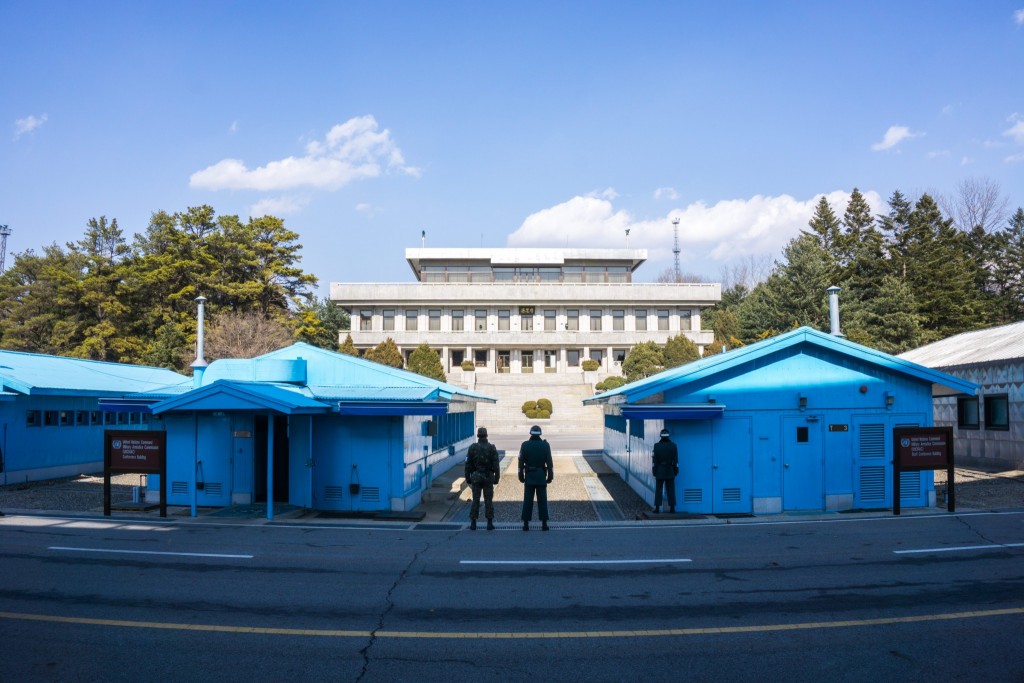
Located in Panmunjom, the JSA is the closest point a tourist can get to North Korea . At this spot, you'll have a chance to physically stand in North Korea itself and take a photo as proof (more on that below). This area is occupied by the South Korean and US military, and is complete with a gift shop selling original items from North Korea, including stamps, money, and wine (which in our experience tastes like nail polish remover and turpentine but hey, at least you can say you tried it).
NOTE: As of 2023, the JSA is still closed to visitors due to COVID, and is not included in any tours.
Odusan Unification Observatory
One can safely view day-to-day life in North Korea without setting foot in the country at Mt Odu Observatory. Binoculars (free of charge) provide ultra zoomed up views of North Korea opposite the Han river below. On our visit we were able to see civilians walking around on the other side.
Infiltration Tunnels
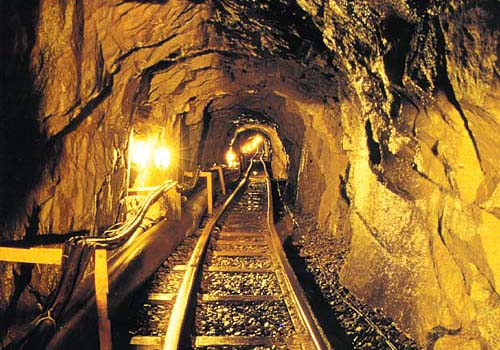
Scarily enough, around the time that the North and South were having peace talks, North Korea began digging underground tunnels to infiltrate the South. They were never completed, but were discovered in 1984. The longest tunnel is 1,082 metres. The 3rd tunnel is the closest to Seoul (only 44km away) and could move ~30,000 troops and artillery per hour.
Dora Observatory
This observatory offers binocular views of North Korea's fake town, Kijong-dong. The town was first built in the 1950's to lure South Koreans to defect and move across the border. From visual observations from the South, it has been uninhabited with windowless, incomplete buildings since its construction.
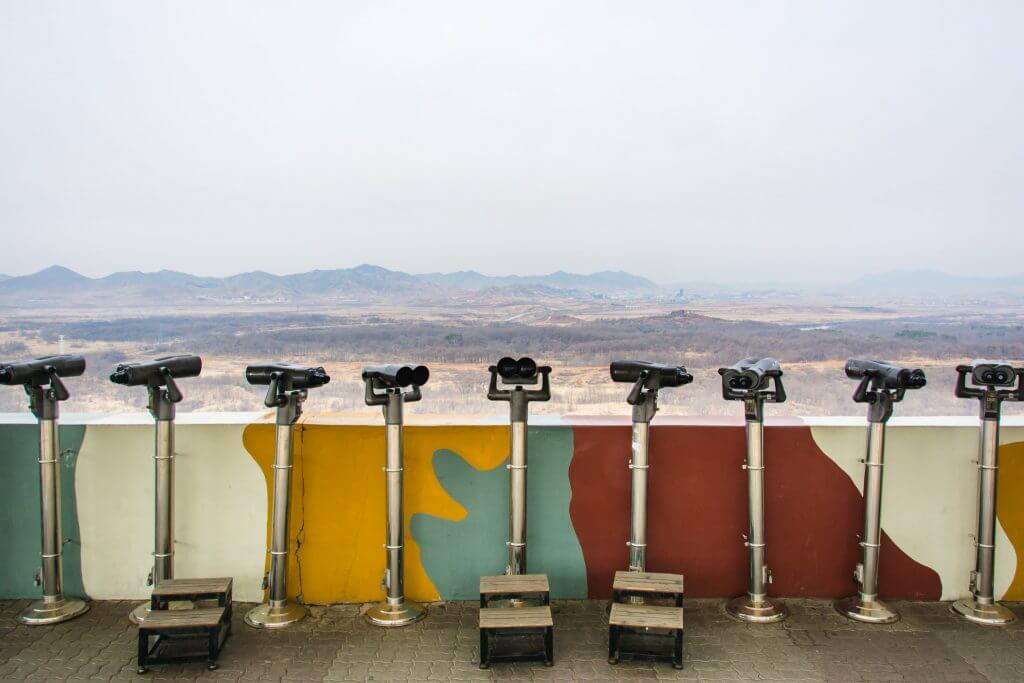
Dora Observatory is so named after Dorasan the mountain on which it sits. The nearest train station has a fully completed train line that runs to Pyongyang. Though the North cooperated in its completion, it was never used. It is hoped that when re-unification is reached, the train line will be used to connect the two Koreas.
Freedom Bridge
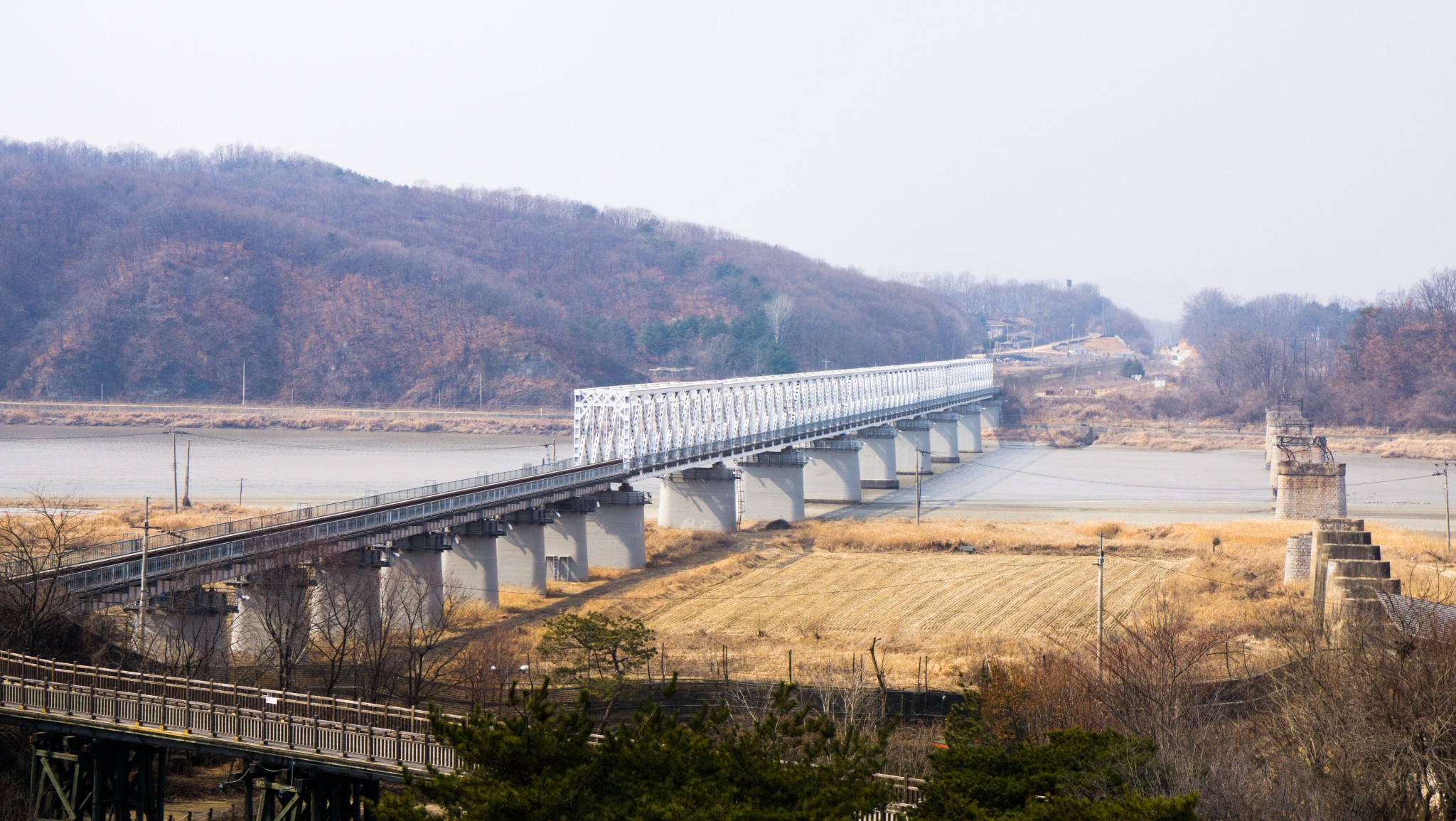
The Freedom Bridge connects North and South Korea, though a massive barricade blocks entry to the connecting point over the river. If the two sides are ever connected, this bridge could be used to enter and exit North Korea.
Step 2. Select a tour
Once you've decided on your must-see highlights (as listed above), you can select a tour.
There are traditional tour companies to choose from, which are listed at the end of this article along with prices and contact information, but it's much easier to book tours online with Klook , GetYourGuide and Viator . You pay in advance and get fast confirmation, so all you need to do is bring your voucher to the tour. There are reviews, photos, and videos that make choosing the right tour simple. The traditional companies require back and forth e-mail or phone communication when booking direct, so Klook , GetYourGuide and Viator are convenient ways to avoid all that hassle.
One of the most popular tours is this day tour on Klook , with more than 50,000 bookings. This is the tour most of our readers have chosen, and is the tour we would select today. Our trip was now several years ago, and at the time we took the Special Panmunjom Tour by Panmunjeom Travel Center which does not visit the tunnels but goes to Odu Observatory and the JSA. This tour offered the chance to speak with a North Korean refugee (defector). This allowed us to learn about how people escape the North, how they adapt to life afterwards, and what knowledge they have of the outside world living in North Korea.
Get $10 USD off your first Klook purchase with coupon code THRIFTY10 (minimum spend $120 USD, new users only)
Here are some of the top-rated tours that can be booked online:
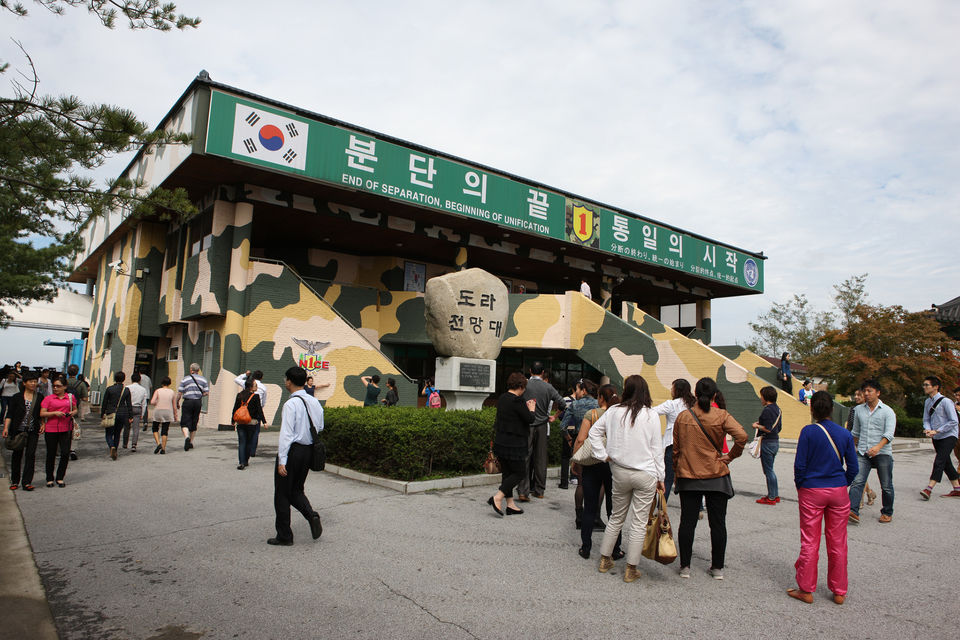
South Korea Demilitarized Zone Half-Day Tour (Bestseller)
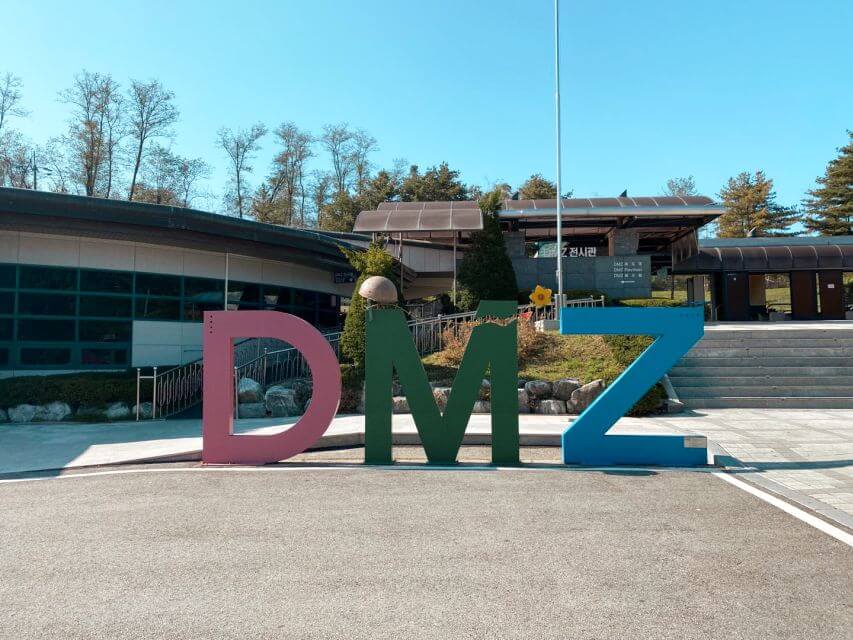
From Seoul: Half-Day Demilitarized Zone (DMZ) Tour
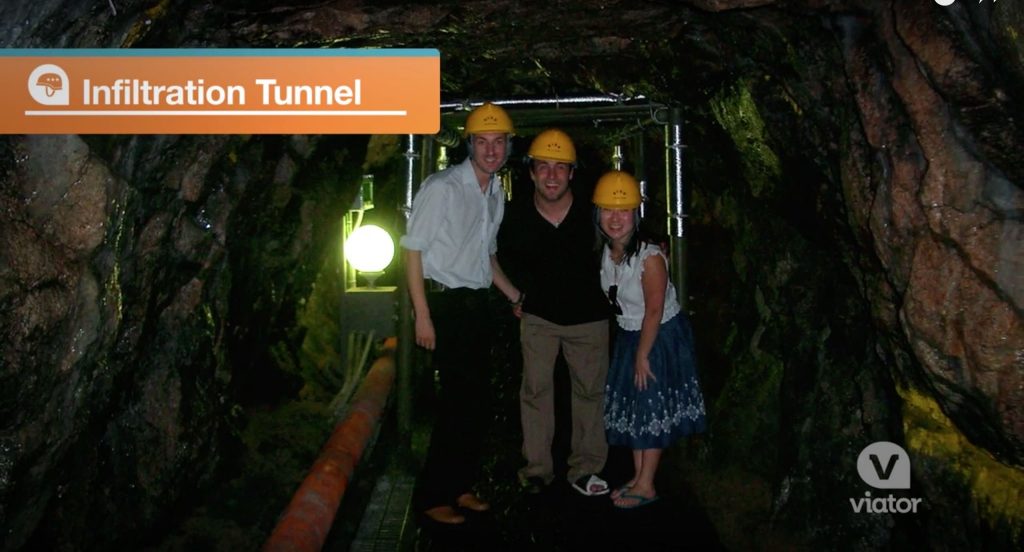
DMZ Past and Present: Korean Demilitarized Zone Tour from Seoul
Step 3. take ( lots of ) photos of north korea.
Much of the road towards the JSA border runs parallel to the Han River, which separates the two countries. It's nothing short of unique to be sitting in a bus with views of North Korea passing by out your window.
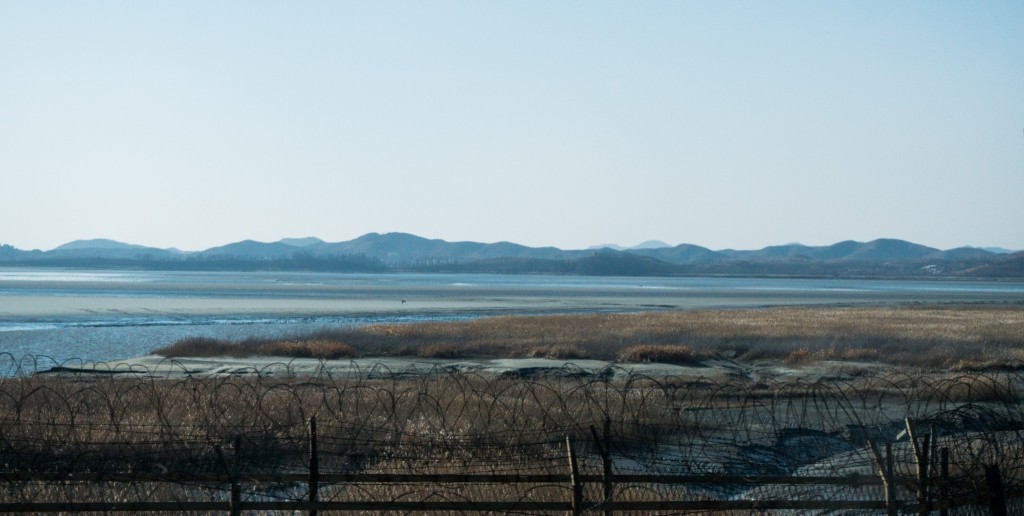
The binoculars at the Dora and Odu observatory provide ultra zoomed views of North Korea. One can even see North Korean civilians walking around on the other side, as we did during our visit at Odu . At Dora Observatory, North Korea's fake town, Kijong-dong, is viewed.
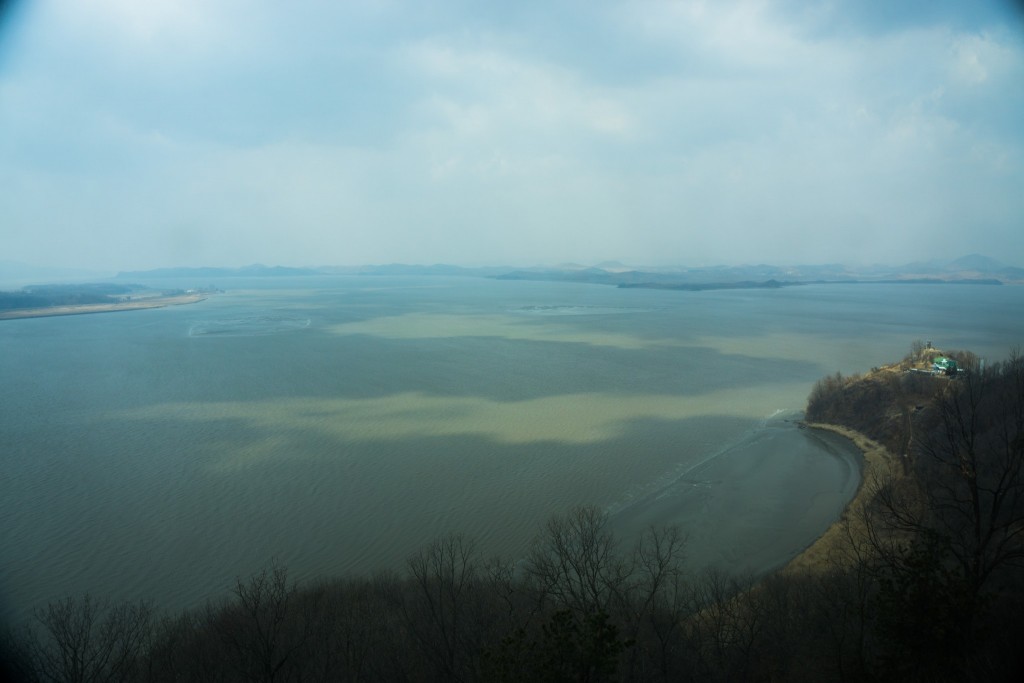
Step 4. Cross the border into North Korea
On a tension-free day at the JSA, one can legally take a step into North Korea. But how and why ?
The blue buildings pictured below are UN Command neutral zones. Midway, the inside of these blue buildings cross the North/South Korea border. Inside the building on the right (UNCMAC) is where meetings between the two countries are housed.
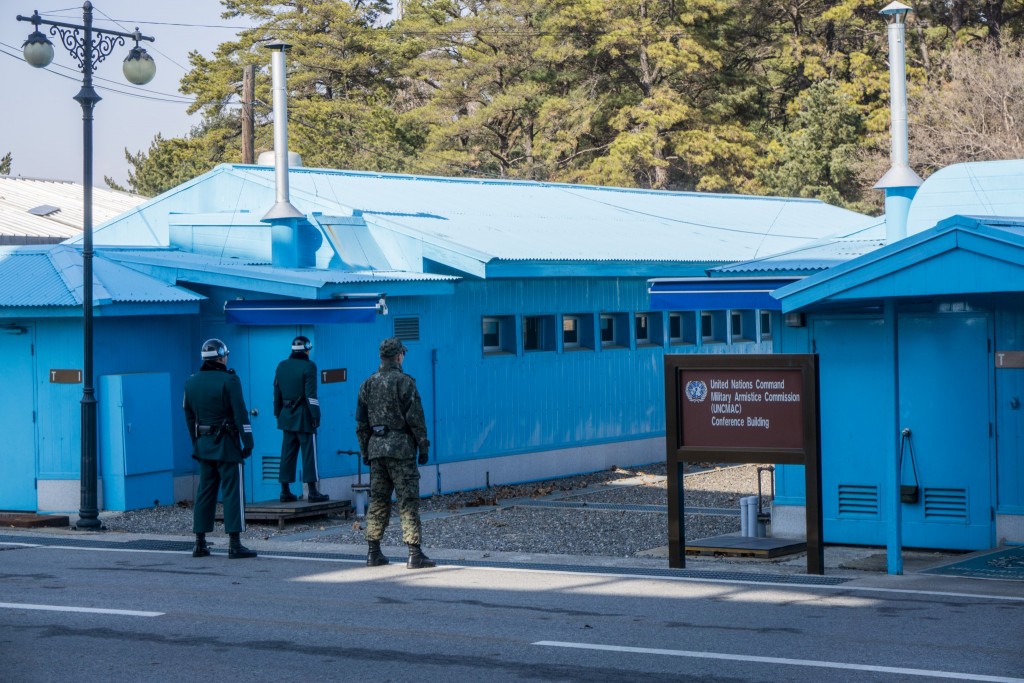
If you want photo evidence that you physically stood in North Korea, this can be done . You can pose with a South Korean soldier within North Korea at the back of the UNCMAC room. Be warned though (and you will be), if you cross through the door behind you, no one is responsible for your safety as you'll be alone and in North Korea.
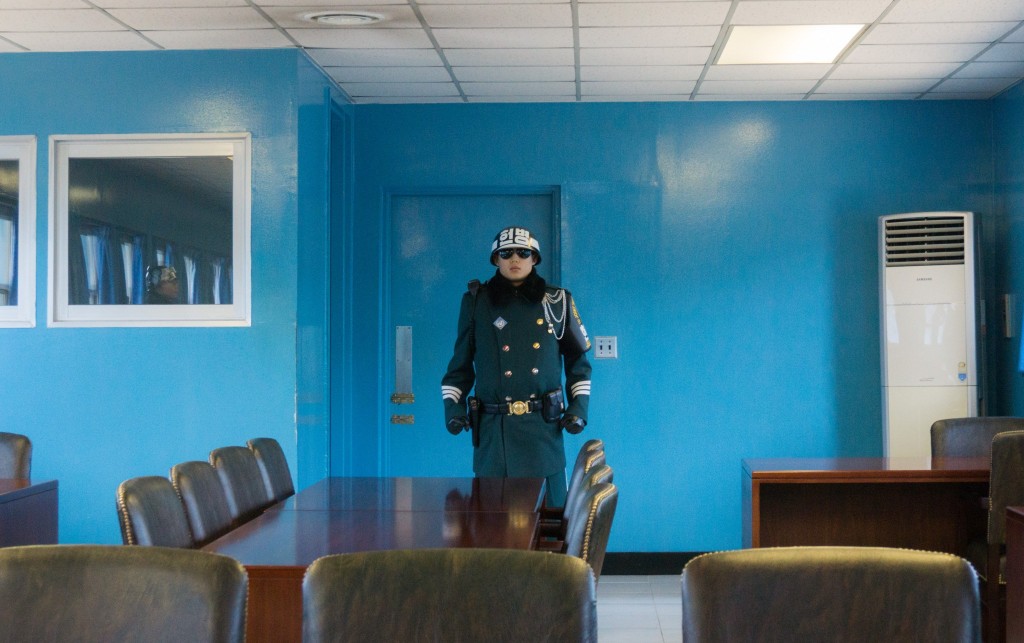
Important Points About DMZ Tours
- Many tours require reservation 2-5 days in advance , so check ahead.
- If visiting the JSA, you must sign a waiver agreeing that no one is responsible for accident, injury, or even death . Take comfort in the fact that these tours are done every day and you are accompanied by military escorts at the border!
- You must bring your passport for most tours , and it is checked by army personnel on arrival at the JSA.
- You must adhere to the specified dress code (e.g. no ripped jeans, sandals, or unkempt hair). These rules are strictly enforced as North Korean soldiers take photos and produce false propaganda that other countries are too poor to afford proper clothing.
- Tours can end unexpectedly at any time if tensions rise at the border . That means you are not be guaranteed to step into the UNCMAC at the JSA, nor is it certain you'll get a photo across the border.
In Summary…
Partaking in the DMZ tour allows yourself to gain much more depth on a humanitarian crisis that the world does not know enough about. If you have the chance to do this trip, I'd highly recommend it.
Tour Companies & Pricing
Alternatively, you can contact one of the tour companies below directly and book with them.
Panmunjeom Travel Center Website : www.panmunjomtour.com Telephone : +82-2-771-5593 (Korean, English, Japanese) Price : 80,000-77,000 won (~$60-$77 USD). All tours include lunch. Note : Tours offered in Korean, English, and Japanese. This is the only company that allows you to meet a North Korean defector/refugee, ask them questions, and better understand the human rights issues of North Korea.
VIP Travel Website: http://www.vviptravel.com/eng/ Telephone: 02-739-3501 ext. 4 Price: 55,000-135,000 won ($48 – $120 USD). Most tours include lunch. Notes: Tours offered in English, Japanese, Chinese. None of the tours include any forced shopping stops.
Koridoor Website : www.koridoor.co.kr Telephone : 02-6383-2570 ext. 2 Price : 43-89,000 won (~$41-$80 USD). Most tours include lunch. Notes : Tours offered in English.
JSA Tour Website : www.jsatour.com Telephone : +82-2-2266-3350 Price : 85,000-120,000 won (~$85-$120 USD). All tours include lunch. Notes : Tours offered in Korean, English, Japanese, and Chinese.
DMZ Spy Tour Website : www.dmzspytour.com Telephone : +82-10-3950-8350 Price: 88,000-114,000 won (~$88-$114 USD). Tours include lunch. Notes : Tours offered in Korean, English, Japanese, and Chinese.
International Culture Service Club Website : www.tourdmz.com Telephone : +82-2-755-0073 Price : 65,000-85,000 won (~$65-$85 USD). All tours include lunch. Notes : Tours offered in Korean, English and Japanese. This is the only company that does Saturday tours.
Seoul City Tour Website : www.seoulcitytour.net Telephone : +82-2-774-3345 Price: 40,000-125,000 won (~$40-$125 USD). Only some tours include lunch. Notes : Tours are offered in Korean, English, Japanese, and Chinese.
KTB Tour Website : www.go2korea.co.kr Telephone : +82-2-778-0150 Price : 65,000-130,000 won (~$65-$130 USD). All tours include lunch. Notes : Tours offered in Korean, English, Japanese, and Chinese.
DMZ & JSA Tour (Professional Guide Service / Celebrity's choice Agency) Website : www.cosmojin.com Telephone : +82-2-318-0345 (Korean, English, Japanese), +82-2-318-0425 (Chinese) Price : 46,000 won (~$46 USD) for half-day tour, 87,000 won (~$87 USD) for full day tour. Lunch included on full day tour. Notes : Tours offered in Korean, English, Japanese, Chinese.
Thrifty Nomads has partnered with CardRatings for our coverage of credit card products. Thrifty Nomads and CardRatings may receive a commission from card issuers. Opinions expressed here are author's alone. Responses are not provided or commissioned by the bank advertiser. Responses have not been reviewed, approved or otherwise endorsed by the bank advertiser. It is not the bank advertiser's responsibility to ensure all posts and/or questions are answered.
You guys are so brave! This makes me a bit nervous and I’m not sure I would be able to do it!
The link to the GetYourGuide tour you provided doesn’t work. Do you have an updated link by any chance? Thank you!
Leave a Reply Cancel reply
Your email address will not be published. Required fields are marked *
Jetpack has locked your site's login page.
Your IP address 199.167.138.122 has been flagged for potential security violations. You can unlock your login by sending yourself a special link via email. Learn More

- Destinations
- Travel Checklist
- Travel By Sea (Ferries)
What’s it like on a tour of North Korea?
What’s it like to spend Christmas on a tour of North Korea? In the below trip report I review my second visit to the Democratic People’s Republic of Korea (DPRK).
After a brief visit to the North Korean city of Sinuiju in 2017, I decided it was time to explore the country a little more (as much as is possible anyway). I noticed Young Pioneer Tours were advertising a Christmas tour of North Korea and this seemed like a perfect little getaway for the festive season!
So, strap in and find out what it’s like on a North Korea tour!
Table of Contents
See a short film of my North Korea tour below:
You might also like:

Can You Take a Tour to North Korea?
For most people, it is possible to take a tour of North Korea, however there are a few exceptions. For South Korean passport holders, it is not possible to visit without a special permit, and even then, it is probably not advisable.
Citizens of the United States have been banned from visiting North Korea by the US government (not by the North Koreans).
Visa for North Korea
It may surprise you, but getting a North Korean visa is probably one of the easiest ones to obtain. Your tour company will make the necessary arrangements and all you need to do to apply for the visa is submit a copy of your passport.
North Korea actively encourages tourism to the country so visas are almost always granted without issue.
How Much Does a North Korea Tour Cost?
That depends largely on the type of tour, where you want to go and the company you use. I have used Young Pioneer Tours on both my trips as they have some great North Korea budget tours. You can see a few examples below:
Pyongyang Ultra Budget Tour €475
- This is a three-day tour with one full day in Pyongyang (the other two days are mostly travelling). This is certainly one of, if not THE cheapest ways to see North Korea.
Liberation Day Tour with Mass Games €995
- This six-day tour encompasses Pyongyang, Kaesung (for the DMZ) and Sinuiju.
It is also possible to craft your own individual tour, at a cost.
There are other companies providing tours of North Korea and one of the biggest names is Koryo Tours.
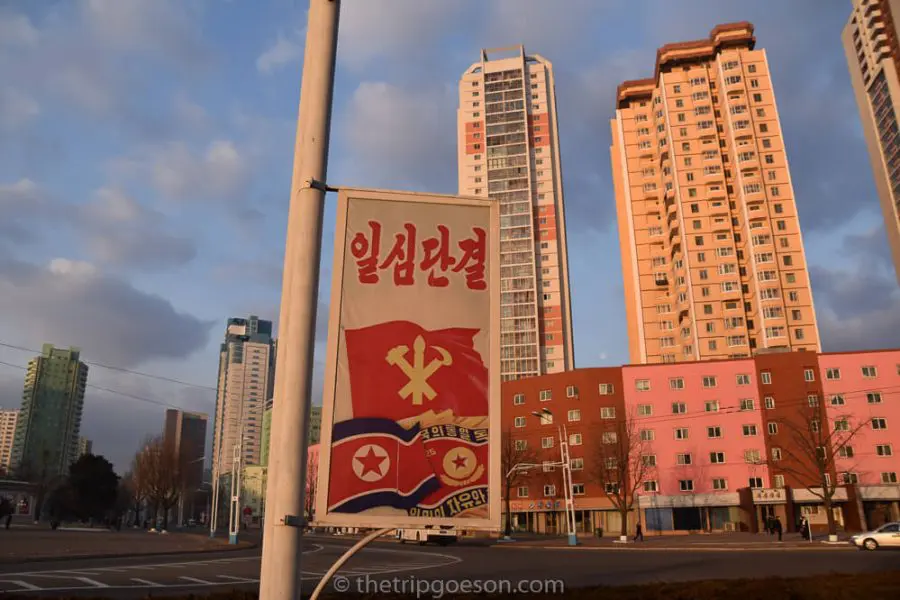
Crossing the Border from China to North Korea
Most tours of North Korea start from Dandong in Northern China. The Friendship Bridge which crosses the Yalu River between China and North Korea has both a road and rail section so it’s possible to take both bus and train (I have done both).
Air Koryo also has a few direct flights from Beijing and Vladivostok to Pyongyang so flying is also an option.
The border crossing was straightforward. After leaving Dandong Railway Station we crossed the river and shortly arrived in Sinuiju for the customs check. The train pulled in at the station and border guards boarded the train and collected our passports. We were also told to put all our electronic equipment on a tray for inspection.
Once we had our passports returned, we were allowed off the train and there was a stall selling drinks and snacks. Even though it was freezing (around -10 Celcius) a few of us decided to indulge in a celebratory beer having made it into the DPRK!
North Korean Scenery

It was interesting to see how the landscape changed from China. Fields stretched for miles with a backdrop of rising mountains to the south. Everywhere was basked in a golden glow as the bright winter sunshine melted ice and snow in the fields. We passed small villages and towns where North Koreans could be seen cycling and walking, just going about their daily lives.
It was dark by the time we reached Pyongyang. The station was similar to any you would find in China, Russia or Eastern Europe; a grand grey-stone affair with large clock in the centre.
I was excited to finally be in Pyongyang; a name that conjures images of spotless soldiers of the DPRK marching in step alongside nuclear warheads in a defiant display of military might. I wanted to try and get a real feel for the place and see behind the headlines.

We were met at the station by our North Korean guides; Ms Kim, Ms Song and Mr Lee. It was obvious that Ms Kim was in charge, and although she had a good sense of humour, it was best to do as she said as she had a strict school-teacherly way about her. Ms Song was the friendliest of the bunch, and Mr Lee was a be-suited chain-smoking guy in his early thirties.
We boarded our tour bus and were told that we would be taken to a local restaurant for dinner, before going to our hotel and checking in where we could rest or hang out in the hotel bar. On a visit to North Korea there isn’t much in the way of freedom, but that’s par for the course.
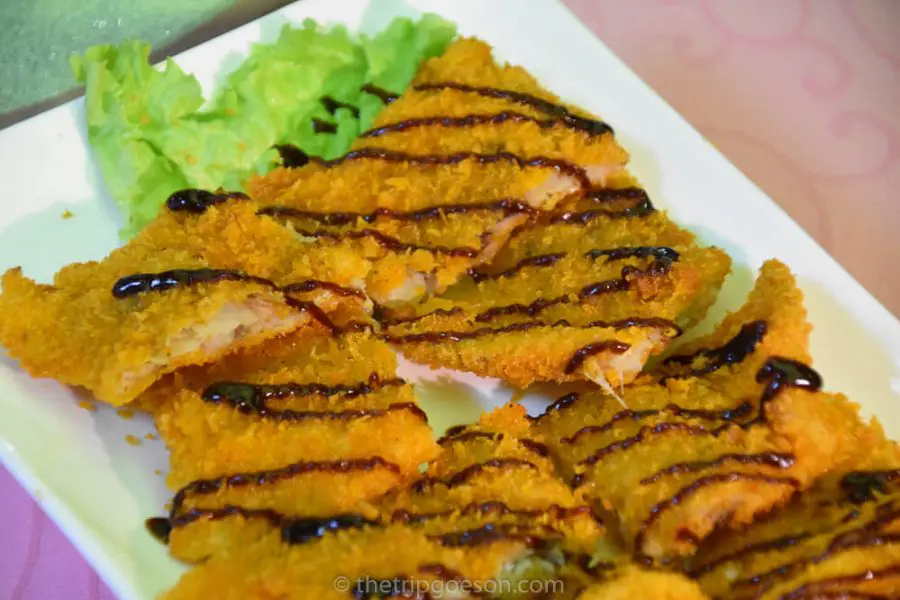
The restaurant was decked out in murals and bright flowers and had a cosy atmosphere. We had our room rather than open-plan seating with spinning tables, as is customary in Asia. Most of us ordered a Taedong beer, North Korea’s palatable lager.
The food was brought in by waitresses in traditional Korean dress and set down on the spinning tables for everyone to dig in. North Korean chopsticks are round rather than rectangular so it took a bit of time to get used to them. The food included kimchi (spicy fermented cabbage), fried pork, salad, rice cakes and soup and tasted exquisite. It was one of the nicest meals I’d eaten in a long time!
The Ryangang Hotel
After dinner we took a short stroll around the block and back to the bus. The streets were clean and basked in the glow of nearby buildings, but a little dark due to the lack of street lights. We boarded the bus and were advised by Ms Kim that anyone who made the bus late would be made to sing a song on the PA system.
We got to the Ryangang Hotel around 9pm and checked in. Much like the Hotel California, we could check out any time we wanted, but we certainly couldn’t leave unaccompanied! Although I hadn’t paid the single supplement, we had an uneven number in our group and I managed to get a room to myself!
We all went to our respective rooms to freshen up before meeting in the revolving bar on the 15 th floor. The hotel was clean and spacious but with the fading air of former glory. The rooms were comfortable enough save for the lack of hot water (it was near -20c outside so the lack of a hot shower was a little frustrating).
Everyone met in the bar where we while away a surreal Christmas Eve getting to know each other over a few Taedongs (about $1 each).
Christmas Day on Tour of North Korea
We gathered for breakfast in the downstairs restaurant at 7.30am. I helped myself to toast and fried eggs, washed down with sweet lukewarm coffee and then we made our way to the bus. Now that it was light we could see the hotel was at the top of a hill overlooking Pyongyang’s football stadium. In the distance the Taedong River meandered through the city and out into the hills.
On the bus red Santa hats were handed out to make our tour of the city a little festive. I chuckled to myself thinking of the absurdity of it. The bus dropped us off at the Pyongyang Grand theatre. A large mural on the outside of the theatre depicted a rosy-cheeked woman in peasant clothing brandishing a machine-pistol with flag-waving soldiers behind her.

We walked along Sungri Street and past Kim Il Sung Square where I took photos. The streets were busy with traffic and I was a little shocked to see modern 4X4s cruising downtown Pyongyang. A smartly-dressed policewoman stood in the middle of large intersections directing traffic (if she faces you, it’s clear to go; when she turns her head, stop – a useful system for when power outages stop the traffic lights from working).
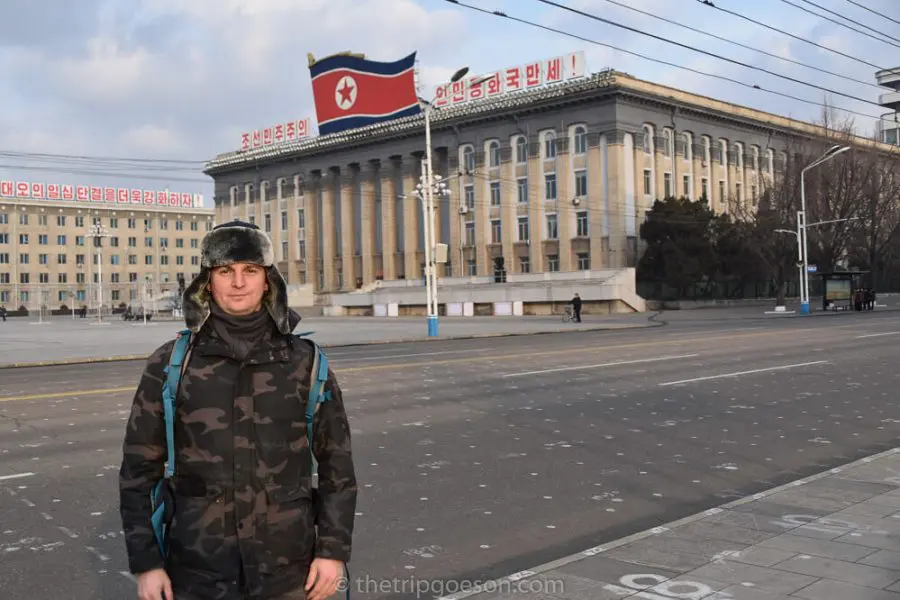
We stopped at the Foreign Language Bookstore on the corner of Sungri and Somun Street, where I bought a couple of copies of the Pyongyang Times printed in English and a few other souvenirs.
We then continued along Somun street towards the Taedong River and Teadongmun Park where kids were playing basketball on the courts there. Across the river the 560ft tall Juche Tower stretched skywards with it’s bright red flame flickering towards the heavens.
Mansudae Grand Monument
Back on the bus and on to the Mansudae statues of Kim Il Sung and Kim Jong Il. We were briefed about the protocol for visiting the statues. The country operates under a lese majeste rule which forbids attacks on the dignity of the sovereign state, where punishment for such treason is severe. Needless to say at this point in the trip those still wearing santa hats were asked to remove them forthwith.
We made our way to the statues as wedding parties strolled by after paying their respects. The grooms were decked up in military outfits and the brides in traditional Korean dresses.
At first we had to take a bow together in front of the statues and then those who had bought flowers laid them at the feet of the former leaders. The atmosphere was tense as Ms Kim was running around trying to get people with logos on their t-shirts to cover them with their jackets.
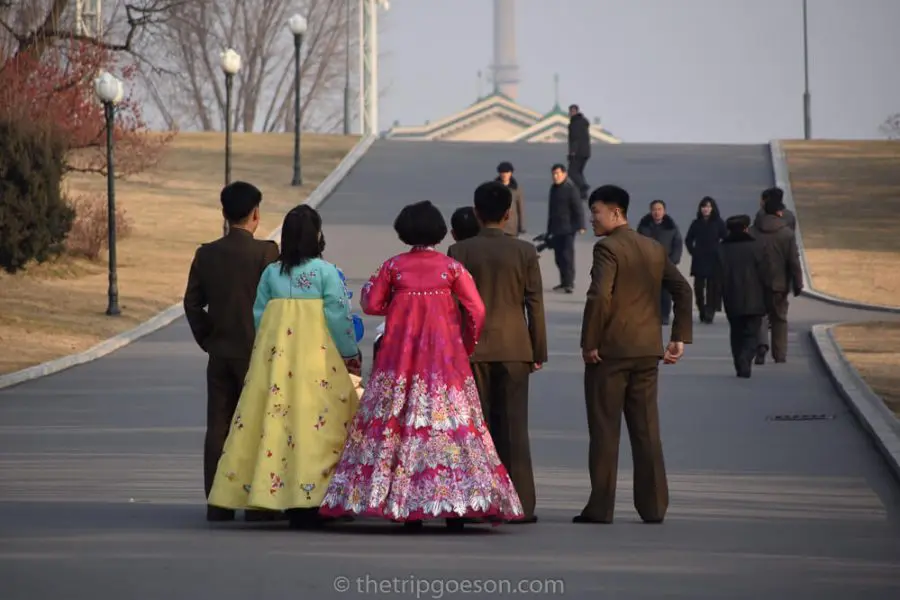
After paying our respects, we took a short drive to the Grand People’s Study House; a library and university provided for students to work and read. Inside we were led to different study rooms and saw students working away under the careful gaze of the former leaders on the wall. We were led up to the roof for a stunning Panorama of Pyongyang. We were told not to take photographs to the South due to military installations, but the view East across the river was rewarding enough. As if to add to the surreal Christmas spirit, it started to snow.

The Juche Tower
We crossed the river on Taedong Bridge and made our way to the Juche Tower. At 160m (560ft) tall, the grey, stone column and red flame of the Juche Tower can be seen all across the city. The tower was built in 1982 to commemorate Kim Il Sung’s 70 th birthday. We had the option of taking an elevator to the top for an additional 5 Euros and this was something I had been especially looking forward to.

Outside the tower, plaques that had been sent from all around the world in support of the Juche Ideology decorated the lower walls. Inside a small gift shop sold souvenirs and books.
We crammed into the claustrophobic elevator 8 at a time and the journey up seemed to take forever as we rattled slowly through the tower. I’m not a big fan of even the most modern lifts, and to say my sphincter was quivering would be something of an understatement! I was more than a little relieved when we finally made it to the top and edged out of the almost 40 year old wooden box.

I soon forgot my fear as the views from the platform were incredible; a real birds-eye view of this strange and intriguing city. Brightly coloured apartment buildings looked stunning in the early afternoon winter sunlight. It reminded me a little of Tirana in Albania, which was indeed itself a closed pariah state until relatively recently. The two countries certainly shared a love of brutalist concrete architecture juxtaposed with explosions of light and colour.
Monument to the Party Foundation
If one symbol represents North Korea more than any other it is the triumvirate of the hammer, sickle and calligraphy brush. These represent the workers, farmers and intellectuals of the Democratic People’s Republic of Korea.

After an action-packed morning most of us were feeling a little tired so were pleased to learn that the next stop would be lunch at a hot pot restaurant.
We would be having traditional Korean hot pot. Chinese hot pot has the pot and stove in the middle of the table, but the Korean version is individual bowls and heaters for each person.
We were all served plates of meat and vegetables to be cooked in the broth bubbling away in front of us, along with cold, crisp Taedong beer. Again, the food was excellent and in no time the feast had been reduced to empty plates and dirty napkins.
The Pyongyang Metro
The first stop after lunch was something else I was very much looking forward to; namely a ride on the Pyongyang metro. Public transport in North Korea is usually off limits to tourists so I was very happy to be able to get a glimpse of subterranean Pyongyang.
The metro system, which was built by the Russians and includes rolling stock from East Germany, has 2 lines and 17 stations. At 110 metres it is the deepest metro in the world and the escalator seemed to descend forever. The stations are similar to those in Moscow; grand affairs with crystal chandeliers and Romanesque columns.

The station was busy with workers and schoolchildren, some glued to mobile phones which felt a million miles from the North Korea I had read about and felt more like the Northern Line on the London Underground.
We travelled 5 stops and tried to chat with some of the kids who were more than a little surprised to be sharing their commute with a bunch of foreigners. Our guide talked to them in Korean and a couple of the students could muster a few words of English, but overall were very shy.
The Pyongyang metro is definitely one of the highlights of any tour of North Korea!
We exited at the Arch de Triumph station to be met with an oversized replica of its Paris namesake (it was built 10 metres taller, in an “anything you can do, we can do better” sort of a way).
Captured US Spy Ship the USS Pueblo
Our final destination on our North Korea tour of Pyongyang was the war museum and captured American spy ship the USS Pueblo.
We were met by a striking North Korean army Captain in her early to mid-twenties, complete with army uniform and high heeled shoes. She would be our English-speaking guide for the rest of the afternoon, and I always found myself sniggering whenever she uttered the words: “American Imperialists”, which was frequently.
On 23 rd January 1968 the North Korean navy intercepted what was purportedly an environmental research vessel, but in actuality was an armed spy vessel containing 84 soldiers. 1 American was killed in the capture and the other 83 were taken hostage by the DPRK. After 11 months of torture and mock executions, the prisoners were finally released after long talks and an official apology from the USA.

The Pueblo is docked off a small tributary to the Taedong River and is open to visitors as part of the wider museum. It is the only American warship still held captive anywhere in the world.
The Victorious War Museum
After an interesting look around the vessel, we then went up to the main museum which looked more like the Ritz Carlton than a museum. A grand, ornate staircase led up to a huge waxwork of Kim Il Sung.
We were taken to a small room to watch a propaganda film and I found myself nodding off. It had been a very long day and I struggled to keep my eyes open. It was bliss to be sitting down.
After that, we went up to the top floor of the building which housed a huge 360-degree diorama with a rotating floor that showed the battle of Taejon with the Japanese. It was an impressive sight, but the propaganda was beginning to get a little overwhelming.
Shopping and Dinner in Pyongyang
We were due to visit a brewery and bar in the city but it was getting late and the group was pretty tired, so it was decided we would go for dinner and then back to the hotel, but first we would make a stop at a department store to do a bit of shopping.
Up until now we had paid for everything at the hotel and tourist sites in Chinese yuan, but the department store and supermarket only accepted Korean currency. There was an exchange where we could swap our Chinese yuan for North Korean won (another little excitement).
The department store was what one might expect in the former Soviet Union or Eastern Europe in terms of minimalist utilitarian design. The shelves were relatively well stocked with food and clothes and perfume, and it was obvious that only the more well off sections of North Korean society could shop in such a place, but it did feel normal as people went about their weekly shop (a lot of people seem to think that everything one sees in North Korea is all staged, but I didn’t get this feeling at any point on the trip).
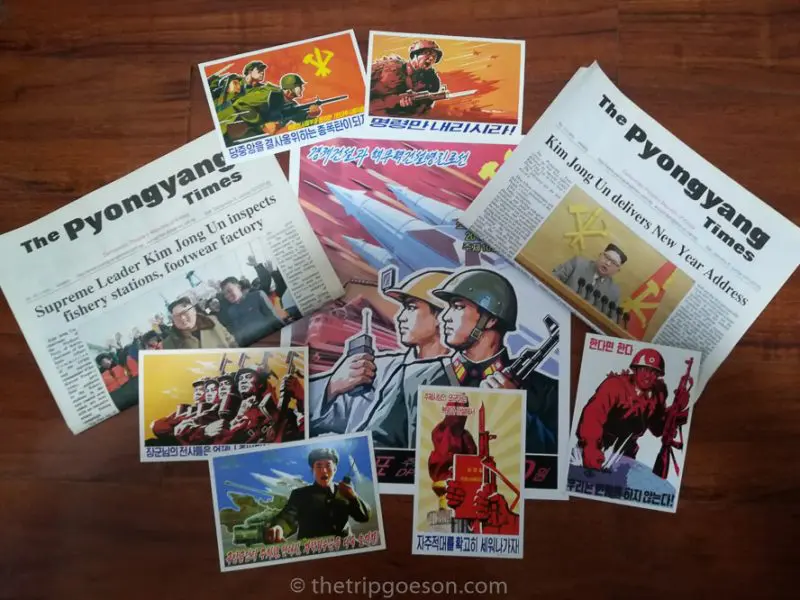
I bought a few bottles of Soju and Ginseng wine (Korean spirits) and some sweet snacks to take home and then headed to the cafeteria on the top floor where they served beer on tap. We were given free reign and had an hour to shop or relax before being picked up for dinner.
We were taken to another restaurant for dinner and entertainment provided by music and singing. It strikes me that the North Koreans are an incredibly musical bunch, and as on my first trip to the country, it was obvious that many people here have a real talent for music.
After dinner we went back to the hotel where a few of us went to the bar and toasted our Christmas in North Korea until the small hours.
And that, my dear friends, is how I ended one of the most surreal, but also rewarding Christmases I’ve ever experienced on a visit to North Korea.

The following day we would be going south to the city of Kaesong and the Demilitarized zone (DMZ) . The tense border with South Korea was another highlight that I was immensely looking forward to.
How to Visit North Korea
If you’d like to visit North Korea, Young Pioneer Tours can arrange both group tours like mine and bespoke personal tours. Check out their website for more information. Quote TRIPYPT20 and get a free exclusive t-shirt when booking!
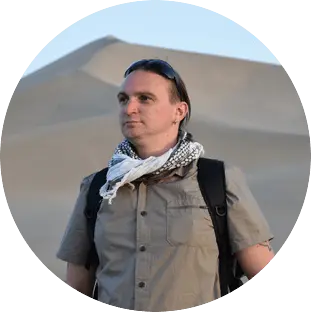
About the author: Steve Rohan is a writer from Essex, England. He has traveled to over 60 countries, lived in Armenia, China and Hong Kong, and is now living the digital nomad life on the road.
Steve prefers “slow travel” and has covered much of the world by train, bus and boat. He has been interviewed multiple times by the BBC and recently featured in the documentary Scariest Places in the World . See the About page for more info.
Where I am now: Yerevan, Armenia 🇦🇲
Leave a Reply Cancel reply
Your email address will not be published. Required fields are marked *
- Share full article
For more audio journalism and storytelling, download New York Times Audio , a new iOS app available for news subscribers.
The Supreme Court Takes Up Homelessness
Can cities make it illegal to live on the streets.
This transcript was created using speech recognition software. While it has been reviewed by human transcribers, it may contain errors. Please review the episode audio before quoting from this transcript and email [email protected] with any questions.
From “The New York Times,” I’m Katrin Bennhold. This is “The Daily.”
This morning, we’re taking a much closer look at homelessness in the United States as it reaches a level not seen in the modern era. California —
As the number of homeless people has surged in the US —
More than 653,000, a 12 percent population increase since last year.
The debate over homeless encampments across the country has intensified.
It is not humane to let people live on our streets in tents, use drugs. We are not standing for it anymore.
People have had it. They’re fed up. I’m fed up. People want to see these tents and encampments removed in a compassionate, thoughtful way. And we agree.
With public officials saying they need more tools to address the crisis.
We move from block to block. And every block they say, can’t be here, can’t be here, can’t be here. I don’t know where we’re supposed to go, you know?
And homeless people and their advocates saying those tools are intended to unfairly punish them.
They come and they sweep and they take everything from me, and I can’t get out of the hole I’m in because they keep putting me back in square one.
That debate is now reaching the Supreme Court, which is about to hear arguments in the most significant case on homelessness in decades, about whether cities can make it illegal to be homeless. My colleague Abbie VanSickle on the backstory of that case and its far-reaching implications for cities across the US.
[THEME MUSIC]
It’s Friday, April 19.
So Abbie, you’ve been reporting on this case that has been making waves, Grants Pass versus Johnson, which the Supreme Court is taking up next week. What’s this case about?
So this case is about a small town in Oregon where three homeless people sued the city after they received tickets for sleeping and camping outside. And this case is the latest case that shows this growing tension, especially in states in the West, between people who are homeless and cities who are trying to figure out what to do about this. These cities have seen a sharp increase in homeless encampments in public spaces, especially with people on sidewalks and in parks. And they’ve raised questions about public drug use and other safety issues in these spaces.
And so the question before the justices is really how far a city can go to police homelessness. Can city officials and police use local laws to ban people from laying down outside and sleeping in a public space? Can a city essentially make it illegal to be homeless?
So three homeless people sued the city of Grants Pass, saying it’s not illegal to be homeless, and therefore it’s not illegal to sleep in a public space.
Yes, that’s right. And they weren’t the first people to make this argument. The issue actually started years ago with a case about 500 miles to the East, in Boise, Idaho. And in that case, which is called Martin v. Boise, this man, Robert Martin, who is homeless in Boise, he was charged with a misdemeanor for sleeping in some bushes. And the city of Boise had laws on the books to prohibit public camping.
And Robert Martin and a group of other people who are homeless in the city, they sued the city. And they claimed that the city’s laws violated the Eighth Amendment’s prohibition on cruel and unusual punishment.
And what makes it cruel and unusual?
So their argument was that the city did not have enough sufficient shelter beds for everyone who was homeless in the city. And so they were forced to sleep outside. They said, we have no place to go and that an essential human need is to sleep and we want to be able to lay down on the sidewalk or in an alley or someplace to rest and that their local laws were a violation of Robert Martin and the others’ constitutional rights, that the city is violating the Eighth Amendment by criminalizing the human need to sleep.
And the courts who heard the case agreed with that argument. The courts ruled that the city had violated the Constitution and that the city could not punish people for being involuntarily homeless. And what that meant, the court laid out, is that someone is involuntarily homeless if a city does not have enough adequate shelter beds for the number of people who are homeless in the city.
It does seem like a very important distinction. They’re saying, basically, if you have nowhere else to go, you can’t be punished for sleeping on the street.
Right. That’s what the court was saying in the Martin v. Boise case. And the city of Boise then appealed the case. They asked the Supreme Court to step in and take it on. But the Supreme Court declined to hear the case. So since then, the Martin v. Boise case controls all over the Western parts of the US in what’s called the Ninth Circuit, which includes Oregon where the Grants Pass case originated.
OK. So tell us about Grants Pass, this city at the center of the case and now in front of the Supreme Court. What’s the story there?
Grants Pass is a town in rural Southwestern Oregon. It’s a town of about 38,000 people. It’s a former timber town that now really relies a lot on tourists to go rafting through the river and go wine tasting in the countryside. And it’s a pretty conservative town.
When I did interviews, people talked about having a very strong libertarian streak. And when I talked with people in the town, people said when they were growing up there, it was very rare to see someone who was homeless. It just was not an issue that was talked a lot about in the community. But it did become a big issue about 10 years ago.
People in the community started to get worried about what they saw as an increase in the number of homeless people that they were noticing around town. And it’s unclear whether the problem was growing or whether local officials and residents were worried that it might, whether they were fearing that it might.
But in any case, in 2013, the city council decided to start stepping up enforcement of local ordinances that did things like outlaw camping in public parks or sleeping outside, this series of overlapping local laws that would make it impossible for people to sleep in public spaces in Grants Pass. And at one meeting, one of the former city council members, she said, “the point is to make it uncomfortable enough for them in our city so they will want to move on down the road.”
So it sounds like, at least in Grants Pass, that this is not really about reducing homelessness. It’s about reducing the number of visible homeless people in the town.
Well, I would say that city officials and many local residents would say that the homeless encampments are actually creating real concerns about public safety, that it’s actually creating all kinds of issues for everyone else who lives in Grants Pass. And there are drug issues and mental health issues, and that this is actually bringing a lot of chaos to the city.
OK. So in order to deal with these concerns, you said that they decided to start enforcing these local measures. What does that actually look like on the ground?
So police started handing out tickets in Grants Pass. These were civil tickets, where people would get fines. And if police noticed people doing this enough times, then they could issue them a trespass from a park. And then that would give — for a certain number of days, somebody would be banned from the park. And if police caught them in the park before that time period was up, then the person could face criminal time. They could go to jail.
And homeless people started racking up fines, hundreds of dollars of fines. I talked to a lot of people who were camping in the parks who had racked up these fines over the years. And each one would have multiple tickets they had no way to pay. I talked to people who tried to challenge the tickets, and they had to leave their belongings back in the park. And they would come back to find someone had taken their stuff or their things had been impounded.
So it just seemed to be this cycle that actually was entrenching people more into homelessness. And yet at the same time, none of these people had left Grants Pass.
So they did make it very uncomfortable for homeless people, but it doesn’t seem to be working. People are not leaving.
Right. People are not leaving. And these tickets and fines, it’s something that people have been dealing with for years in Grants Pass. But in 2018, the Martin v. Boise case happens. And not long after that, a group of people in Grants Pass challenged these ordinances, and they used the Boise case to make their argument that just like in Boise, Grants Pass was punishing people for being involuntarily homeless, that this overlapping group of local ordinances in Grants Pass had made it so there is nowhere to put a pillow and blanket on the ground and sleep without being in some kind of violation of a rule. And this group of local homeless people make the argument that everyone in Grants Pass who is homeless is involuntarily homeless.
And you told us earlier that it was basically the lack of available shelter that makes a homeless person involuntarily homeless. So is there a homeless shelter in Grants Pass?
Well, it sort of depends on the standard that you’re using. So there is no public low-barrier shelter that is easy for somebody to just walk in and stay for a night if they need someplace to go. Grants Pass does not have a shelter like that.
There is one shelter in Grants Pass, but it’s a religious shelter, and there are lots of restrictions. I spoke with the head of the shelter who explained the purpose is really to get people back into the workforce. And so they have a 30-day program that’s really designed for that purpose.
And as part of that, people can’t have pets. People are not allowed to smoke. They’re required to attend Christian religious services. And some of the people who I interviewed, who had chronic mental health and physical disabilities, said that they had been turned away or weren’t able to stay there because of the level of needs that they have. And so if you come in with any kind of issue like that, it can be a problem.
That’s a very long list of restrictions. And of course, people are homeless for a lot of very different reasons. It sounds like a lot of these reasons might actually disqualify them from this particular shelter. So when they say they have nowhere else to go, if they’re in Grants Pass, they kind of have a point.
So that’s what the court decided. In 2022, when the courts heard this case, they agreed with the homeless plaintiffs that there’s no low-barrier shelter in Grants Pass and that the religious shelter did not meet the court’s requirements. But the city, who are actually now represented by the same lawyers who argued for Boise, keeps appealing the case. And they appeal up to the Ninth Circuit just as in the Boise case, and the judges there find in favor of the homeless plaintiffs, and they find that Grants Pass’s ordinances are so restrictive that there is no place where someone can lay down and sleep in Grants Pass and that therefore the city has violated the Eighth Amendment and they cannot enforce these ordinances in the way that they have been for years.
So at that point, the court upholds the Boise precedent, and we’re where we were when it all started. But as we know, that’s not the end of the story. Because this case stays in the court system. What happened?
So by this point, the homelessness problem is really exploding throughout the Western part of the US with more visible encampments, and it really becomes a politically divisive issue. And leaders across the political spectrum point to Boise as a root cause of the problem. So when Grants Pass comes along, people saw that case as a way potentially to undo Boise if only they could get it before the Supreme Court.
[MUSIC PLAYING]
We’ll be right back.
Abbie, you just told us that as homeless numbers went up and these homeless encampments really started spreading, it’s no longer just conservatives who want the Supreme Court to revisit the Boise ruling. It’s liberals too.
That’s right. So there’s a really broad group of people who all started pushing for the Supreme Court to take up the Grants Pass case. And they did this by filing briefs to the Supreme Court, laying out their reasoning. And it’s everyone from the liberal governor of California and many progressive liberal cities to some of the most conservative legal groups. And they disagree about their reasoning, but they all are asking the court to clarify how to interpret the Boise decision.
They are saying, essentially, that the Boise decision has been understood in different ways in all different parts of the West and that that is causing confusion and creating all sorts of problems. And they’re blaming that on the Boise case.
It’s interesting, because after everything you told us about these very extreme measures, really, that the city of Grants Pass took against homeless people, it is surprising that these liberal bastions that you’re mentioning are siding with the town in this case.
Just to be clear, they are not saying that they support necessarily the way that Grants Pass or Boise had enforced their laws. But they are saying that the court rulings have tied their hands with this ambiguous decision on how to act.
And what exactly is so ambiguous about the Boise decision? Which if I remember correctly, simply said that if someone is involuntarily homeless, if they’re on the streets because there’s no adequate shelter space available, they can’t be punished for that.
Yeah. So there are a couple of things that are common threads in the cities and the groups that are asking for clarity from the court. And the first thing is that they’re saying, what is adequate shelter? That every homeless person situation is different, so what are cities or places required to provide for people who are homeless? What is the standard that they need to meet?
In order not to sleep on the street.
That’s right. So if the standard is that a city has to have enough beds for everyone who is homeless but certain kinds of shelters or beds wouldn’t qualify, then what are the rules around that? And the second thing is that they’re asking for clarity around what “involuntarily homeless” means. And so in the Boise decision, that meant that someone is involuntarily homeless if there is not enough bed space for them to go to.
But a lot of cities are saying, what about people who don’t want to go into a shelter even if there’s a shelter bed available? If they have a pet or if they are a smoker or if something might prohibit them from going to a shelter, how is the city supposed to weigh that and at what point would they cross a line for the court?
It’s almost a philosophical question. Like, if somebody doesn’t want to be in a shelter, are they still allowed to sleep in a public space?
Yeah. I mean, these are complicated questions that go beyond the Eighth Amendment argument but that a lot of the organizations that have reached out to the court through these friend of the court briefs are asking.
OK. I can see that the unifying element here is that in all these briefs various people from across the spectrum are saying, hello, Supreme Court. We basically need some clarity here. Give us some clarity.
The question that I have is why did the Supreme Court agree to weigh in on Grants Pass after declining to take up Boise?
Well, it’s not possible for us to say for certain because the Supreme Court does not give reasons why it has agreed to hear or to not hear a case. They get thousands of cases a year, and they take up just a few of those, and their deliberations are secret. But we can point to a few things.
One is that the makeup of the court has changed. The court has gained conservative justices in the last few years. This court has not been shy about taking up hot button issues across the spectrum of American society. In this case, the court hasn’t heard a major homelessness case like this.
But I would really point to the sheer number and the range of the people who are petitioning the court to take a look at this case. These are major players in the country who are asking the court for guidance, and the Supreme Court does weigh in on issues of national importance. And the people who are asking for help clearly believe that this is one of those issues.
So let’s start digging into the actual arguments. And maybe let’s start with the city of Grants Pass. What are the central arguments that they’re expected to make before the Supreme Court?
So the city’s arguments turn on this narrow legal issue of whether the Eighth Amendment applies or doesn’t. And they say that it doesn’t. But I actually think that in some ways, that’s not the most helpful way to understanding what Grants Pass is arguing.
What is really at the heart of their argument is that if the court upholds Grants Pass and Boise, that they are tying the hands of Grants Pass and hundreds of other towns and cities to actually act to solve and respond to homelessness. And by that, I mean to solve issues of people camping in the parks but also more broadly of public safety issues, of being able to address problems as they arise in a fluid and flexible way in the varied ways that they’re going to show up in all these different places.
And their argument is if the court accepts the Grants Pass and Boise holdings, that they will be constitutionalizing or freezing in place and limiting all of these governments from acting.
Right. This is essentially the argument being repeated again and again in those briefs that you mentioned earlier, that unless the Supreme Court overturns these decisions, it’s almost impossible for these cities to get the encampments under control.
Yes, that’s right. And they also argue they need to have flexibility in dealing actually with people who are homeless and being able to figure out using a local ordinance to try to convince someone to go to treatment, that they say they need carrots and sticks. They need to be able to use every tool that they can to be able to try to solve this problem.
And how do we make sense of that argument when Grants Pass is clearly not using that many tools to deal with homeless people? For example, it didn’t have shelters, as you mentioned.
So the city’s argument is that this just should not be an Eighth Amendment issue, that this is the wrong way to think about this case, that issues around homelessness and how a city handles it is a policy question. So things like shelter beds or the way that the city is handling their ordinances should really be left up to policymakers and city officials, not to this really broad constitutional argument. And so therefore, the city is likely to focus their argument entirely on this very narrow question.
And how does the other side counter this argument?
The homeless plaintiffs are going to argue that there’s nothing in the lower courts’ decisions that say that cities can’t enforce their laws that, they can’t stop people from littering, that they can’t stop drug use, that they can’t clear encampments if there becomes public safety problems. They’re just saying that a city cannot not provide shelter and then make it illegal for people to lay down and sleep.
So both sides are saying that a city should be able to take action when there’s public disorder as a result of these homeless encampments. But they’re pointing at each other and saying, the way you want to handle homelessness is wrong.
I think everyone in this case agrees that homelessness and the increase in homelessness is bad for everyone. It’s bad for people who are camping in the park. It is bad for the community, that nobody is saying that the current situation is tenable. Everyone is saying there need to be solutions. We need to be able to figure out what to do about homelessness and how to care for people who are homeless.
How do we wrestle with all these problems? It’s just that the way that they think about it couldn’t be further apart.
And what can you tell me about how the Supreme Court is actually expected to rule in this?
There are a number of ways that the justices could decide on this case. They could take a really narrow approach and just focus on Grants Pass and the arguments about those local ordinances. I think that’s somewhat unlikely because they’ve decided to take up this case of national importance.
A ruling in favor of the homeless plaintiffs would mean that they’ve accepted this Eighth Amendment argument, that you cannot criminalize being homeless. And a ruling for the city, every legal expert I’ve talked to has said that would mean an end to Boise and that it would break apart the current state that we’ve been living in for these last several years.
I’m struck by how much this case and our conversation has been about policing homelessness rather than actually addressing the root causes of homelessness. We’re not really talking about, say, the right to shelter or the right to treatment for people who are mentally ill and sleeping on the streets as a result, which is quite a big proportion. And at the end of the day, whatever way the ruling goes, it will be about the visibility of homelessness and not the root causes.
Yeah, I think that’s right. That’s really what’s looming in the background of this case is what impact is it going to have. Will it make things better or worse and for who? And these court cases have really become this talking point for cities and for their leaders, blaming the spike in encampments and the visibility of homelessness on these court decisions. But homelessness, everyone acknowledges, is such a complicated issue.
People have told me in interviews for the story, they’ve blamed increases in homelessness on everything from the pandemic to forest fires to skyrocketing housing costs in the West Coast, and that the role that Boise and now Grants Pass play in this has always been a little hard to pin down. And if the Supreme Court overturns those cases, then we’ll really see whether they were the obstacle that political leaders said that they were. And if these cases fall, it remains to be seen whether cities do try to find all these creative solutions with housing and services to try to help people who are homeless or whether they once again fall back on just sending people to jail.
Abbie, thank you very much.
Thank you so much.
Here’s what else you need to know today. Early on Friday, Israel attacked a military base in Central Iran. The explosion came less than a week after Iran’s attack on Israel last weekend and was part of a cycle of retaliation that has brought the shadow war between the two countries out in the open. The scale and method of Friday’s attack remained unclear, and the initial reaction in both Israel and Iran was to downplay its significance. World leaders have urged both sides to exercise restraint in order to avoid sparking a broader war in the region.
And 12 New Yorkers have been selected to decide Donald Trump’s criminal trial in Manhattan, clearing the way for opening statements to begin as early as Monday. Seven new jurors were added in short order on Thursday afternoon, hours after two others who had already been picked were abruptly excused.
Trump is accused of falsifying business records to cover up a hush money payment made to a porn star during his 2016 presidential campaign. If the jury convicts him, he faces up to four years in prison. Finally —
This is the New York Police Department.
The New York Police Department said it took at least 108 protesters into custody at Columbia University after University officials called the police to respond to a pro-Palestinian demonstration and dismantle a tent encampment.
We’re supporting Palestine. We’re supporting Palestine. 1, 2, 3, 4.
The crackdown prompted more students to vow that demonstrations would continue, expressing outrage at both the roundup of the student protesters and the plight of Palestinians in Gaza.
Free, free Palestine.
Today’s episode was produced by Olivia Natt, Stella Tan, and Eric Krupke with help from Rachelle Bonja. It was edited by Liz Baylen, fact checked by Susan Lee, contains original music by Will Reid Pat McCusker Dan Powell and Diane Wong and was engineered by Chris Wood. Our theme music is by Jim Brunberg and Ben Landsverk of Wonderly.
That’s it for “The Daily.” I’m Katrin Bennhold. See you on Monday.

- April 22, 2024 • 24:30 The Evolving Danger of the New Bird Flu
- April 19, 2024 • 30:42 The Supreme Court Takes Up Homelessness
- April 18, 2024 • 30:07 The Opening Days of Trump’s First Criminal Trial
- April 17, 2024 • 24:52 Are ‘Forever Chemicals’ a Forever Problem?
- April 16, 2024 • 29:29 A.I.’s Original Sin
- April 15, 2024 • 24:07 Iran’s Unprecedented Attack on Israel
- April 14, 2024 • 46:17 The Sunday Read: ‘What I Saw Working at The National Enquirer During Donald Trump’s Rise’
- April 12, 2024 • 34:23 How One Family Lost $900,000 in a Timeshare Scam
- April 11, 2024 • 28:39 The Staggering Success of Trump’s Trial Delay Tactics
- April 10, 2024 • 22:49 Trump’s Abortion Dilemma
- April 9, 2024 • 30:48 How Tesla Planted the Seeds for Its Own Potential Downfall
- April 8, 2024 • 30:28 The Eclipse Chaser
Hosted by Katrin Bennhold
Featuring Abbie VanSickle
Produced by Olivia Natt , Stella Tan , Eric Krupke and Rachelle Bonja
Edited by Liz O. Baylen
Original music by Will Reid , Pat McCusker , Dan Powell and Diane Wong
Engineered by Chris Wood
Listen and follow The Daily Apple Podcasts | Spotify | Amazon Music
Debates over homeless encampments in the United States have intensified as their number has surged. To tackle the problem, some cities have enforced bans on public camping.
As the Supreme Court prepares to hear arguments about whether such actions are legal, Abbie VanSickle, who covers the court for The Times, discusses the case and its far-reaching implications.
On today’s episode

Abbie VanSickle , a Supreme Court correspondent for The New York Times.

Background reading
A ruling in the case could help determine how states, particularly those in the West, grapple with a rising homelessness crisis .
In a rare alliance, Democrats and Republicans are seeking legal power to clear homeless camps .
There are a lot of ways to listen to The Daily. Here’s how.
We aim to make transcripts available the next workday after an episode’s publication. You can find them at the top of the page.
Fact-checking by Susan Lee .
The Daily is made by Rachel Quester, Lynsea Garrison, Clare Toeniskoetter, Paige Cowett, Michael Simon Johnson, Brad Fisher, Chris Wood, Jessica Cheung, Stella Tan, Alexandra Leigh Young, Lisa Chow, Eric Krupke, Marc Georges, Luke Vander Ploeg, M.J. Davis Lin, Dan Powell, Sydney Harper, Mike Benoist, Liz O. Baylen, Asthaa Chaturvedi, Rachelle Bonja, Diana Nguyen, Marion Lozano, Corey Schreppel, Rob Szypko, Elisheba Ittoop, Mooj Zadie, Patricia Willens, Rowan Niemisto, Jody Becker, Rikki Novetsky, John Ketchum, Nina Feldman, Will Reid, Carlos Prieto, Ben Calhoun, Susan Lee, Lexie Diao, Mary Wilson, Alex Stern, Dan Farrell, Sophia Lanman, Shannon Lin, Diane Wong, Devon Taylor, Alyssa Moxley, Summer Thomad, Olivia Natt, Daniel Ramirez and Brendan Klinkenberg.
Our theme music is by Jim Brunberg and Ben Landsverk of Wonderly. Special thanks to Sam Dolnick, Paula Szuchman, Lisa Tobin, Larissa Anderson, Julia Simon, Sofia Milan, Mahima Chablani, Elizabeth Davis-Moorer, Jeffrey Miranda, Renan Borelli, Maddy Masiello, Isabella Anderson and Nina Lassam.
Katrin Bennhold is the Berlin bureau chief. A former Nieman fellow at Harvard University, she previously reported from London and Paris, covering a range of topics from the rise of populism to gender. More about Katrin Bennhold
Abbie VanSickle covers the United States Supreme Court for The Times. She is a lawyer and has an extensive background in investigative reporting. More about Abbie VanSickle
Advertisement

IMAGES
VIDEO
COMMENTS
Liberation Day & Summer Tour With Mass Games - August 2024. Visit Pyongyang and stay longer as you explore North Korea's best beaches and hiking treks. Start Date : August 12th 2024. End Date : August 20th / 23rd 2024. Duration: 7 days / 10 days. Flight option: €195 flight one way or €295 return.
Beat the summer rush in the DPRK and join this North Korea budget tour! The best. way to see highlights incl. city tour of Pyongyang, historic Kaesong, the DMZ, and Nampo on the West Coast. From 845 EUR per person. Please apply by 29th May, 2024. Book now Tour Details Itinerary Outline.
The North Korea Experience. "Seeing is believing" they say in North Korea. We invite you to gain a different perspective of the country by experiencing its people, touching its landscapes and learning about its rich culture and 4,000 years of history. Our tours show you the complexity and hidden beauty of this undiscovered country.
After borders tightly shut for the past 4 years, North Korea's borders look finally set to open once again. 30 Years of experience running tours to North Korea. Discover our North Korea tours, budget North Korea tours, Central Asia tours, and worldwide tours to unusual travel destinations.
The DPRK Highlights - Autumn - 4 Nights. November 5 - 9, 2024. 4 Nights - From €1099. In this 4-night tour of North Korea, discover the highlights with a tour of the major political sites in Pyongyang, a visit to the DMZ and even make an off-the-beaten-track visit to the city of Nampo.
As North Korea private tour specialists with over 15 years of experience, we arrange exclusive private tours for individuals, friends, families, and colleagues who seek a unique and personalised travel experience in North Korea. Choose from our curated Signature Series itineraries or design your own tailor-made tour with us.
How much does a North Korea tour cost? If you go with any tour company other than Young Pioneer Tours , chances are you will be with a much older crowd. The general profile of the North Korean tourist is retired males in their 50s and 60s traveling the world and wanting to relive and recreate their younger days of being a western tourist behind ...
5 Nights - from €1360. This 5-night classic tour of North Korea is designed to cover all the classic sites in one extensive action-packed itinerary. You'll visit the political highlights in Pyongyang such as the Tower of Juche Idea, Victorious Fatherland Liberation War Museum and the Kumsusan Palace of the Sun where the Great Leaders lie ...
Our North Korea independent tours are suitable for solo travellers, families, couples, friends, or for people who simply can't find group tour dates to match. Our tours are very flexible in terms of itinerary, interests and we can cater to your budget too! ... • Cost of visas. • Tips for Korean guides and the driver. • Additional events ...
Welcome to All Koreas: Part 2. This entire tour includes the rural northeast of North Korea which is way off the usual tourist trail. This tour combines the must see sights of Pyongyang and the DMZ with a connecting Air Koryo domestic flight, something that is certainly unique for an experience in the DPRK. Our journey first starts in Beijing ...
On the selected tour page: 1. Choose your dates from the dropdown (see flex-date options on some regular tours) 2. Select your room occupancy*. 3. Choose to pay the deposit or full amount**. 4. Click the "Book Now" button, check your booking details, and then select "Proceed to Checkout" for payment options.
A typical A standard North Korea tour package with Rocky Road Travel will cost approx €1050 all inclusive. This will include return overnight sleeper trains from Beijing to Pyongyang, as well as all transport in North Korea with a driver and guides (English-speaking). Accomodation is covered, which is 4 nights in a 4-star hotel in Pyongyang.
All-inclusive individual tours in North Korea cost table (AirKoryo Beijing-Pyongyang-Beijing) The price table below is indicative. The cost of your journey depends first of all on how many people travel with you - the more friends you travel with the less will be the price. # Single room surcharge 40 Euro per person / night.
Most introductory tours to North Korea will typically range between 600-1500 EUR per person depending on your point of departure, tour length, group size, accommodation type, rooming preference, and your preferred method of transport. Our regular group tours primarily depart from Beijing, the main transport hub for both air and train transport ...
North Korea is one of the most isolated and secretive countries in the world. So, how much does it cost to tour North Korea? The cost depends on the tour operator and the type of tour you choose. Generally, tours range from $2,000-$5,000 per person. You can find more information about touring North Korea from a variety of tour operators online.
Group North Korea Tours 2024. Map. All North Korea tours are led by a western English speaking tour leader as well as two local guides. Our tours start and finish in Beijing, all you need to do is meet us there. Train travel from Beijing to Pyongyang & return is included. All tours are confirmed departures.
Panmunjeom Travel Center Website: www.panmunjomtour.com Telephone: +82-2-771-5593 (Korean, English, Japanese) Price: 80,000-77,000 won (~$60-$77 USD).All tours include lunch. Note: Tours offered in Korean, English, and Japanese.This is the only company that allows you to meet a North Korean defector/refugee, ask them questions, and better understand the human rights issues of North Korea.
How Much Does a North Korea Tour Cost? That depends largely on the type of tour, where you want to go and the company you use. I have used Young Pioneer Tours on both my trips as they have some great North Korea budget tours. You can see a few examples below: Pyongyang Ultra Budget Tour €475.
Meanwhile, a 5 night trip by train from Dandong in budget hotels can go as low as 1139 euros. 5 nights or 7 nights is a good length of time to really get a feel for the country without breaking the budget, and being able to leave as you start to get internet and freedom of movement withdrawal! It would also be helpful to note that as a tour ...
transcript. The Supreme Court Takes Up Homelessness Can cities make it illegal to live on the streets? 2024-04-19T06:00:14-04:00